
[ad_1]
Refresh
Breaking: Soyuz spacecraft leaking coolant at space station
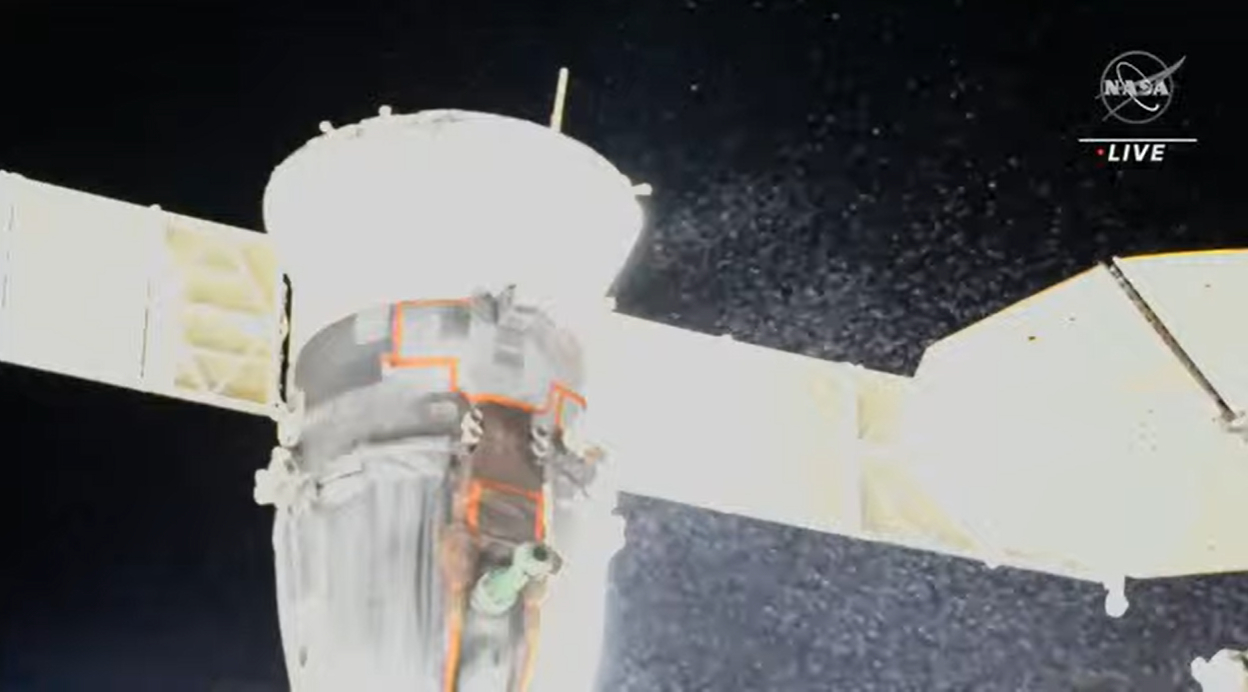
Russia’s space agency Roscosmos has called off a spacewalk by two cosmonauts at the International Space Station today after an apparent coolant leak on a Soyuz MS-22 crew capsule spewed coolant around its docking port on the orbiting lab.
The leak was first detected at 7:45 p.m. EST (0045 Dec. 15 GMT) as cosmonauts Sergey Prokopyev and Dmitri Petelin were preparing to exit the space station for a 7-hour spacewalk outside the station. The Soyuz spacecraft launched to the space station on Sept. 21 to deliver the two cosmonauts and NASA astronaut Frank Rubio to the space station and was due to return to Earth size months later.
“The cause of this leak [is] not known at this time,” NASA spokesperson Rob Navias said during live commentary. “Russian specialists are continuing to look at the data and discussing what may have triggered the leak.”
This is a developing story and we’ll share updates as they are available.
International Space Station crew begins unloading SpaceX Dragon science delivery
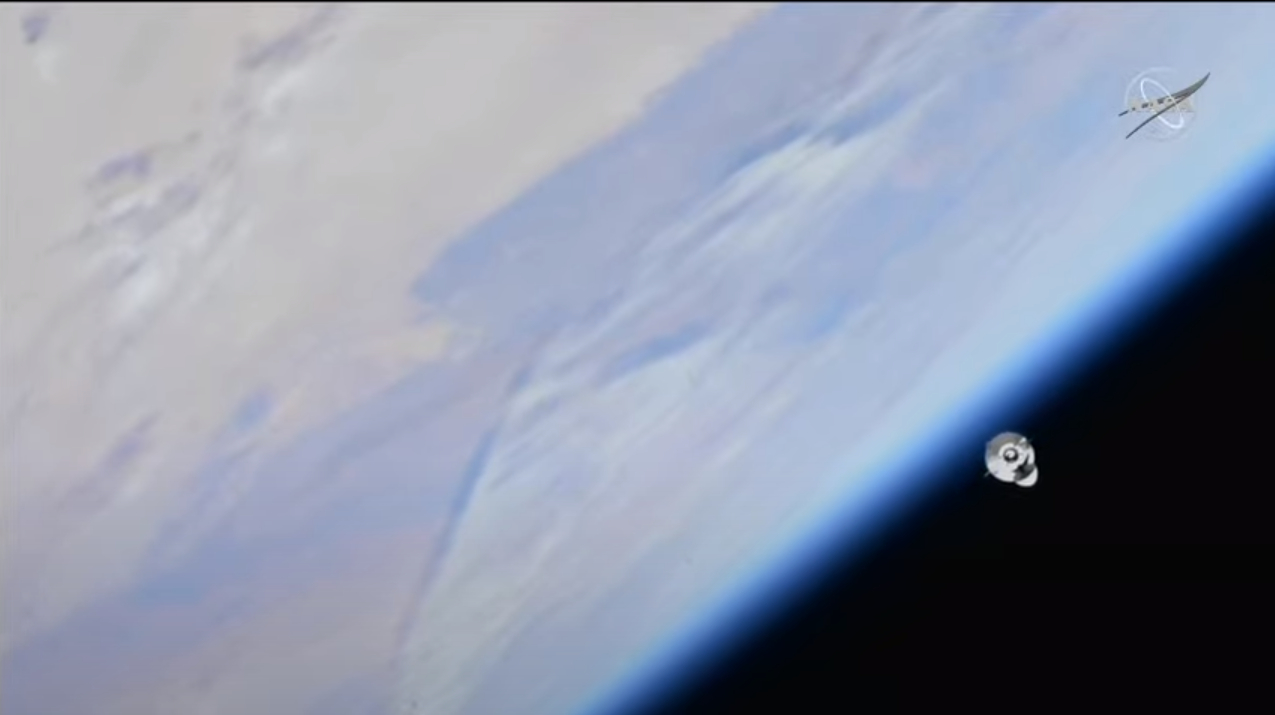
SpaceX-delivered science is being unloaded right now in space. The robotic Dragon spacecraft docked with the International Space Station Sunday (Nov. 27) around 7:39 a.m. EST (1239 GMT) over the Pacific Ocean.
“We’re excited to unpack and get to work,” NASA astronaut Josh Cassada radioed Mission Control from the station after the successful docking.
Dragon has about 7,700 pounds (3,500 kilograms) of cargo. The manifest includes two new International Space Station Roll Out Solar Arrays (iROSAs) to boost power on the solar wings. Scientific experiments were also prominent, including a study to grow dwarf cherry tomatoes and another to do microgravity research with 3D-cultured heart tissue (opens in new tab).
Read more: SpaceX Dragon cargo ship docks at space station to deliver solar arrays, seeds and more
International Space Station crew completes two spacewalks
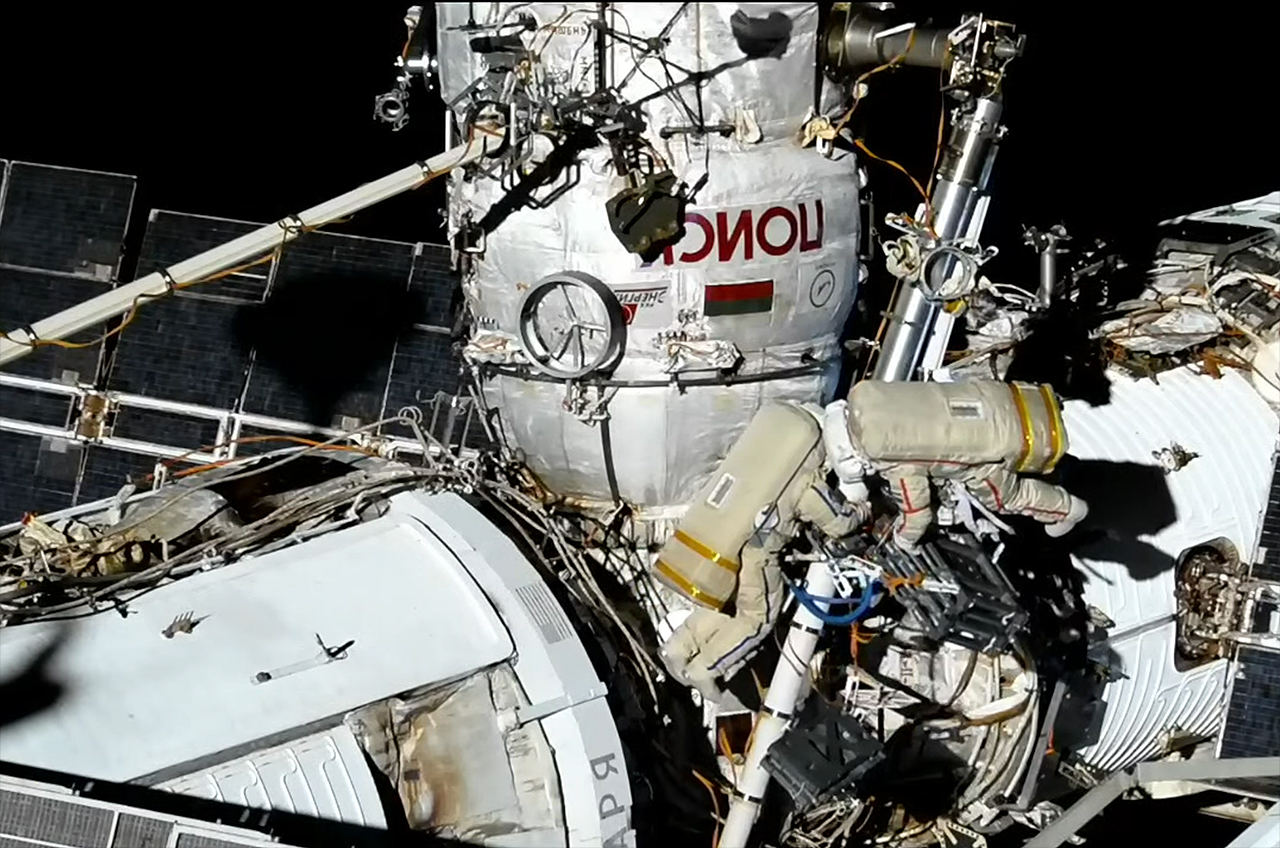
Astronauts and cosmonauts at the International Space Station completed two spacewalks this week amid a lot of other station activities in November.
On Thursday (Nov. 17), Expedition 68 commander Sergey Prokopyev and flight engineer Dmitry Petelin, from Russian federal space corporation Roscosmos, finished a 6 hour, 25 minute EVA (extravehicular activity) to prepare an airlock and radiator to transfer between space station modules.
On Tuesday (Nov. 15), Expedition 68 NASA astronauts Josh Cassada and Frank Rubio worked together on Tuesday (Nov. 15) added hardware to support two more upgraded solar arrays during a 7 hour and 11 minute EVA.
It’s been a busy few weeks for the space station, as the crew also received a Northrop Grumman Cygnus spacecraft on Nov. 9, which reached the ISS safely despite a solar array problem. And at least one U.S. astronaut, Josh Cassada, voted from space during the 2022 midterm election.
SpaceX will fly two Saudi astronauts to International Space Station on Axiom-2
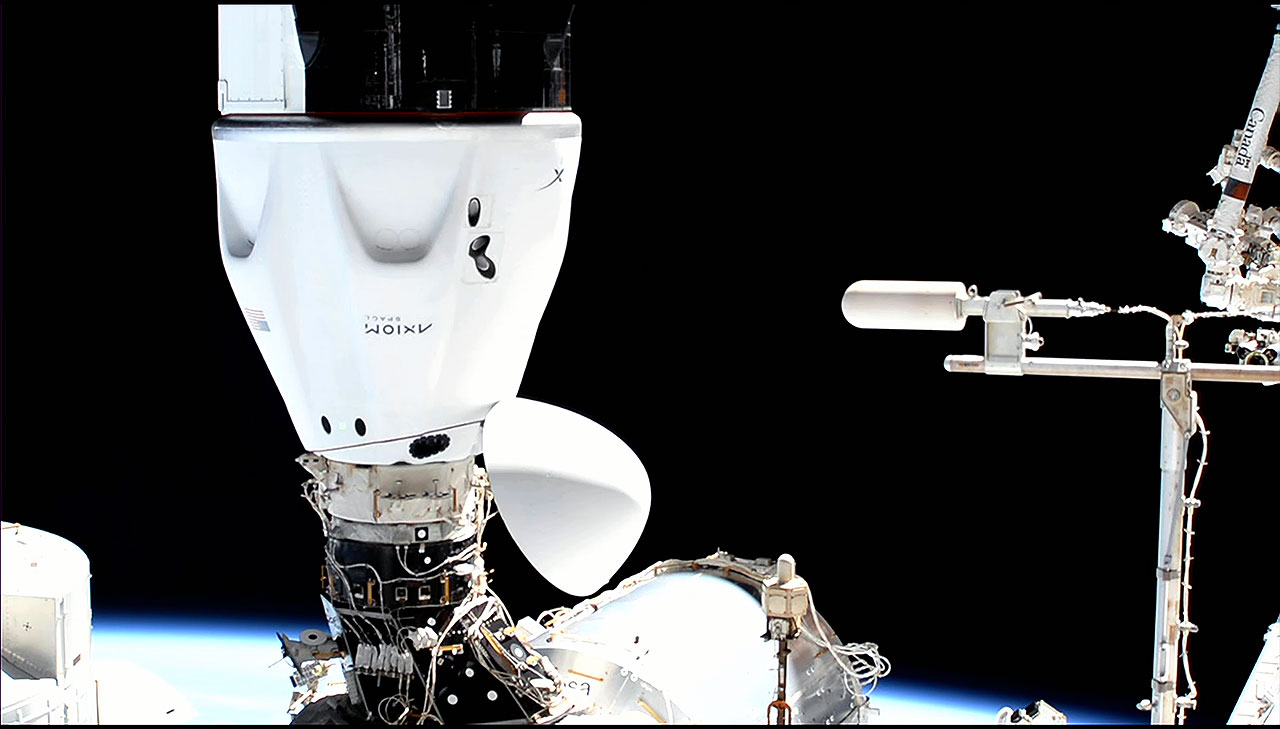
NASA and Houston-based company Axiom Space will send Saudi astronauts aboard Ax-2, fully filling out the four seats for the SpaceX mission, according to SpaceNews (opens in new tab). The group will fly to the International Space Station following the first-ever private effort, Ax-1, that launched and landed in April.
Read more: SpaceX will fly 2 Saudi astronauts to space station on private Axiom Space mission
Russian space debris is still haunting the International Space Station a year later

It’s been nearly a year since a Russian anti-satellite test took place on Nov. 15, 2021, which has caused swarms of debris to threaten the International Space Station numerous times already. That happened once again earlier this week.
On Monday (Oct. 24) at 8:25 p.m. EDT (0025 GMT on Oct. 25), the ISS team fired thrusters on Progress 81, a Russian cargo ship attached to the station, to boost the station’s orbit and avoid the debris fragment, NASA officials stated (opens in new tab).
Read more: International Space Station dodges space debris from Russian anti-satellite test
Teamwork and a ‘2001’ cosplay
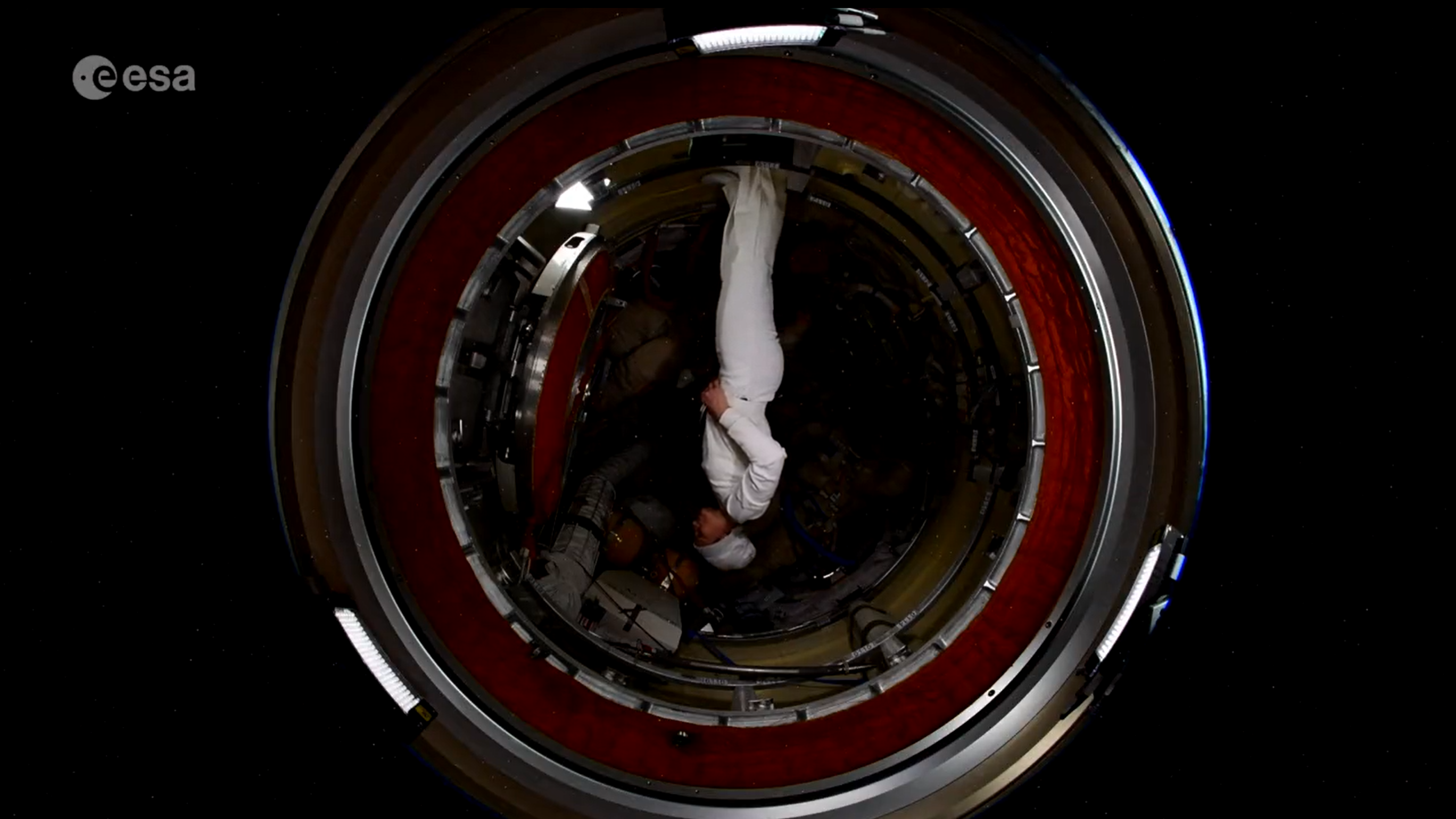
Expedition 67 commander Samantha Cristoforetti had a cosplay strategy in orbit. The Italian astronaut, despite having seen “about 15 movies”, is a fan of the classic 1968 space opera film “2001: A Space Odyssey.”
A visit to a thrift store, and consultations with SpaceX and fellow space station residents,, helped on her long-standing quest to build up teamwork in orbit, while replicating an iconic scene from the film during which a flight attendant hangs upside down in a hatch.
“That is not something that I would buy for myself, normally,” the European Space Agency astronaut told Space.com of her costume during a post-flight press conference with other SpaceX Crew-4 members on Thursday (Oct. 20). “But it seemed to fit perfectly for that need.”
Crew-4 astronauts out of spacecraft as recovery concludes
The Crew-4 astronauts are all out of their SpaceX spacecraft as they start recovery back on Earth: NASA’s Kjell Lindgren, Bob Hines and Jessica Watkins along with the European Space Agency’s Samantha Cristoforetti. You can read more about the successful International Space Station mission, which lasted 5.5 months, in our wrap story on the mission.
Crew-4 splashes down
The SpaceX Crew-4 splashed down successfully near Jacksonville, Florida at 4:55 p.m. EDT (2055 GMT).
Crew-4 jettisons trunk successfully
The SpaceX Crew-4 has jettisoned the “trunk”, an unpressurized cargo hold that also supports Crew Dragon during space operations. The International Space Station crew of four remains on track for splashdown near Jacksonville, Florida at 4:55 p.m. EDT (2055 GMT). You can watch live at Space.com, courtesy of NASA Television.
Crew-4 finishes ‘prop waste’ burn on journey home
SpaceX‘s Crew-4 successfully finished a normal “prop waste” burn on the journey home to get rid of excess propellant ahead of re-entry. They finished the seven-minute engine burn at 2:44 p.m. EDT (1844 GMT) and remain on track to splash down near Jacksonville, Florida at 4:55 p.m. EDT (2055 GMT).
Crew-4 undocks from International Space Station
The SpaceX Crew-4 undocked from the International Space Station at 12:05 p.m. EDT (1605 GMT) and prepared for a set of departure burns ahead of splashdown. Nominal splashdown is expected later today around 4:55 p.m. EDT (2055 GMT) near Jacksonville, Florida. You can watch live here at Space.com, courtesy of NASA Television.
Crew-4 delays undocking to 12:05 p.m. EDT
Crew-4 will delay their undocking from the International Space Station about 30 minutes to 12:05 p.m. EDT (1605 GMT) to “check the hatch alignment” on their SpaceX Crew Dragon spacecraft, according to NASA Television.
NASA has not yet disclosed if the splashdown time will change, except to say there is a one-hour window for undocking and the timing now falls in the middle of that window. Splashdown is expected at roughly 4:55 p.m. EDT (2055 GMT). Live coverage is ongoing here at Space.com, courtesy of NASA Television.
Crew-4 closes hatch to International Space Station
SpaceX Crew-4 has closed the hatch to the International Space Station ahead of an expected undocking at 11:35 a.m. EDT (1535 GMT) for splashdown later today. Watch live here at Space.com, courtesy of NASA Television.
Crew-4 prepares to close spacecraft hatch
The astronauts of Crew-4 are scheduled to close the hatch to their SpaceX Crew Dragon spacecraft at 9:30 a.m. EDT (1330 GMT) as they prepare to depart the International Space Station for a splashdown later today. You can watch live here at Space.com, courtesy of NASA Television.
Crew-4 undocking delayed to Friday (Oct. 14)
Crew-4’s undocking will be delayed to no earlier than Friday (Oct. 14) at 11:35 a.m. EDT (1535 GMT), officials announced on NASA Television today (Oct. 13) due to poor weather conditions in Florida. Splashdown is also delayed from an expected timing of today. You can watch the events live here at Space.com, courtesy of NASA Television.
SpaceX Crew-4 mission departure delayed due to weather
Tricky weather conditions at the splashdown site forced a delay in Crew-4’s departure from the International Space Station. Crew-4’s Dragon capsule, named Freedom, is scheduled to undock from the orbiting lab Thursday at 10:05 a.m. EDT (1405 GMT), NASA officials said in a blog post (opens in new tab) Wednesday (Oct. 13). This is a delay from Wednesday evening due to weather. You can watch coverage live at Space.com, courtesy of NASA TV and SpaceX.
During departure remarks and the change-of-command ceremony earlier today, Expedition 68 commander Samantha Cristoforetti thanked her “space ninja” crew for support during the two weeks she commanded the orbiting complex. “I just want to say what a privilege it’s been to serve as a commander for this short period of time — short but intense,” Cristoforetti, the first European female to command ISS, said during the broadcast.
Crew-4 gives farewell remarks before ISS departure
At 10:05 a.m. EDT (1405 GMT), the four Crew-4 astronauts will give some farewell remarks. And one of them — European Space Agency astronaut Samantha Cristoforetti, the current ISS commander — will hand the reins of the orbiting lab over to Russian cosmonaut Sergey Prokopyev during a change-of-command ceremony around that same time.
Crew-4’s Dragon capsule, named Freedom, is scheduled to undock from the orbiting lab Wednesday at 7:05 p.m. EDT (2305 GMT), NASA officials said in an emailed statement on Tuesday evening (Oct. 11). You can watch it live here at Space.com, courtesy of NASA, or directly via the space agency (opens in new tab).
Read more: Watch SpaceX Crew-4 mission depart space station today (Oct. 12)
Crew-5 arrives at International Space Station
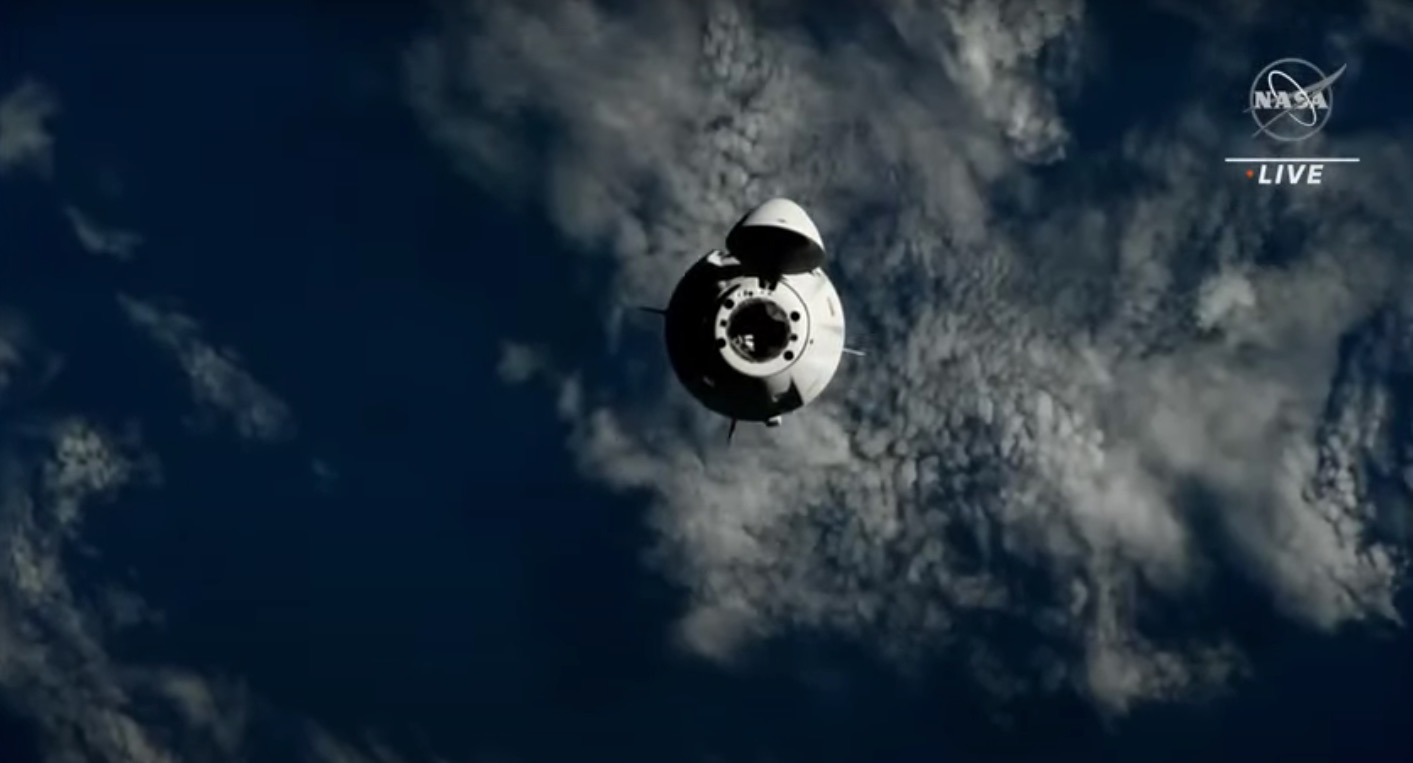
The SpaceX Crew Dragon spacecraft safely delivered Crew-5 to the International Space Station. The hatches between Endurance and the ISS opened around 6:45 p.m. EDT (2245 GMT) on Thursday (Oct. 7), and the Crew-5 astronauts — NASA’s Nicole Mann and Josh Cassada, Japan’s Koichi Wakata and cosmonaut Anna Kikina — came aboard roughly 10 minutes later.
Read more: SpaceX’s Crew-5 astronaut mission arrives at the International Space Station
Hurricane Ian spotted from International Space Station after Florida landfall
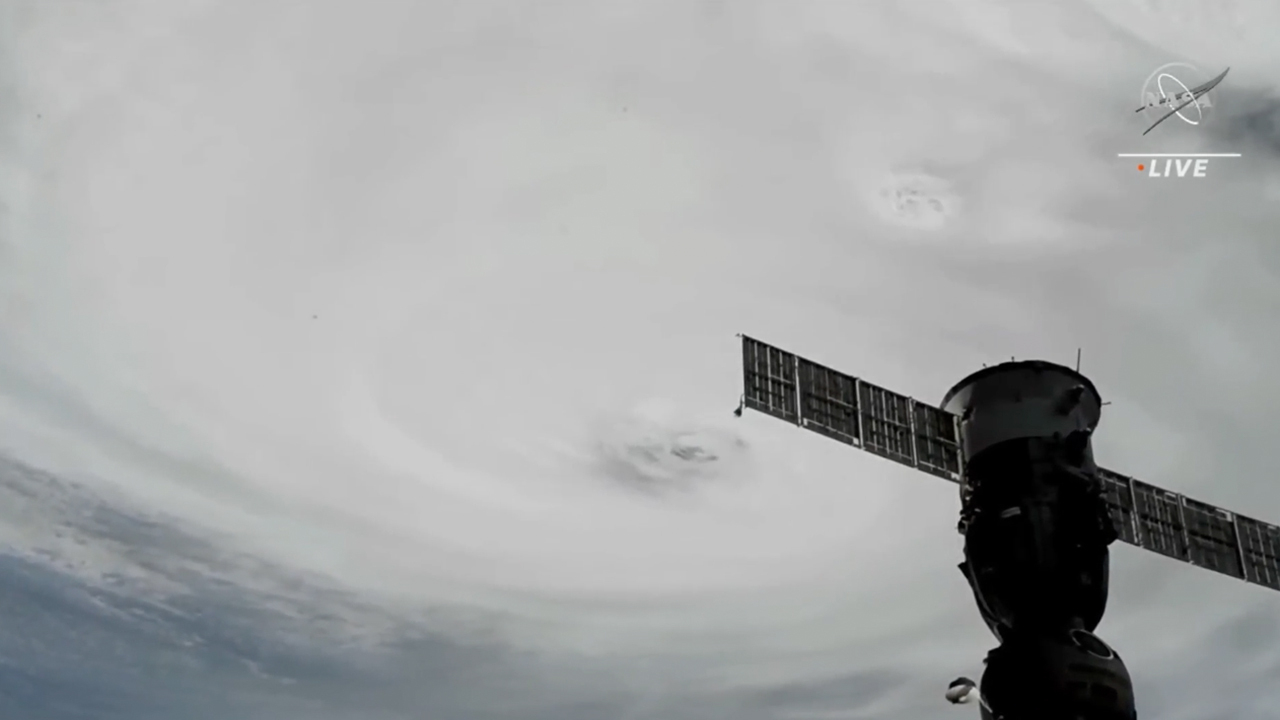
NASA cameras on the International Space Station showed live views of Hurricane Ian as the storm surge reached Florida’s coast Wednesday (Sept. 28), near Cayo Costa, according to the National Hurricane Center.
“Hurricane Ian has made landfall as an extremely dangerous hurricane near Cayo Costa, Florida with maximum sustained winds at 150 mph,” NHC officials wrote (opens in new tab) in an update on Twitter at 3:05 p.m. EDT (1905 GMT).
Full story: ‘Extremely dangerous’ Hurricane Ian makes landfall in Florida as NASA watches from space (video)
First European female commander helms International Space Station
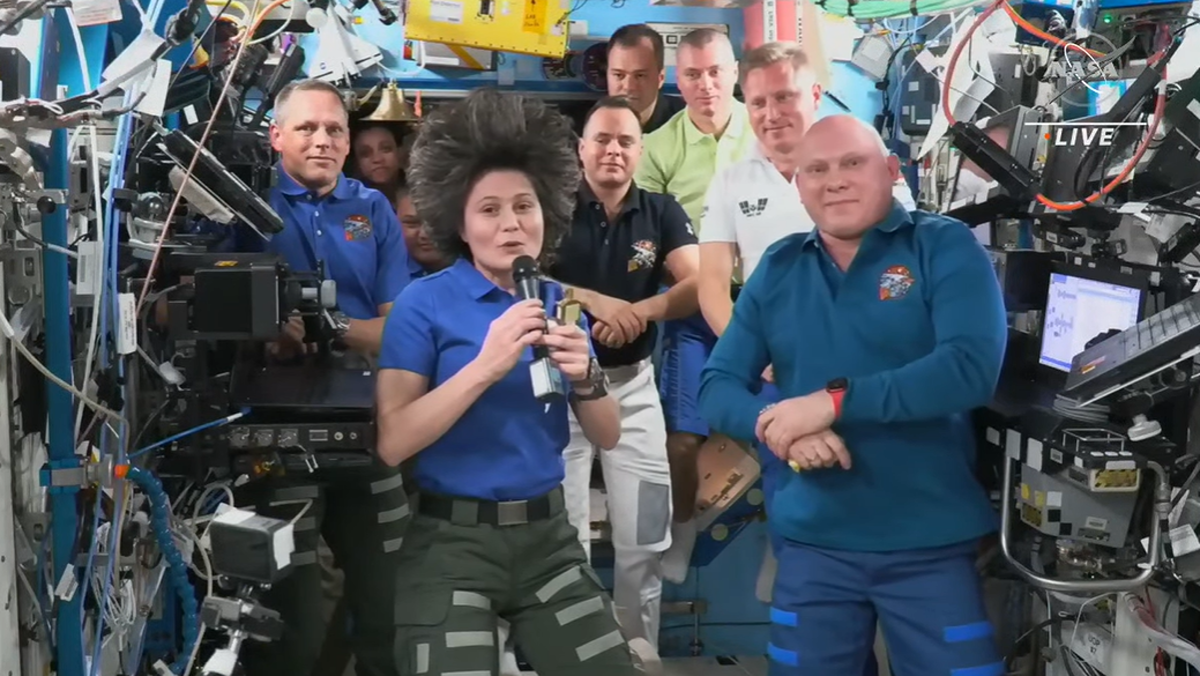
Italian astronaut Samantha Cristoforetti took command of the International Space Station and Expedition 68 in a ceremony today (Sept. 28) livestreamed from orbit.
The expedition officially begins when previous ISS commander Oleg Artemyev and fellow cosmonauts Denis Matveev and Sergei Korsakov depart the orbiting lab early Thursday (Sept. 29) aboard a Russian Soyuz spacecraft.
Cristoforetti is the fifth European commander (opens in new tab) of the ISS, following Frank De Winne, Alexander Gerst, Luca Parmitano and Thomas Pesquet, according to the European Space Agency (ESA).
Artemyev struck notes of peace during the changeover ceremony, closing an expedition that had taken place in its entirety during the ongoing Russian invasion of Ukraine that started in February. “War will end everywhere,” he said at one point.
“In spite of everything, in spite of all the storms on Earth, we continue our international cooperation, and thank God that there are smart people who do not stop such a thread of peace,” Artemyev added in Russian. (This translation was provided by Google from an automated transcript of his speech.)
Full story: European woman takes command of International Space Station for 1st time
Hurricane Ian delays SpaceX Crew-5 launch
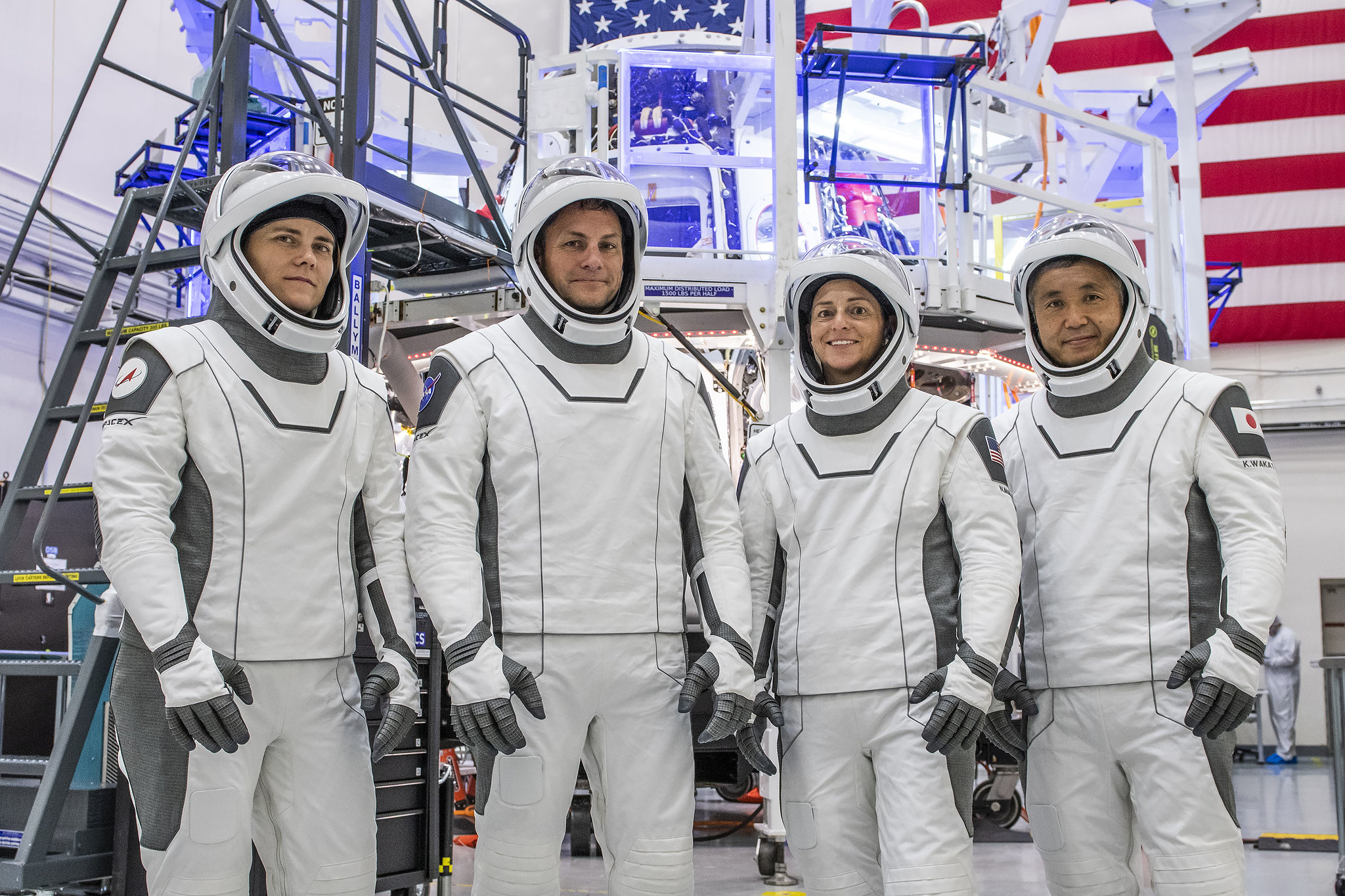
SpaceX and NASA will push back the Crew-5 flight to the International Space Station to Oct. 4 at the least, a day later than planned.
The mission is scheduled to launch from Pad 39A at Kennedy Space Center (KSC) in Florida. But Hurricane Ian, which may be ‘catastrophic’ to Florida as some officials termed it, has delayed the launch; the new target date is uncertain.
“Mission teams will continue to monitor the impacts of Ian on the Space Coast and NASA’s Kennedy Space Center in Florida and could adjust the launch date again, as necessary,” NASA officials wrote in an update (opens in new tab) Tuesday (Sept. 27).
Read more: Hurricane Ian delays SpaceX’s Crew-5 astronaut launch to Oct. 4
SpaceX Crew-5 astronauts ready for launch
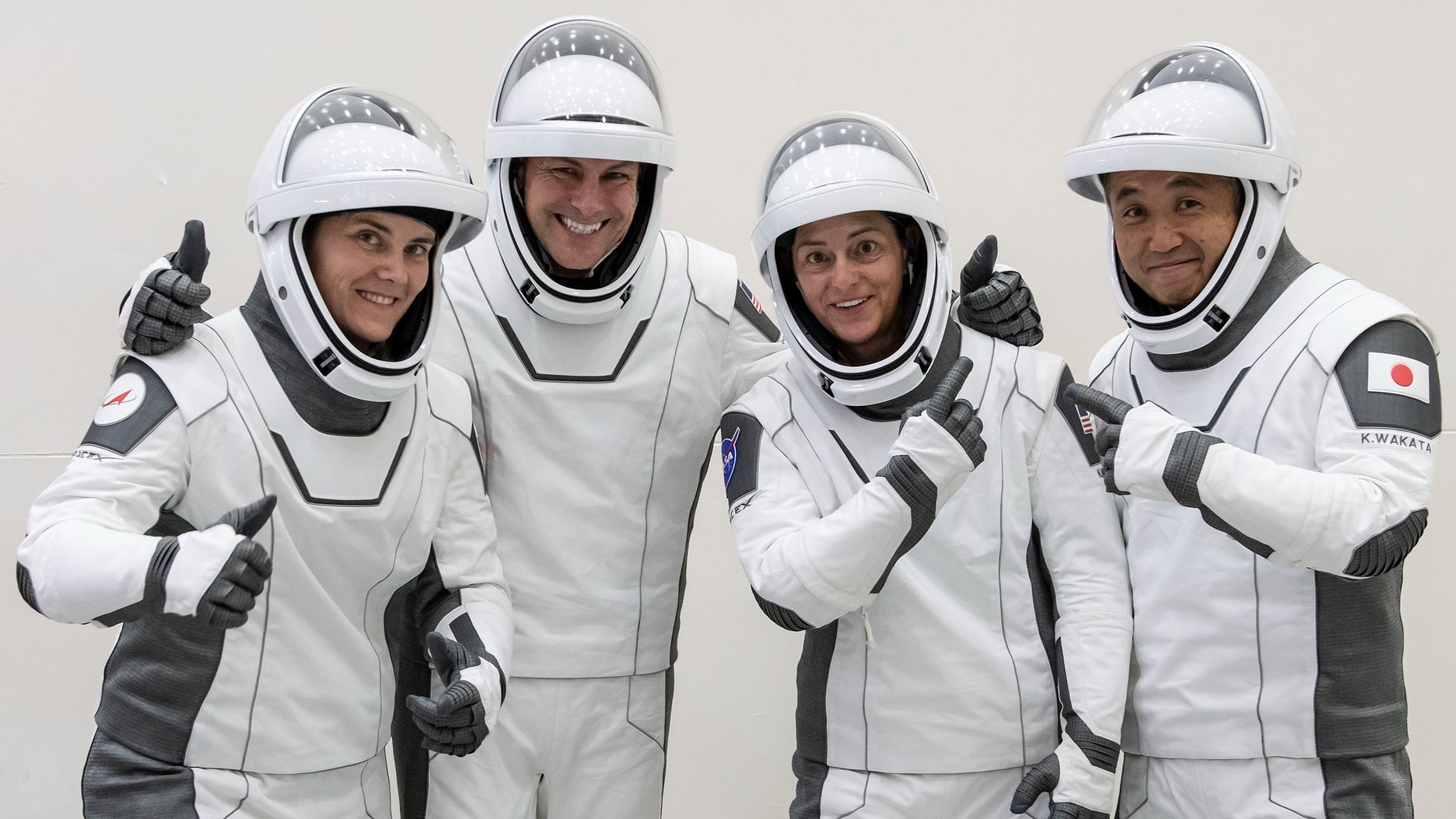
The three astronauts and Russian cosmonaut of Crew-5 may launch as soon as Oct. 3 on a historic mission to the International Space Station. Not only is it the first time a Russian cosmonaut took a seat on a SpaceX spacecraft, but the mission is launching at a time when American and Russian relations are strained due to the ongoing invasion of Ukraine.
Read more: NASA’s SpaceX Crew-5 astronauts ready for historic mission
Hatch opens, new Soyuz crew welcomed to International Space Station
A NASA astronaut and two Russian cosmonauts aboard a Russian Soyuz spacecraft successfully opened the hatch to the International Space Station on Wednesday (Sept. 21) at 3:34 p.m. EDT (1934 GMT).
The Expedition 67 crew will soon do a formal welcome and safety briefing for NASA astronaut Frank Rubio, and Roscosmos cosmonauts Sergey Prokopyev and Dmitri Petelin. Coverage is ongoing on NASA Television (opens in new tab).
The crew had a swift trip to orbit, taking just two orbits and three hours to reach their destination after launching at 9:54 a.m. EDT (1354 GMT) earlier today. You can also read our full story on the launch.
Soyuz docks at International Space Station
NASA astronaut Frank Rubio and Roscosmos cosmonauts Sergey Prokopyev and Dmitri Petelin docked their Soyuz crew ship to the station’s Rassvet module at 1:06pm ET today. https://t.co/JoYQjM2QxOSeptember 21, 2022
A Russian Soyuz spacecraft successfully docked at the International Space Station on Wednesday (Sept. 21) at 1:06 p.m. EDT (1706 GMT) after just two orbits and three hours in space, which is a super-speedy trip.
The Expedition 67 crew will soon welcome the new arrivals to the orbiting complex: NASA astronaut Frank Rubio, and Roscosmos cosmonauts Sergey Prokopyev and Dmitri Petelin.
The hatch opening will be broadcast at about 3:30 p.m. EDT (1930 GMT) live on NASA Television (opens in new tab). You can also read our full story on the launch.
International Space Station astronauts spot Soyuz launch
We had a spectacular view of the #Soyuz launch! Sergey, Dmitry and Frank will come knocking on our door in just a couple of hours… looking forward to welcoming them to their new home! #MissionMinerva pic.twitter.com/b6PP8L6AElSeptember 21, 2022
The International Space Station Expedition 67 crew saw the successful Russian Soyuz spacecraft launch of three crewmates earlier this morning.
European Space Agency astronaut Samantha Cristoforetti captured imagery of the launch at 9:54 a.m. EDT (1354 GMT), which she shared on Twitter from orbit (opens in new tab). “Looking forward to welcoming them to their new home,” she said of the upcoming trio.
NASA astronaut Frank Rubio and Roscosmos cosmonauts Sergey Prokopyev and Dmitri Petelin are about to perform docking, which you can watch live on NASA Television (opens in new tab). You can also read our full story on the launch.
NASA astronaut, two Russian cosmonauts launch to International Space Station
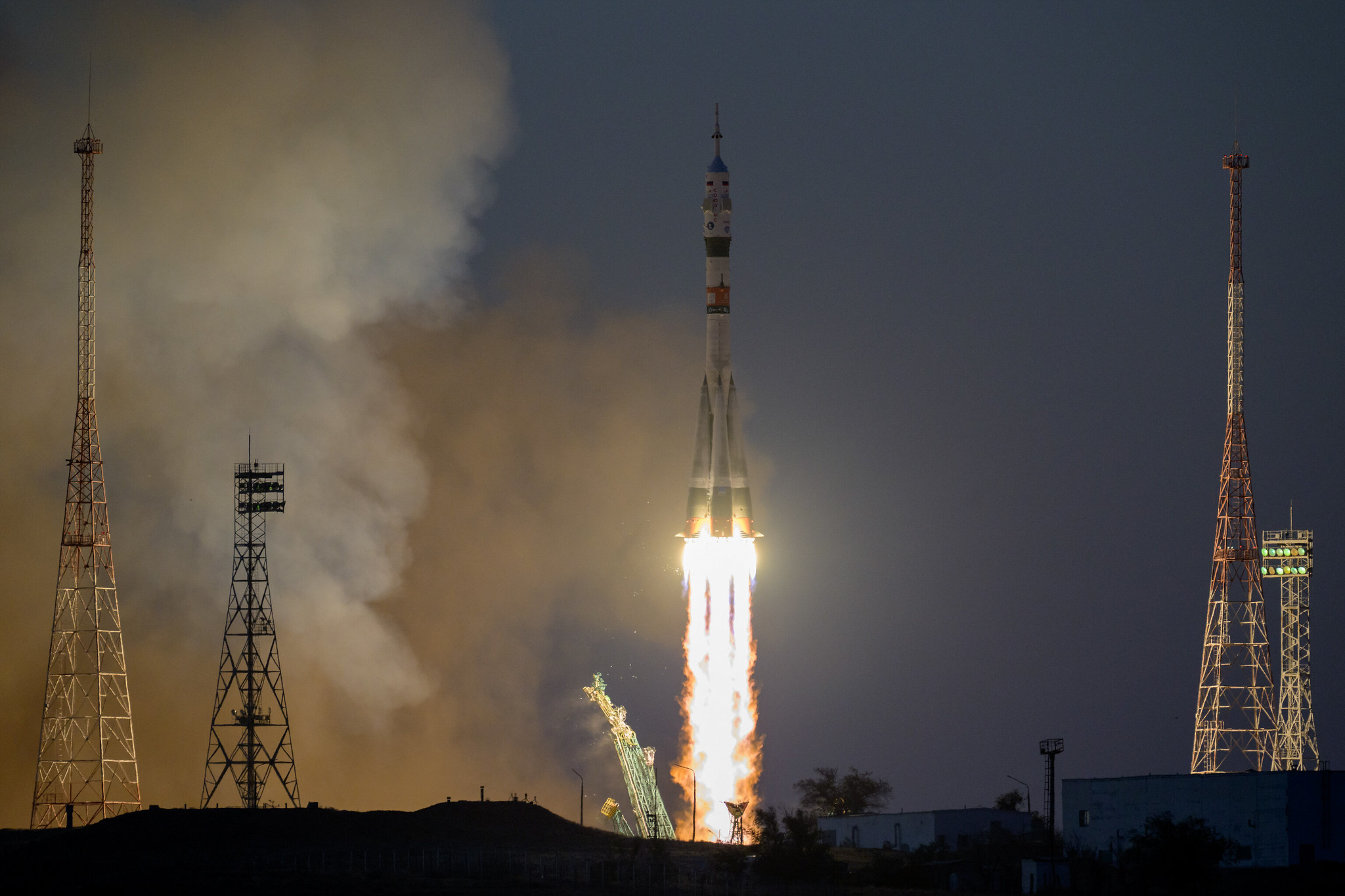
NASA astronaut Frank Rubio and Roscosmos cosmonauts Sergey Prokopyev and Dmitri Petelin launched to the International Space Station today from the Russian-run Baikonur Cosmodrome in Kazakhstan at 9:54 a.m. EDT (1354 GMT or 6:54 p.m. local time in Baikonur.)
The trio are now in their preliminary orbit. They will take just just two orbits and three hours to reach the ISS. The Soyuz will then dock and the hatches connecting the two spacecraft should open two hours later.
Read our preview story to see timings on all the events today, as well as coverage times on NASA Television (opens in new tab).
NASA requests two additional private International Space Station missions
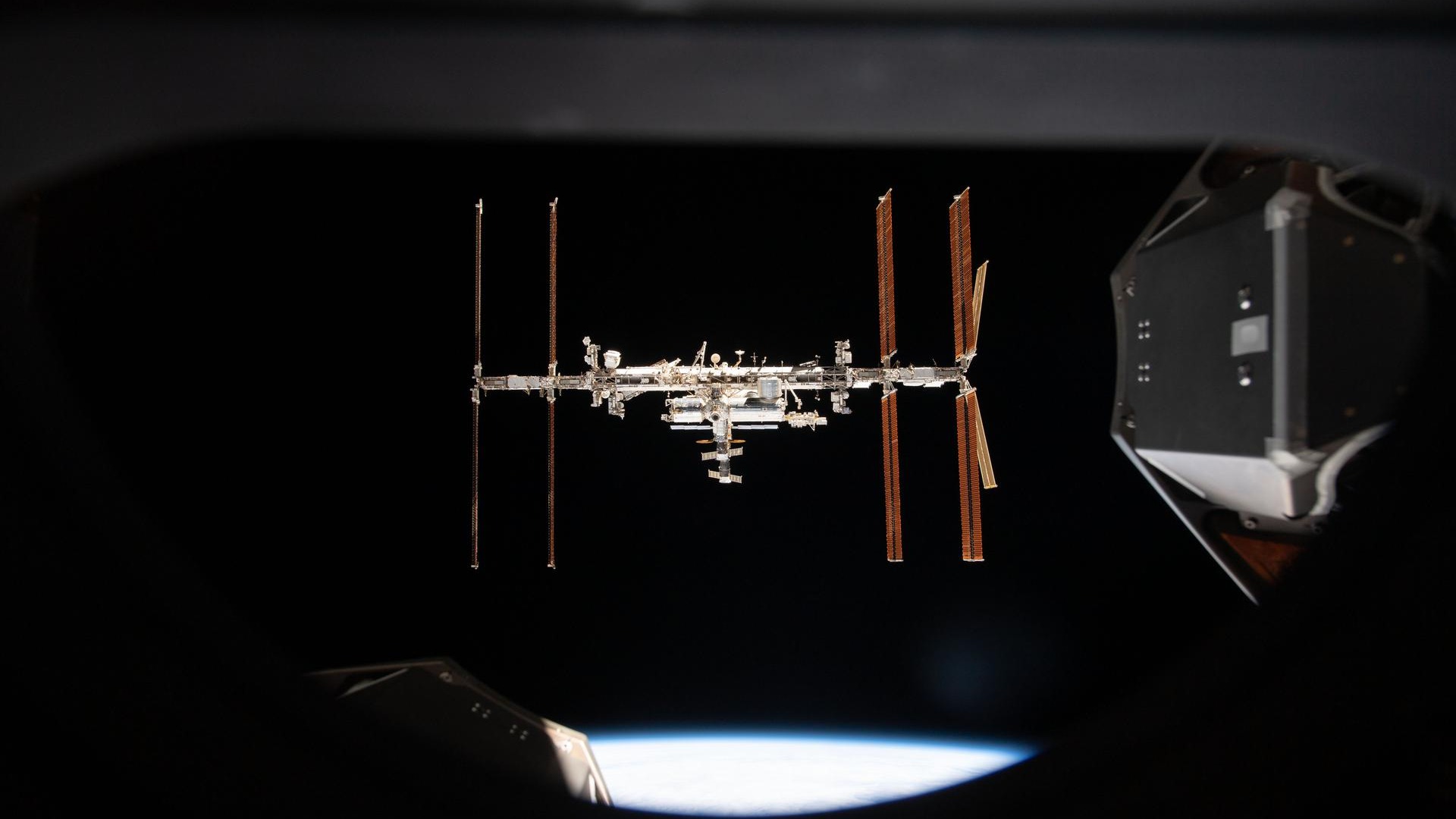
NASA said Wednesday (Sept. 14) that it has asked private industry for proposals for two private missions to the International Space Station (ISS) that will run between late 2023 and 2024.
It’s not the first time such a mission has happened; the Houston-based company Axiom Space sent three paying customers and a retired NASA spaceflyer to the ISS earlier this year on a mission called Ax-1, and a second mission is booked with Axiom for next year.
Full story: NASA requests 2 new private astronaut missions to International Space Station
International Space Station spacewalk concludes
NASA is concluding coverage of an International Space Station (ISS) spacewalk that saw a robotic arm and a big boom being manipulated in orbit.
Expedition 67 commander Oleg Artemyev and flight engineer Denis Matveev easily finished and exceeded their assigned spacewalk tasks during a 7 hour, x minute that began at 9:25 a.m. EDT (1325 GMT).
The duo blazed through the remaining tasks left over from an Aug. 17 spacewalk cut short due to a power issue in a spacesuit; the spacesuits, incidentally, worked perfectly this time during the 7 hour, 47 minute spacewalk.
“You completed more than you set out to do! Very productive,” a representative from Moscow Mission Control told the cosmonauts just after they closed the hatch. (The transmission was in Russian; interpretation was available in English on NASA Television.)
The cosmonauts concluded several configuration tasks for the European Robotic Arm and in one of several get-ahead activities, extended the Strela crane boom between the Poisk and FGB modules on the Russian side of the ISS.
Read more: Russian spacewalkers test European robotic arm on the space station Friday
Watch two cosmonauts spacewalking live before they go inside
Two Russian cosmonauts are wrapping up their tasks outside the International Space Station, but you still have time to watch them live. NASA Television (opens in new tab) is broadcasting the spacewalk, which started this morning at 9:25 a.m. EDT (1325 GMT).
Expedition 67 commander Oleg Artemyev and flight engineer Denis Matveev are far ahead of schedule and working on get-ahead tasks after configuring the European Robotic Arm. They are now seven hours into what was scheduled to be a 6.5-hour spacewalk.
Russian cosmonauts extend boom on International Space Station
At nearly 6.5 hours into today’s spacewalk, the Russian cosmonauts continue to perform get-ahead tasks outside the International Space Station. They are currently working at extending a boom between the Poisk and core FGB modules on the Russian side of the complex.
Both cosmonauts reported they were feeling great when asked by Russian mission control in Moscow, during a short break before orbital sunrise. (The ISS circles Earth about every 90 minutes.) Their spacewalk was nominally expected to be 6.5 hours; the energetic duo is far ahead of their timeline and continuing their excursion.
Expedition 67 commander Oleg Artemyev and flight engineer Denis Matveev exited the Poisk airlock at 9:25 a.m. EDT (1325 GMT) to work on the European Robotic Arm. Coverage is ongoing on NASA Television (opens in new tab).
Spacewalking cosmonauts pivot to ‘get-ahead’ tasks
More than five hours into today’s International Space Station spacewalk, two cosmonauts are so far ahead of schedule that they are working on “get-ahead tasks,” NASA officials said in an update minutes ago on NASA Television. Coverage is ongoing.
Expedition 67 commander Oleg Artemyev and flight engineer Denis Matveev exited the Poisk airlock at 9:25 a.m. EDT (1325 GMT) to configure a European Robotic Arm and have already executed what they were asked to do for the 6.5-hour spacewalk.
They installed a work platform on the Russian Nauka module, configured a control panel, adjusted the arm’s “end effector” for grasping payloads, and tied down launch restraints and insulation they removed earlier in the spacewalk.
Cosmonauts more than an hour ahead of schedule
At more than four hours into today’s International Space Station spacewalk, the cosmonauts are at least 1 hour and 10 minutes ahead of schedule.
Expedition 67 commander Oleg Artemyev and flight engineer Denis Matveev exited the Poisk airlock at 9:25 a.m. EDT (1325 GMT) and made their way over to the European Robotic Arm, which they are currently configuring for in-orbit use.
So far the cosmonauts have removed and bundled some extra insulation, worked with a control panel and done other configuration activities to get the robotic arm ready for service.
The spacewalk is scheduled for 6.5 hours.
Roscosmos spacewalkers 50 minutes ahead of schedule
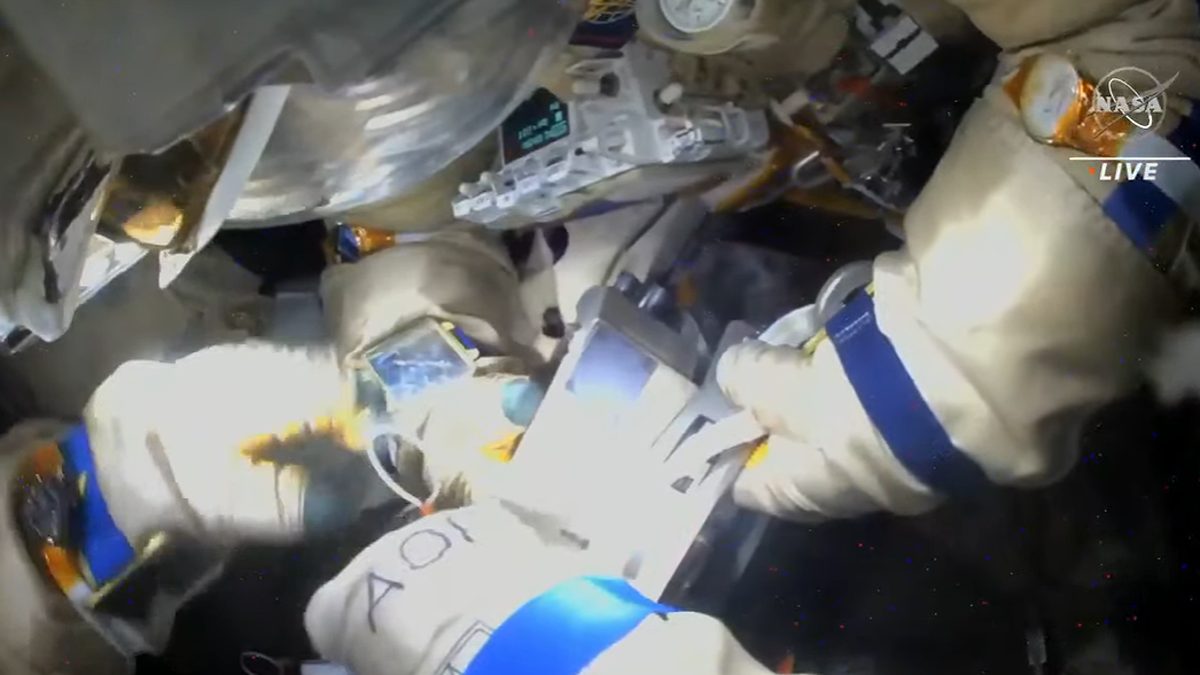
Two Russian cosmonauts working at the International Space Station are 50 minutes ahead of the timeline on their 6.5-hour scheduled spacewalk.
Expedition 67 commander Oleg Artemyev and flight engineer Denis Matveev, who exited the Russian Poisk module at 9:25 a.m. EDT (1325 GMT), are approximately three hours into their effort to configure the European Robotic Arm.
They have removed an external control panel on the arm and are now working on removing and bundling insulation, NASA officials said in an update.
Coverage continues live on NASA Television (opens in new tab).
Read more: Watch Russian spacewalkers test European robotic arm on the space station Friday
Russian cosmonauts see forest fires from space
Two Russian cosmonauts commented on the powerful forest fires raging in the western United States from their vantage point during a spacewalk at the International Space Station.
“You can see those forest fires. That is impressive,” one of the spacewalkers commented shortly before 11:20 a.m. EDT (1520 GMT), as the extra vehicular activity approaches its second hour. (He was speaking in Russian; the English interpretation came through NASA.)
They were referring to powerful forest fires raging in California amid heat warnings that are forcing evacuations nearby Los Angeles.
Expedition 67 commander Oleg Artemyev and flight engineer Denis Matveev are finishing up tasks they could not complete in August after a spacewalk was cut short due to a spacesuit power issue.
The duo are configuring the European Robotic Arm ahead of operations. They have removed a protective cover and are now working on a control panel to get the arm set up after its first ground control test a few days ago.
Read more: Watch Russian spacewalkers test European robotic arm on the space station Friday
Russian cosmonaut spacewalkers approach the International Space Station worksite
Approximately one hour into an International Space Station spacewalk, Expedition 67 commander Oleg Artemyev and flight engineer Denis Matveev are nearly at their worksite.
The pair will soon be removing protective covers on the European Robotic Arm as part of a larger set of configuration tasks. Coverage is now available on NASA Television (opens in new tab) as the conflicting briefing on the main channel has concluded.
Read more: Watch Russian spacewalkers test European robotic arm on the space station Friday
International Space Station spacewalk begins
Two Russian cosmonauts officially exited the Poisk module of the International Space Station at 9:25 a.m. EDT (1325 GMT), NASA just announced on NASA Television’s media channel.
Expedition 67 commander Oleg Artemyev and flight engineer Denis Matveev are scheduled to spend 6.5 hours outside to configure the European Robotic Arm. This excursion comes after the duo had to cut a spacewalk short in August due to a power issue.
Read more: Watch Russian spacewalkers test European robotic arm on the space station Friday
Coverage begins on International Space Station spacewalk
Live from the International Space Station, NASA TV’s media channel is now carrying coverage of today’s spacewalk, which is expected to start around 9:20 a.m. EDT (0130 GMT) and to last 6.5 hours.
Two Russian spacewalkers will continue to configure a robotic arm in space and will complete unfinished tasks from another spacewalk in August that was cut short after a spacesuit power fluctuation.
Read more: Watch Russian spacewalkers test European robotic arm on the space station Friday
Former NASA chief expresses concern about ISS transition
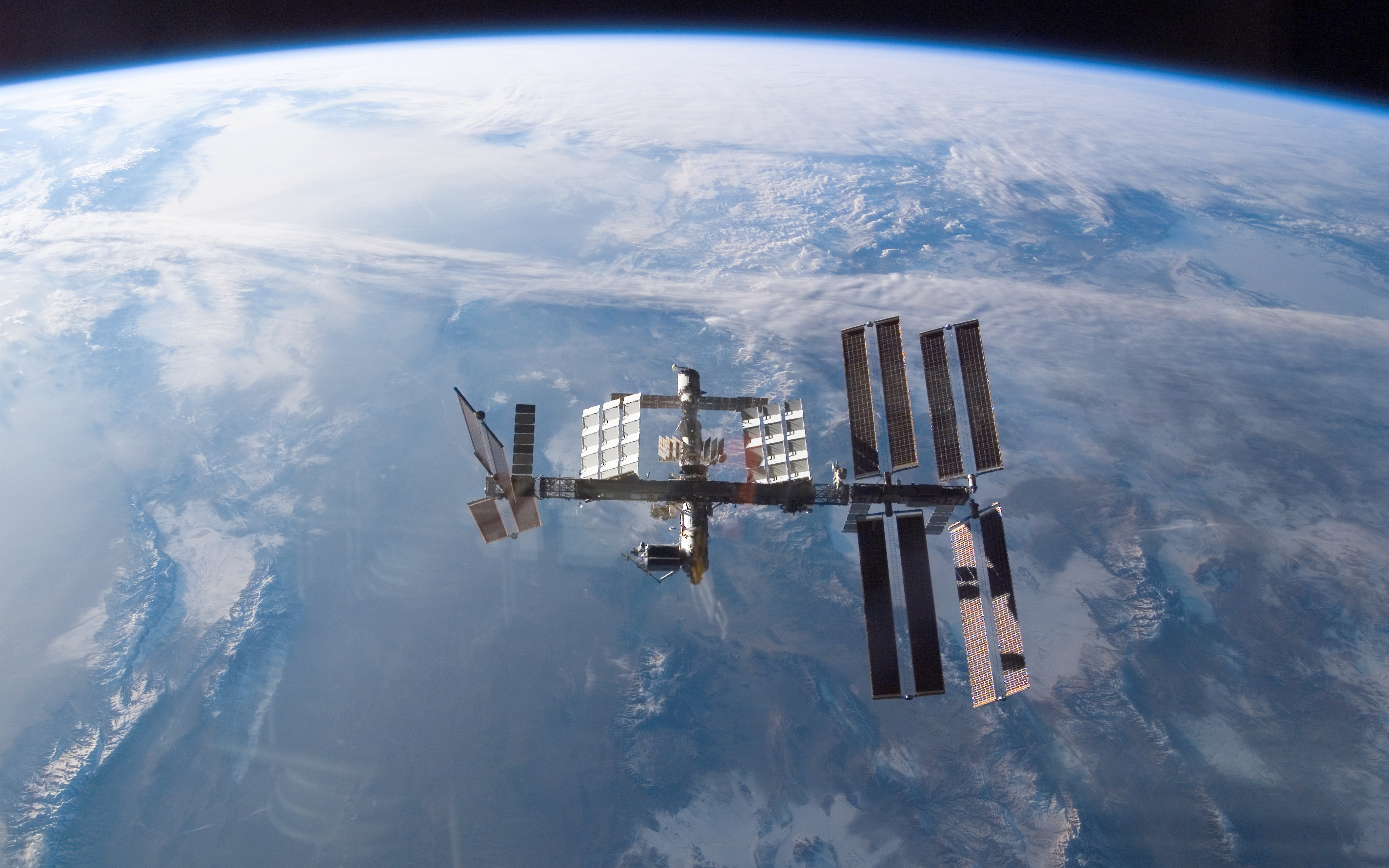
A former Trump-era NASA administrator says Congress needs to do more to have commercial space stations ready in time.
During a livestream on Sunday, former chief Jim Bridenstine, who led NASA between April 2018 and January 2021, said Congress is moving too slowly on approving replacements to the International Space Station (ISS), especially given Russia is now saying it will pull out after 2024 to focus on building a Russian-owned space station.
He expressed worry that NASA-funded commercial stations will not be ready in time to fill gaps in low Earth orbit research. (The agency is banking on the ISS partnership being extended to 2030, from 2024, to allow time for those replacements to get up and running.)
“Congress, quite frankly, is at fault for any gap we have on low Earth orbit, because they have been negligent in a replacement for the International Space Station,” Bridenstine said. “We’ve known forever that it [the ISS] is not going to last forever, but we haven’t been doing what’s necessary to prevent the gap from happening. Now that gap seems to be accelerating, and nobody is talking about it.”
Full story: Former NASA chief criticizes ‘schizophrenic’ US space policy regarding Russia
ISS will bring a surgical robot on board in 2024
While it’s no hologram doctor like in “Star Trek”, more surgical assistance will be coming to the International Space Station in just two years. MIRA, or “Miniaturized in vivo Robotic Assistant,” will fly to there on the back of a $100,000 award to the University of Nebraska-Lincoln, through the U.S. Department of Energy’s Established Program to Stimulate Competitive Research (EPSCoR). The test mission will use a microwave-sized experimental locker.
Full story: International Space Station will host a surgical robot in 2024
Expedition 67 crew spots auroras, gets ready for Dragon departure

A solar storm generated auroras within view of the International Space Station crew. “Absolutely SPECTACULAR aurora today!!!,” NASA astronaut Bob Hines tweeted (opens in new tab), along with several pictures of the sun-generated storm that hit the atmosphere of Earth. “Thankful for the recent solar activity resulting in these wonderful sights.”
The Expedition 67 crew also prepared a SpaceX Dragon spacecraft for departure, which is currently scheduled for Friday (Aug. 19). Read more details about how to watch live here.
Both cosmonauts inside airlock, spacewalk ends
Cosmonauts Denis Matveev and Oleg Artemyev are now both inside the Poisk airlok and have closed the outer hatch as they work to end today’s spacewalk.
The hatch was closed at 1:54p.m. EDT (1754 GMT) to officially end today’s spacewalk early.
Total elapsed spacewalk time: 4 hours, 1 minute of 6 planned hours.
Spacewalk aborted over spacesuit power problem
Russian flight controllers have called off today’s spacewalk outside the International Space Station due to the spacesuit power problem on Oleg Artemev’s Orlan spacesuit. Read our initial story.
“Today’s spacewalk by Oleg Artemyev and Denis Matveev is being ended earlier than planned,” NASA spokesperson Rob Navias said.
Watch the Russian spacewalk live now.
The spacewalk, which began around 9:20 a.m. EDT today, was expected to run about six hours. But about three hours in, Artemyev experienced a spacesuit voltage drop as he and Matveev worked on the station’s new European Robotic Arm. Flight controllers immediately ordered Artemyev back inside the station’s Poisk airlock to plug his suit into the station’s power system.
While Artemyev is inside the Poisk airlock, Matveev has been outside performing clean up tasks. He will not complete the robotic arm prep work due to it being cut short. Flight controllers cautioned Matveev not to rush.
“Take your time, do not be in a hurry,” they said.
Cosmonaut feels good despite spacesuit issue
Russian cosmonaut Oleg Artemyev says he is in good spirits despite a power issue with his Orlan spacesuit. The issue occurred about an hour ago outside the International Space Station as Artemyev and crewmate Denis Matveev worked on the station’s new European Robotic Arm.
Flight controllers asked Artemyev how he felt.
“I’m energized, I’ve had a good nap,” Artemyev said. “I’ve had a good rest.”
He added that he definitely felt better than at the start of the airlock.
Russian flight controllers weigh spacewalk options
Russian flight controllers are placing the space station’s European Robotic Arm into a safe configuration as they discuss whether to continue with today’s spacewalk by cosmonauts Oleg Artemyev and Denis Matveev.
Watch the Russian spacewalk live now.
Artemyev remains inside the Russian-built Poisk airlock with his Orlan spacesuit plugged directly into the station’s power grid while Matveev waits outside. Today’s spacewalk begin at about 9:20 a.m. EDT (1320 GMT) and was expected to last about 6 hours. The spacesuit issue cropped up at about the midpoint of the spacewalk around 12 p.m. EDT.
Cosmonaut suffers spacesuit issue on spacewalk
Russian cosmonaut Oleg Artemyev has been ordered back inside the Poisk airlock after his Orlan spacesuit experienced an unexpected voltage fluctuation during today’s spacewalk, NASA reports.
Russia’s Mission Control ordered Artemyeve to the station’s airlock, where he plugged his suit into the station’s power supply. His spacewalking partner Denis Matveev is waiting outside the airlock as Russian flight controllers discuss the next steps for today’s spacewalk.
“Artemyev is in the airlock, never was in any danger,” NASA spokesperson Rob Navias said.
The issue occurred at about 12 p.m. EDT (1600 GMT), Navias said.
First camera installed, working on second camera installation
As we approach the two-hour mark of today’s International Space Station spacewalk, the two Russian cosmonauts have set up the first elbow camera and removed thermal insulation and a launch restraint from the European Robotic Arm, according to NASA.
They are now waiting for the arm to be maneuvered into the correct configuration to allow for installation of a second elbow camera. The cameras will be useful to allow for correct depth perception of the arm, which is needed to maneuver objects safely in the harsh lighting conditions of space.
Expedition 67 commander Oleg Artemyev, in red stripes, is on his seventh spacewalk and flight engineer Denis Matveev, in blue, is on his third spacewalk. The spacewalkers are expected to spend about 6.5 hours working outside in their Orlan spacesuits. Live coverage continues.
Cosmonauts prepare for camera installation
At the one-hour mark foe spacewalk, the cosmonauts are moving towards the European Robotic Arm in preparation for their first step. Their first major task will be installing one of two “elbow light” cameras to assist the arm with depth perception. Depth perception is crucial in space to allow for accurate grasping and manipulation of objects. The spacewalk is set to last 6.5 hours.
Spacewalk officially begins
The hatch to the Poisk airlock is open, marking the official start to the expected 6.5-hour long spacewalk today.
Expedition 67 commander Oleg Artemyev (in red stripes) and flight engineer Denis Matveev (n blue stripes) officially began their spacewalk at 9:53 a.m. EDT (1353 GMT), according to NASA, putting them about 33 minutes behind when they were expected to start the spacewalk.
Their goal is to continue preparing the European Robotic Arm for operations.
Two Russian cosmonauts prepare to depart ISS for spacewalk
Two Russian cosmonauts will continue working on the European Robotic Arm in a spacewalk today (Aug. 17).
Expedition 67 commander Oleg Artemyev (in red stripes) and flight engineer Denis Matveev (n blue stripes) are scheduled to start their 6.5-hour International Space Station spacewalk around 9:20 a.m. EDT (1320 GMT), according to NASA (opens in new tab).
You can watch live here at Space.com in the link above, on NASA’s YouTube (opens in new tab)(opens in new tab) channel or directly at NASA’s website (opens in new tab).
Read more: Watch Russian spacewalkers boot up a European robotic arm on the International Space Station today
President Biden approves ISS extension act to 2030
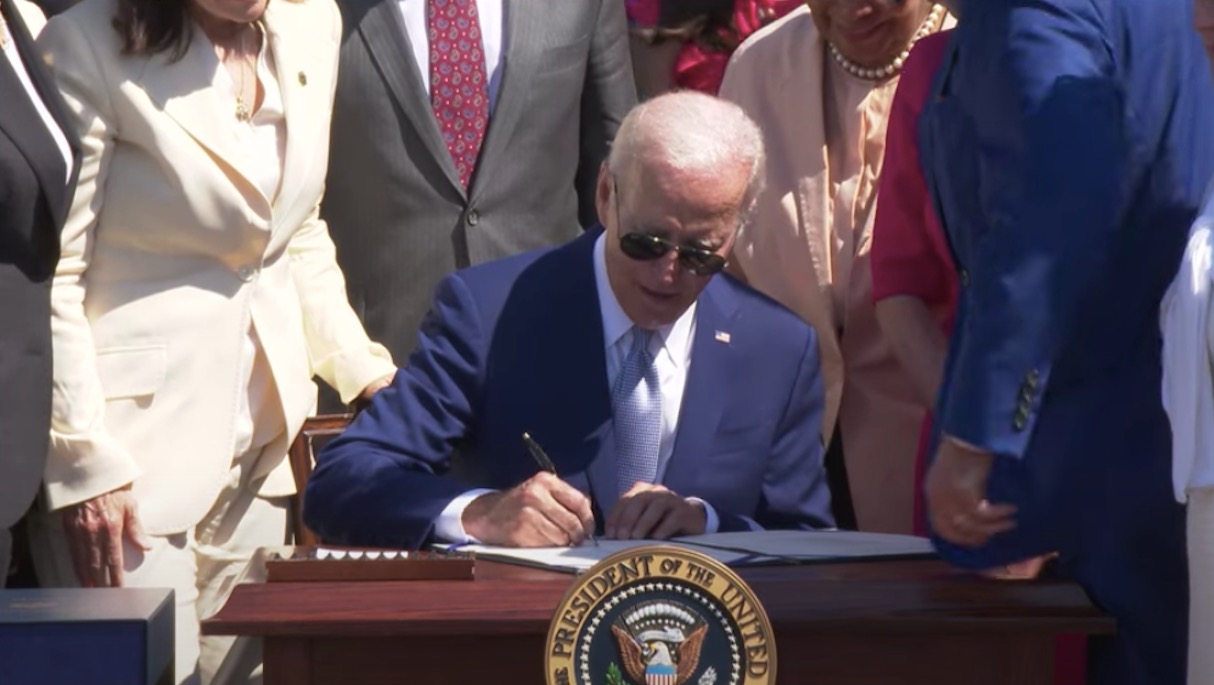
President Joe Biden signed the Creating Helpful Incentives to Produce Semiconductors (CHIPS) Act into law Thursday (Aug. 9).
That authorization bill approves NASA’s participation in the International Space Station (ISS) program through September 2030, six years beyond the current 2024 target.
The act, which Congress approved late last month, pledges $53 billion for the U.S. semiconductor industry. The included NASA authorization bill is the first Congress approved in the past five years.
Read more: President Biden signs CHIPS Act, approving International Space Station extension to 2030
NASA and private companies expect commercial space station demand

NASA, along with companies working on new low Earth orbit space stations, are optimistic these complexes will meet the needs of the International Space Station post-retirement.
These complexes will be necessary due to the amount of research being generated by the International Space Station, panelists said at a July 26 discussion at NASA’s 11th annual International Space Station Research and Development Conference (ISSRDC).
“A platform to be able to continue to do the science and other research that we’re doing on ISS will absolutely be needed for exploration,” said NASA’s Angela Hart, program manager for the agency’s Commercial LEO Development Program Office, at the Johnson Space Center (JSC) in Houston.
Read more: NASA, private companies count on market demand for future space stations after ISS
SpaceX rocket for Crew 5 being repaired after damage
Both SpaceX and the passengers of Crew-5 say they are confident NASA’s rigorous safety requirements will be met following an incident that damaged the Falcon 9 rocket now scheduled to carry people into space in September.
The first stage of the booster sustained slight damage after colliding with a bridge during transport, delaying the launch as SpaceX addresses the underlying issues, the company said during a Crew-5 news conference Thursday (Aug. 5). (NASA disclosed the damage before, but not the cause.)
SpaceX is working through analysis “to assure that that stage would be ready to go, and absolutely safe to fly the crew as we do for every mission,” said Benjamin Reed, SpaceX’s senior director of the human spaceflight program.
NASA astronaut Nicole Mann, commander of Crew-5, said SpaceX has been in regular contact with her crew. “We have full confidence that NASA and SpaceX and the international partners are not going to put us on a rocket or a spacecraft that they feel is not ready to go,” she added in the same briefing.
Read more: SpaceX addressing Falcon 9 rocket damage ahead of next NASA astronaut launch
NASA requests former astronauts chaperone private missions
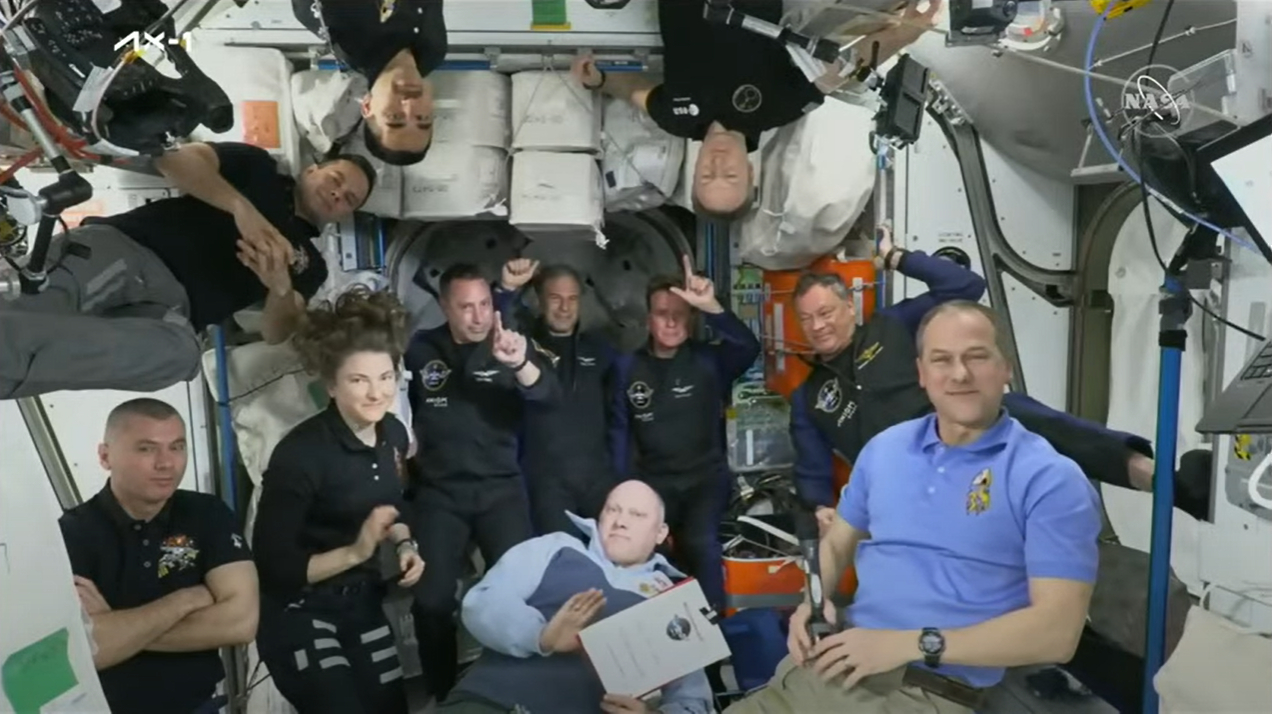
NASA is asking that all private astronaut missions to the International Space Station (ISS) have an experienced former agency astronaut commanding the group. A new solicitation notice (opens in new tab) by NASA, not finalized, includes this request among other changes for private astronaut missions.
The new rule comes from lessons learned based on Axiom Space‘s first mission to the ISS earlier this year. The crew required help from professional astronauts of Expedition 67 to complete some of their experiments. (The solicitation was first noticed by SpaceNews (opens in new tab)).
Read more: Former astronauts must chaperone private missions to the International Space Station, NASA says
Russia says it will leave the International Space Station after 2024
Russia will leave the International Space Station (ISS) program after 2024, according to an update from the new chief of Russia’s federal space agency Roscosmos Tuesday (July 26).
The announcement, which sounds more definitive than past statements, comes after Roscosmos leadership threatened to leave the International Space Station partnership for months. “The decision to leave the station after 2024 has been made,” the current head of Roscosmos, Yuri Borisov, said (opens in new tab), according to the Associated Press.
Speaking from space through video chat at the 11th annual International Space Station Research and Development Conference, NASA astronaut Kjell Lindgren briefly addressed the matter. “That is very recent news, and so we haven’t heard anything officially,” he said. “Of course … we were trained to do a mission up here, and that mission is one that requires the whole crew, and so we continue to work every day to conduct the science and research that we’ve been trained to conduct.”
Read more in our story about Roscosmos leaving the ISS partenrship.
Spacewalk concludes
The European Space Agency’s Samantha Cristoforetti concluded her historic first spacewalk for a European woman alongside experienced spacewalker Oleg Artemyev.
The official end to the Russian-segment spacewalk was at 5:55 p.m. EDT (2155 GMT) and the duo spent 7 hours, 5 minutes working outside the International Space Station, according to NASA Television. The work had been forecasted to last seven hours.
Russian mission control elected to move one of the major tasks to another day, citing limited resources in the Orlan spacesuits to accomplish the work. (The spacesuited crew were delayed by roughly 50 minutes during routine equipment checkouts prior to opening the hatch at 10:50 a.m. EDT or 1450 GMT.)
The spacewalkers and the rest of the Expedition 67 crew were also advised today that there will be no need to perform an orbital debris avoidance maneuver after the spacewalk concludes. The possibility had been brought up during the spacewalk when a piece of unidentified debris strayed a little close to the orbit of ISS. No one was ever in any danger, NASA emphasized during the broadcast.
Watch Space.com for our wrap-up story covering the spacewalk.
ISS controllers tracking space debris, no action at this time
Controllers for the International Space Station are monitoring a piece of space debris that may come into conjunction, or come nearby, the orbiting complex “well after” the spacewalk is concluded, a NASA spokesperson said in a live update.
Following a live discussion between Expedition 67 astronauts and Mission Control in Houston, spokesperson Rob Navias told NASA TV viewers at 3:18 p.m. EDT (0718 GMT) that the crew is in no danger and that no immediate action is required.
“At the moment there is no concern or no action that will be required unless future tracking updates dictate otherwise. We’ll keep you posted,” Navias said during the spacewalk broadcast. Spacewalkers Samantha Cristoforetti (European Space Agency) and Oleg Artemyev (Roscosmos) are roughly 4.5 hours through their extravehicular activities that began at 10:50 EDT (14:50 GMT).
The space station is capable of avoiding the space debris, should that be required, Navias emphasized. No further details were provided by Navias about the time of the expected conjunction, how far away the debris is, the size of the object, or what object is being tracked.
Russian-European spacewalk coverage begins
You can watch a Russian cosmonaut and the first European female spacewalker work outside the International Space Station today. The Expedition 67 spacewalk is expected to begin around 10 a.m. EDT (1400 GMT). Coverage is available in the video above, via NASA Television.
The European Space Agency’s (ESA) Samantha Cristoforetti will join experienced Russian cosmonaut spacewalker Oleg Artemyev for up to seven hours. Cristoforetti will make history as the first European female spacewalker, while Artemyev will embark on his third spacewalk.
Much of their time will be spent readying the European Robotic Arm for operational use, but the duo will also deploy nanosatellites and perform numerous other tasks on the Russian segment of the ISS.
Artemyev and Cristoforetti will both wear Russian-built Orlan spacesuits during their spacewalk today, with Artemyev in a suit with red stripes while Cristoforetti’s suit will bear blue stripes. The spacewalk will likely be conducted in the Russian language with live interpretation.
You can learn more in our preview story here.
Soyuz crew in good health after landing
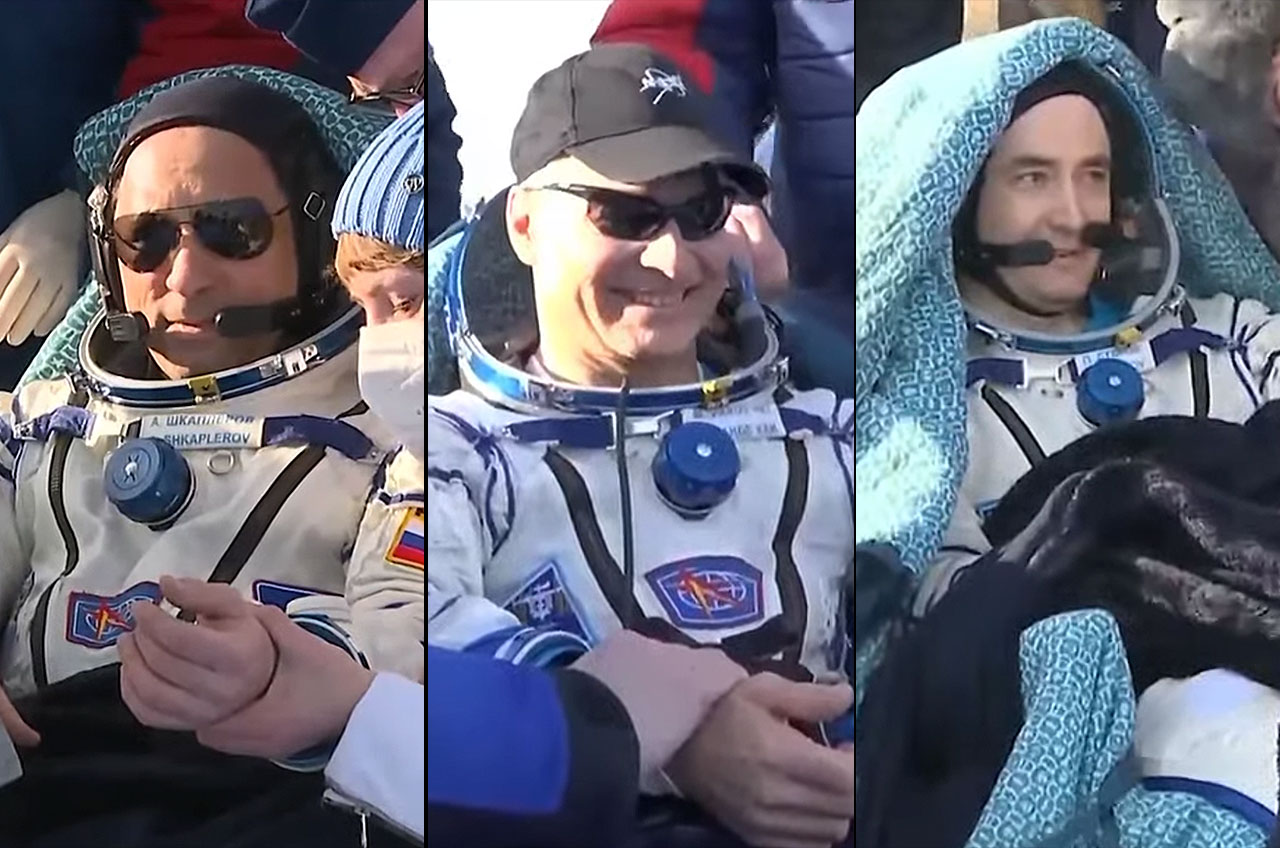
The U.S.-Russian crew of the Soyuz MS-19 spacecraft is in good health and spirits after their smooth landing on the steppes of Kazakhstan. Read our full landing story.
Roscosmos TV cameras showed NASA astronaut Mark Vande Hei and cosmonauts Pyotr Dubrov and Anton Shkaplerov with wide smiles on their faces as they were helped out of their Soyuz capsule. Each of the space travelers were hoisted out of the Soyuz, which had rolled over after landing due to winds, and placed in reclined couches as they readapt to life on Earth.
They waved to cameras during a photo session and were then carried into a nearby medical tent for medical checks and to doff their Russian Sokol spacesuits and climb into more comfortable flight suits.
Once those medical checks are complete, each of the Soyuz crewmembers will head to a rally point airport in Kazakhstan. A NASA jet is awaiting Vande Hei to take him back to Houston while a Roscosmos plane will ferry Shkaplerov and Dubrov home to Russia’s Star City training site near Moscow.
That’s a wrap for our landing coverage of Soyuz MS-19.
The next mission to the ISS will be the private Ax-1 mission launching on a SpaceX rocket on April 6. We’ll have live coverage of that here and on our Ax-1 mission updates page during the 11-day trip.
NASA and SpaceX will then launch the Crew-4 mission to the ISS on April 19.
TOUCHDOWN! Soyuz lands with crew of 3
Touchdown confirmed! The Soyuz MS-19 spacecraft carrying NASA astronaut Mark Vande Hei and Russian cosmonauts Anton Shkaplerov and Pyotr Dubrov has landed safely on the remote steppes of Kazakhstan at 7:28 a.m. EDT (1128 GMT).
Russian recovery crews are closing in on the landing site in helicopters and ground vehicles. NASA and Roscosmos personnel will soon extract the crew and prepare the space travelers for their trip home.
First, Russian recovery teams will set up an inflatable medical tent to prepare to receive the Soyuz crew while others safeguard the vehicle so the crew can be extracted.
Once the crew is extracted from the Soyuz, they will have a short photo session outside the capsule before heading off to medical tents, and then to an airport in for their trip home. Vande Hei will be headed back to Houston while Dubrov and Shkaplerov will head home to Moscow. — Tariq Malik
Parachute deployed! Soyuz descending to Earth
The Soyuz MS-19 spacecraft carrying a crew of three has deployed its main parachute and is safely descending back to Earth.
Everything has gone as planned for the landing. NASA astronaut Mark Vande Hei and his two Russian crewmates are doing well as they return to Earth.
Soyuz spacecraft module separation
The Soyuz spacecraft carrying NASA astronaut Mark Vande Hei and Russian cosmonauts Anton Shkaplerov and Pyotr Dubrov has jettisoned its orbital and propulsion modules as its crew capsule plunges through Earth’s atmosphere for today’s landing.
The crew capsule is a gumdrop-shaped module that forms the central core of the Soyuz spacecraft. Its orbital and propulsion modules are disposable and no longer needed during reentry.
The crew capsule will deploy a main parachute to slow its descent to the Earth’s surface in Kazakhstan. It will fire retrorockets just before touchdown to further cushion its landing.
Landing remains on schedule for 7:28 am ET (1128 GMT).
Deorbit burn: Soyuz returning to Earth
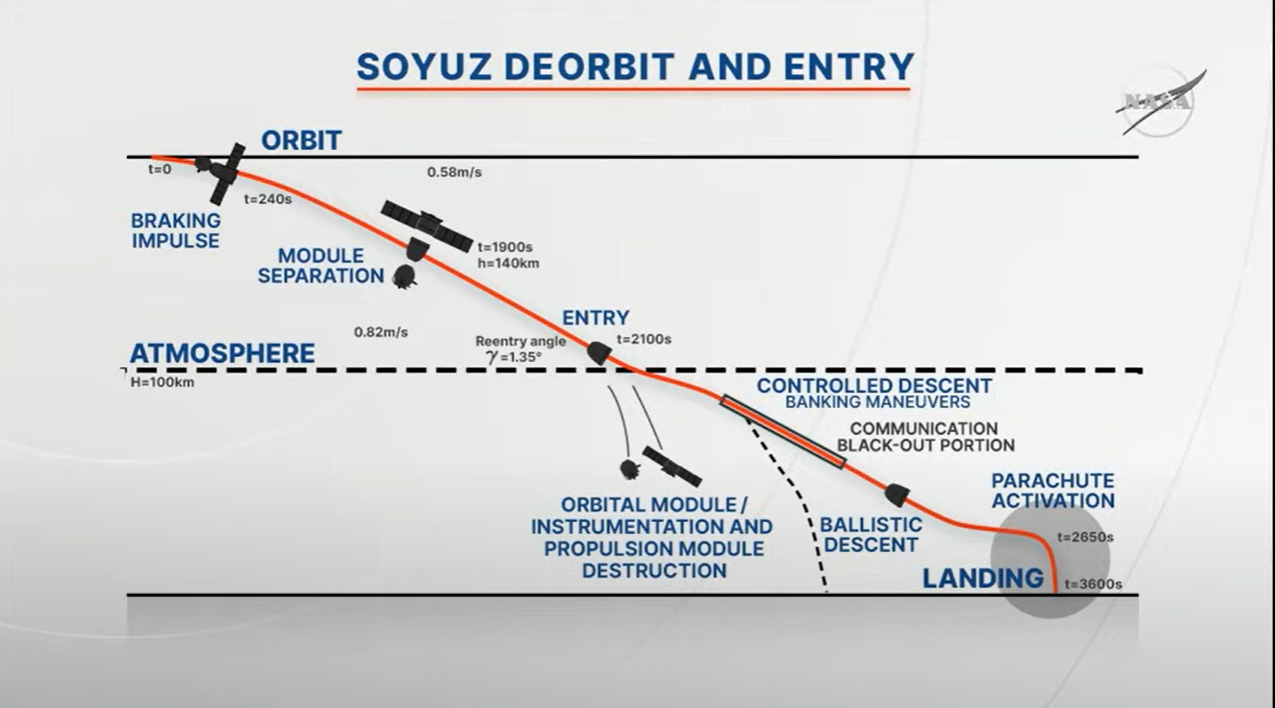
The deorbit burn has begun for today’s Soyuz MS-19 spacecraft landing to return astronaut Mark Vande Hei and Russian cosmonauts Anton Shkaplerov and Pyotr Dubrov home from the International Space Station.
The deorbit burn is a short 4-minute, 59-second maneuver to slow the Soyuz so that it can leave orbit and descend back to Earth for a landing on the steppes of Kazakhstan. You can see a profile of the landing approach above.
Below is the target landing area and approach in Kazakhstan for today’s landing.
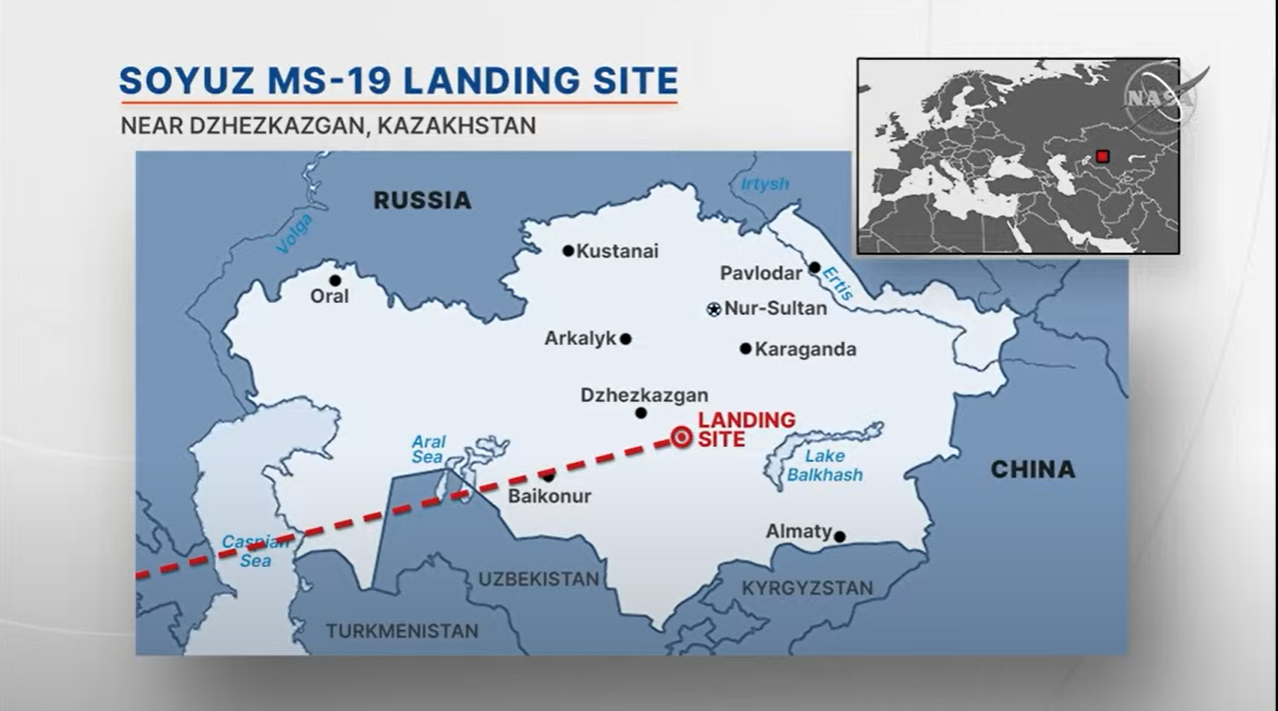
Soyuz MS-19 crew prepares for landing
With today’s undocking from the International Space Station complete, the Soyuz MS-19 crew is now preparing for the return to Earth in three hours. NASA’s live webcast coverage of the landing has resumed ahead of the planned deorbit burn at 6:34 a.m. EDT (1034 GMT). You can watch the Soyuz landing live on Space.com. We have feeds on our homepage and our preview for today’s landing.
The deorbit burn will place the Soyuz MS-19 on a descending track for its planned 7:38 a.m. EDT (1138 GMT) landing on the steps of Kazakhstan.
While we wait for the deorbit burn. Check out some amazing views of the Soyuz’s undocking earlier today.
So
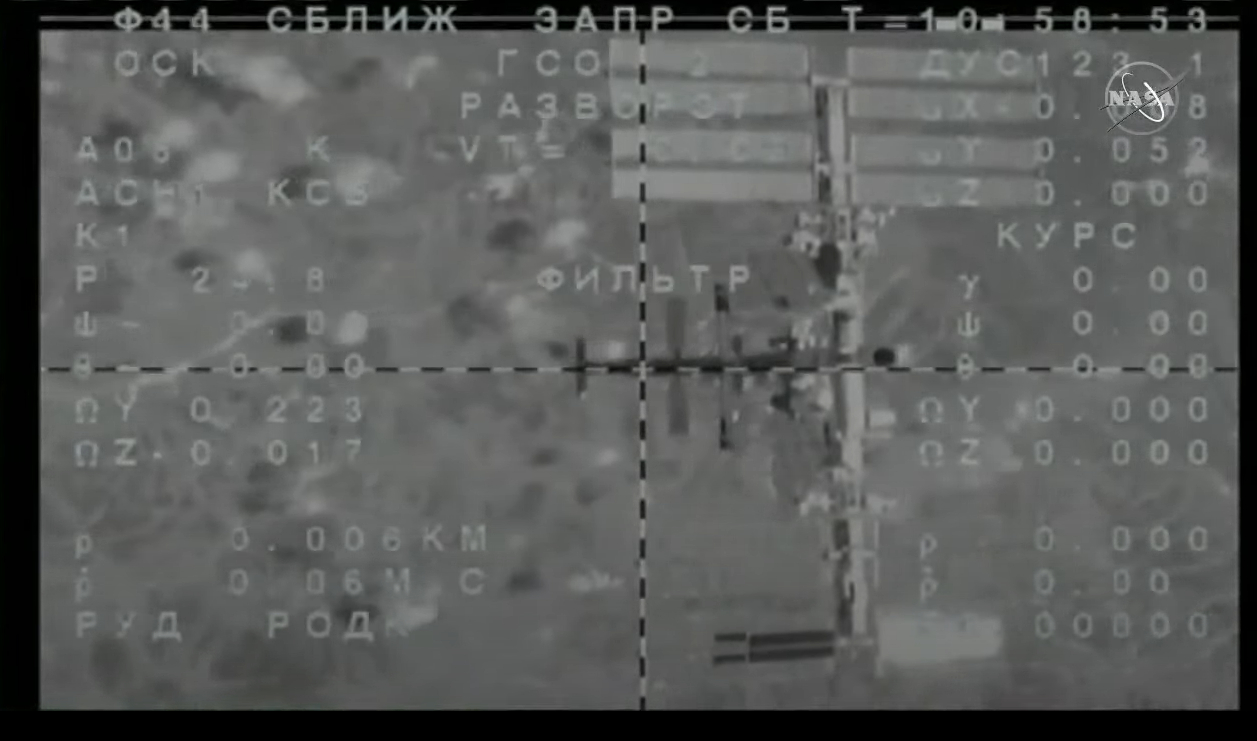
Russian cosmonaut Pyotr Dubrov is continuing his photo and video session of the International Space Station as fellow cosmonaut Anton Shkaplerov flies the Soyuz MS-19 spacecraft around the station after today’s undocking.
“That’s beautiful, we are flying over some continents and it all looks beautiful but the Russian segment is all in shadow,” one of the cosmonauts said.
“Wow!” a cosmonaut added. “Every time you see it, it’s almost like a surprise.”
The Soyuz and space station were passing over western China when this view was captured from the Soyuz’s onboard camera.
Undocking! Soyuz MS-19 departs space station
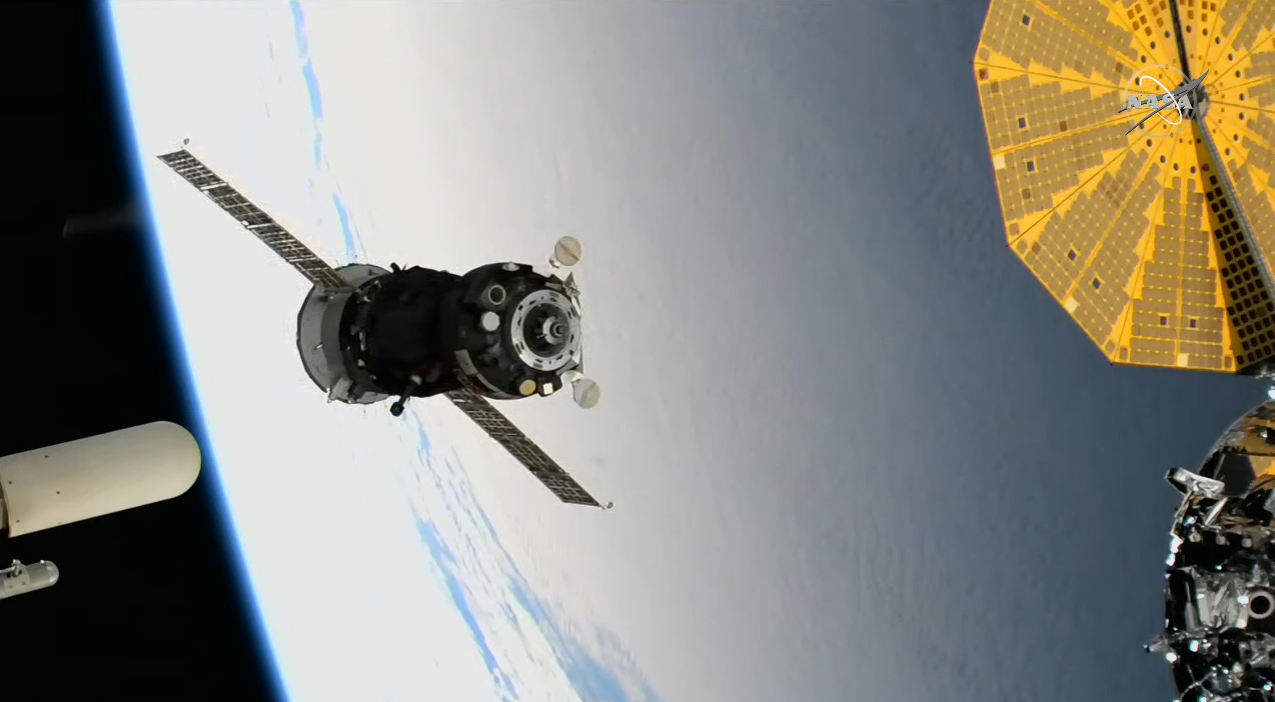
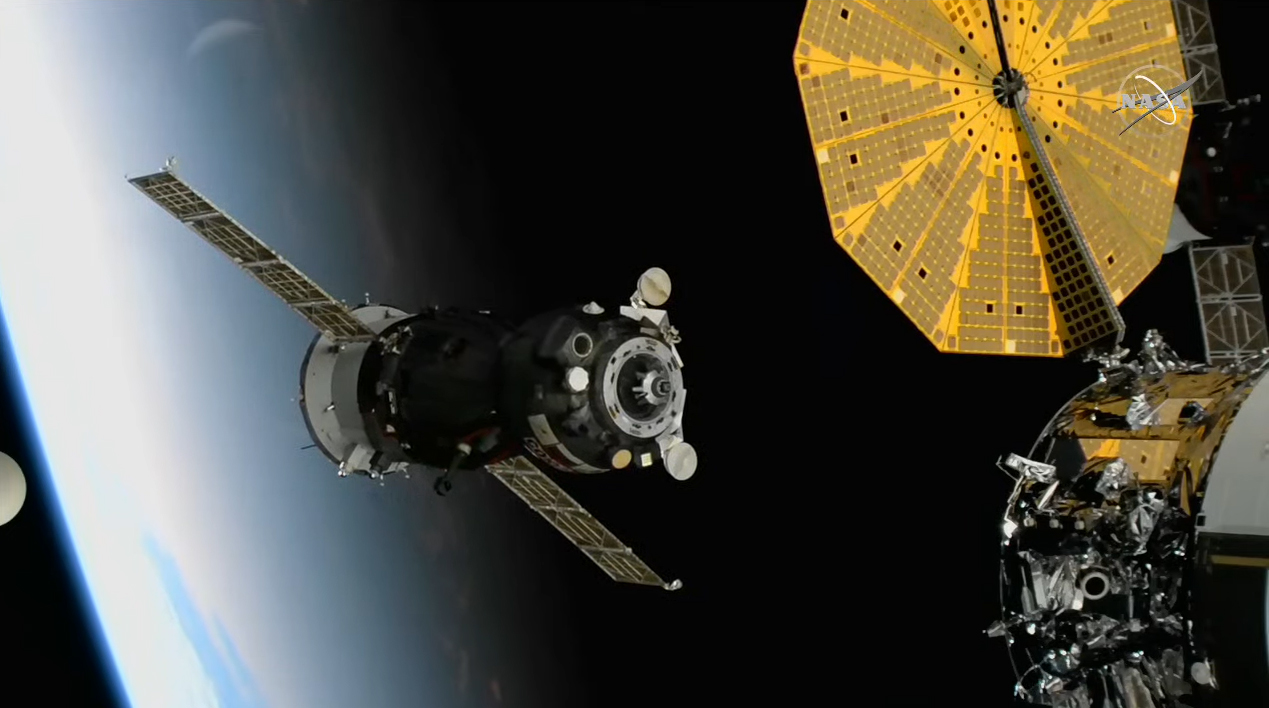
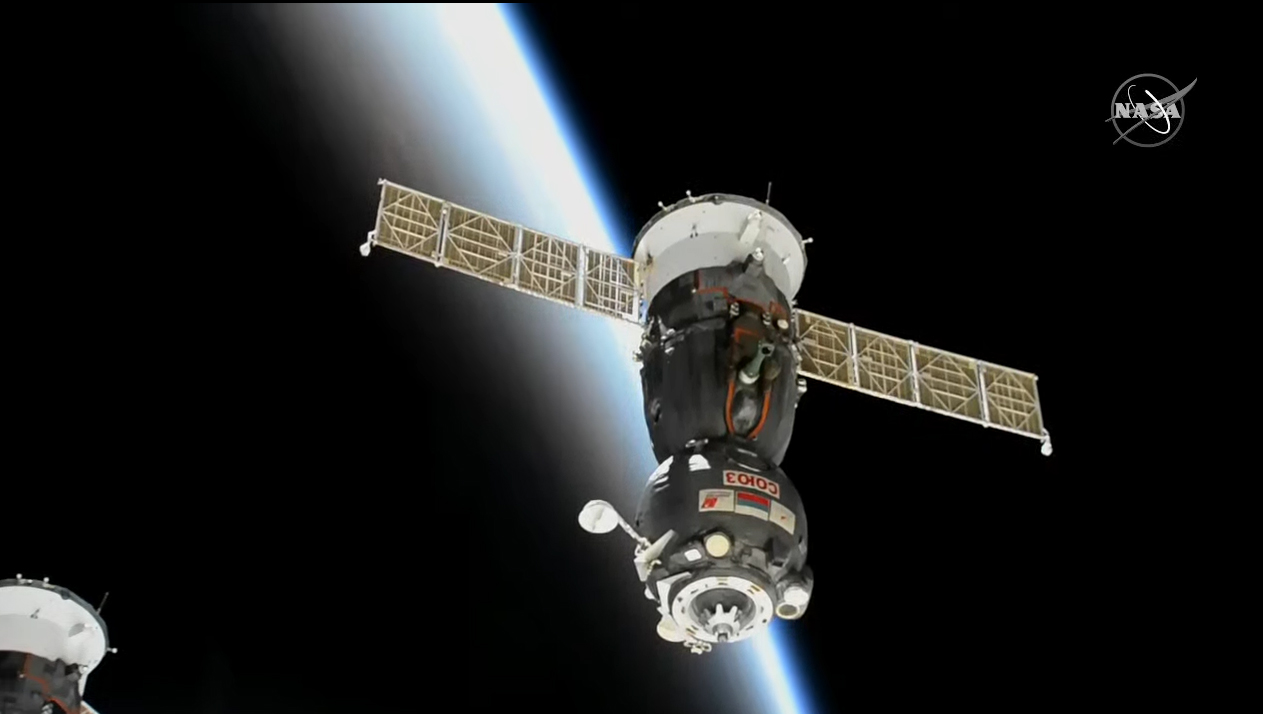
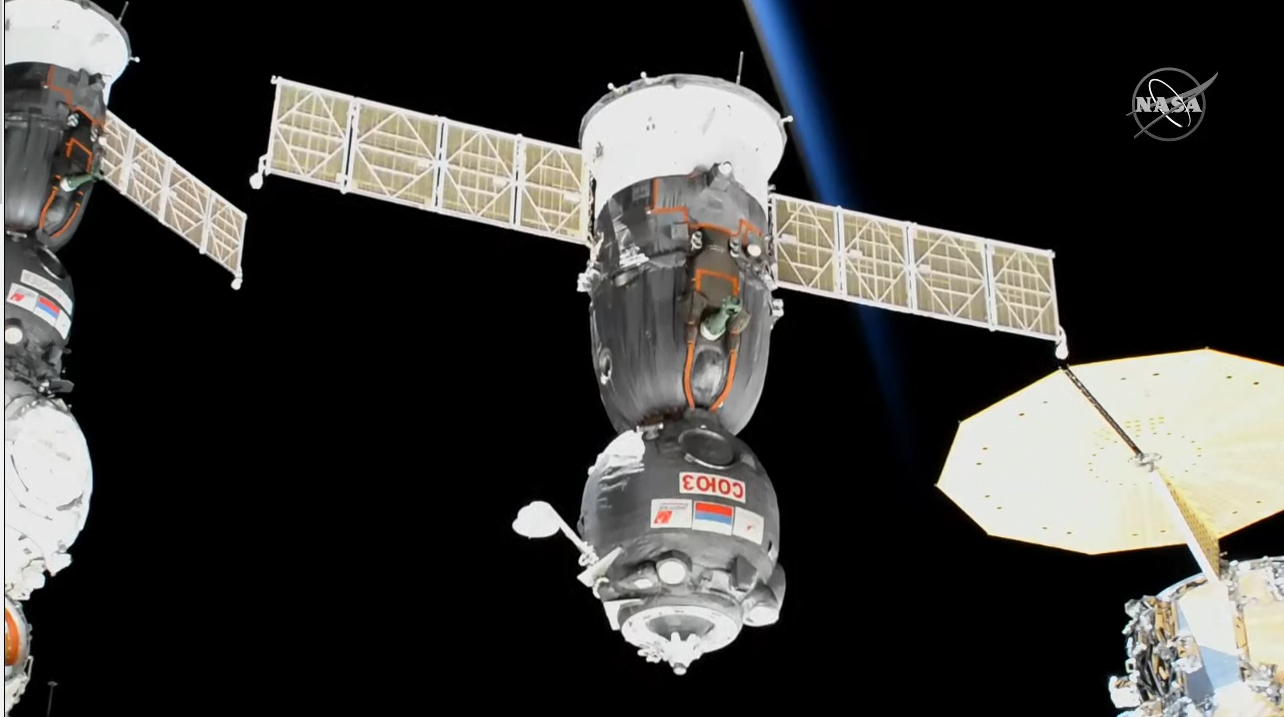
Undocking confirmed! With Russian cosmonaut Anton Shkaplerov at the controls, the Soyuz MS-19 spacecraft undocked from the International Space Station on time at 3:21 a.m. EDT (0721 GMT) as both craft sailed high over the South Atlantic Ocean.
Shkaplerov has backed the Soyuz away to a station-keeping point about 70 meters away from the station to allow cosmonaut Pyotr Dubrov to take photos and videos of the station’s Russian segment.
Dubrov is taking the photos and videos from the Soyuz capsule’s orbital module, which will be discarded along with the propulsion module later today ahead of reentry.
NASA astronaut Mark Vande Hei is remaining in his seat during this space station photo session.
It’s landing day for ISS astronauts

It’s undocking and landing day for American astronaut Mark Vande Hei and two Russian cosmonauts on the International Space Station. Vande Hei and Russian cosmonauts Pyotr Dubrov and Anton Shkaplerov.
A Soyuz spacecraft carrying the trio will undock from the space station today at 3:21 a.m. EDT (0721 GMT) and land at 7:28 a.m. EDT (1128 GMT). You can watch the undocking live on Space.com’s homepage, courtesy of NASA TV. Undocking coverage is live now.
At 6:15 a.m. EDT (1015 GMT), NASA’s coverage of the Soyuz landing will begin to chronicle the Soyuz MS-19 spacecraft’s deorbit burn, which is scheduled for 6:34 a.m. EDT (1034 GMT) setting up the planned landing on the remote steppes of Kazakhstan.
Vande Hei and Dubrov are returning to Earth after a 355-day mission to the International Space Station, the longest single spaceflight for an American astronaut. Shkaplerov is returning home to end a 176-day spaceflight.
Soyuz reaches orbit with 3 cosmonauts aboard
Russia’s Soyuz MS-21 spacecraft has successfully reached orbit and separated from its Soyuz rocket upper stage.
The spacecraft is now chasing the International Space Station and will dock at the orbiting laboratory later today at 3:05 p.m. EDT (1905 GMT). NASA TV will have live coverage of the docking starting at 2:15 p.m. EDT (1815 GMT).
The cosmonauts – Sergey Korsakov, Oleg Artemyev, and Denis Matveev – will enter the space station at about 5:30 p.m. EDT (2130 GMT) after a series of leak checks.
- 11:15 a.m. – Coverage of the launch of the Soyuz MS-21 crew to the ISS (Launch scheduled at 11:55 a.m. EDT; Artemyev, Matveev, Korsakov)
- 2:15 p.m. – Coverage of the rendezvous and docking of the Soyuz MS-21 crew to the ISS (Docking to the Prichal module scheduled at 3:05 p.m. EDT; Artemyev, Matveev, Korsakov)
- 5:15 p.m. – Coverage of the Soyuz MS-21 hatch opening at the ISS (Hatch opening for Artemyev, Matveev and Korsakov scheduled at appx. 5:30 p.m. EDT)
- 8:30 p.m. – Video File of the Soyuz MS-21 launch, docking and hatch opening at the ISS (streamed on NASA TV’s media channel)
Liftoff! Soyuz rocket launches new crew
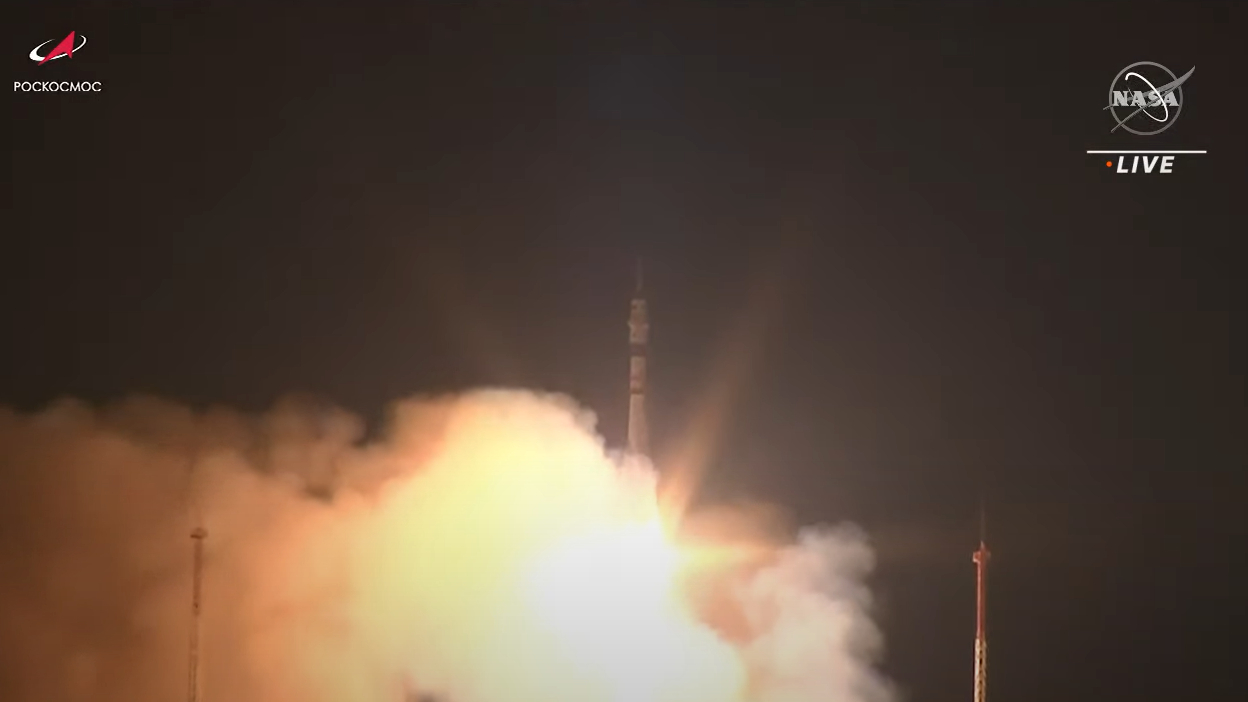
Liftoff! Russia’s Soyuz MS-21 spacecraft and rocket have launched toward space on time at 11:55 a.m. EDT.
All systems are nominal as it heads to space.
Russia launching 3 cosmonauts to space station
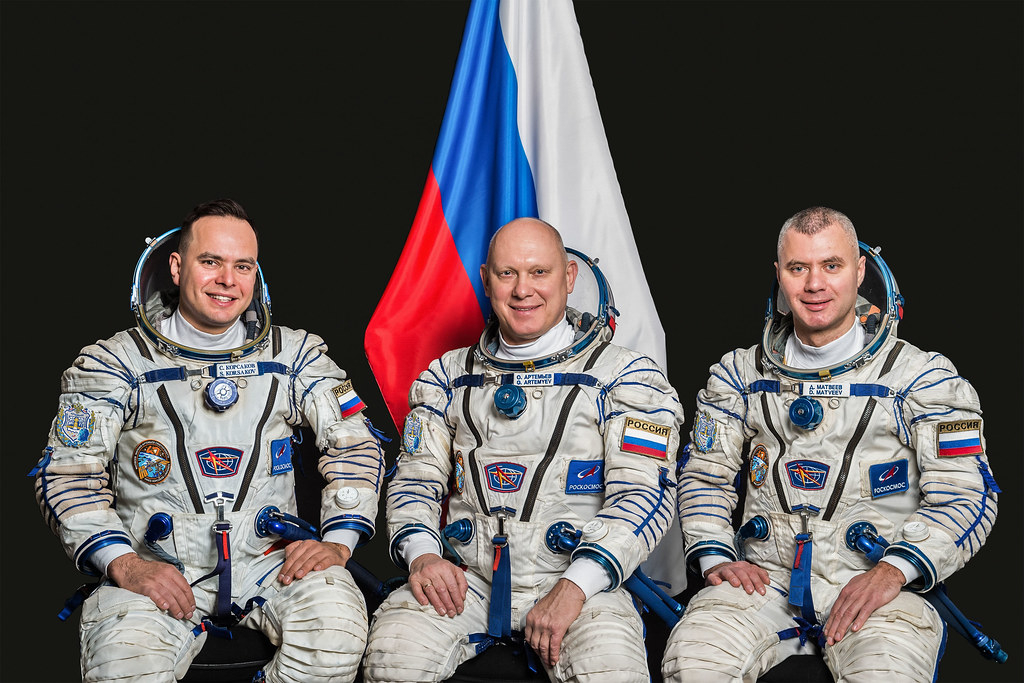
Three Russian cosmonauts will launch toward the International Space Station on Friday (March 18), and you can watch the action live.
A Russian Soyuz spacecraft carrying Oleg Artemyev, Denis Matveev and Sergey Korsakov is scheduled to lift off atop a Soyuz rocket from Baikonur Cosmodrome in Kazakhstan Friday at 11:55 a.m. EDT (1555 GMT).
You can watch it live here at Space.com courtesy of NASA, or directly via the space agency (opens in new tab). Coverage will start at 11:15 a.m. EDT (1515 GMT). You can also see a Roscosmos feed here
Here’s a schedule of ISS docking and crew arrival events for later today after liftoff (All times in EDT):
- 11:15 a.m. – Coverage of the launch of the Soyuz MS-21 crew to the ISS (Launch scheduled at 11:55 a.m. EDT; Artemyev, Matveev, Korsakov)
- 2:15 p.m. – Coverage of the rendezvous and docking of the Soyuz MS-21 crew to the ISS (Docking to the Prichal module scheduled at 3:05 p.m. EDT; Artemyev, Matveev, Korsakov)
- 5:15 p.m. – Coverage of the Soyuz MS-21 hatch opening at the ISS (Hatch opening for Artemyev, Matveev and Korsakov scheduled at appx. 5:30 p.m. EDT)
- 8:30 p.m. – Video File of the Soyuz MS-21 launch, docking and hatch opening at the ISS (streamed on NASA TV’s media channel)
Spacewalk today! 2 NASA astronauts working outside ISS
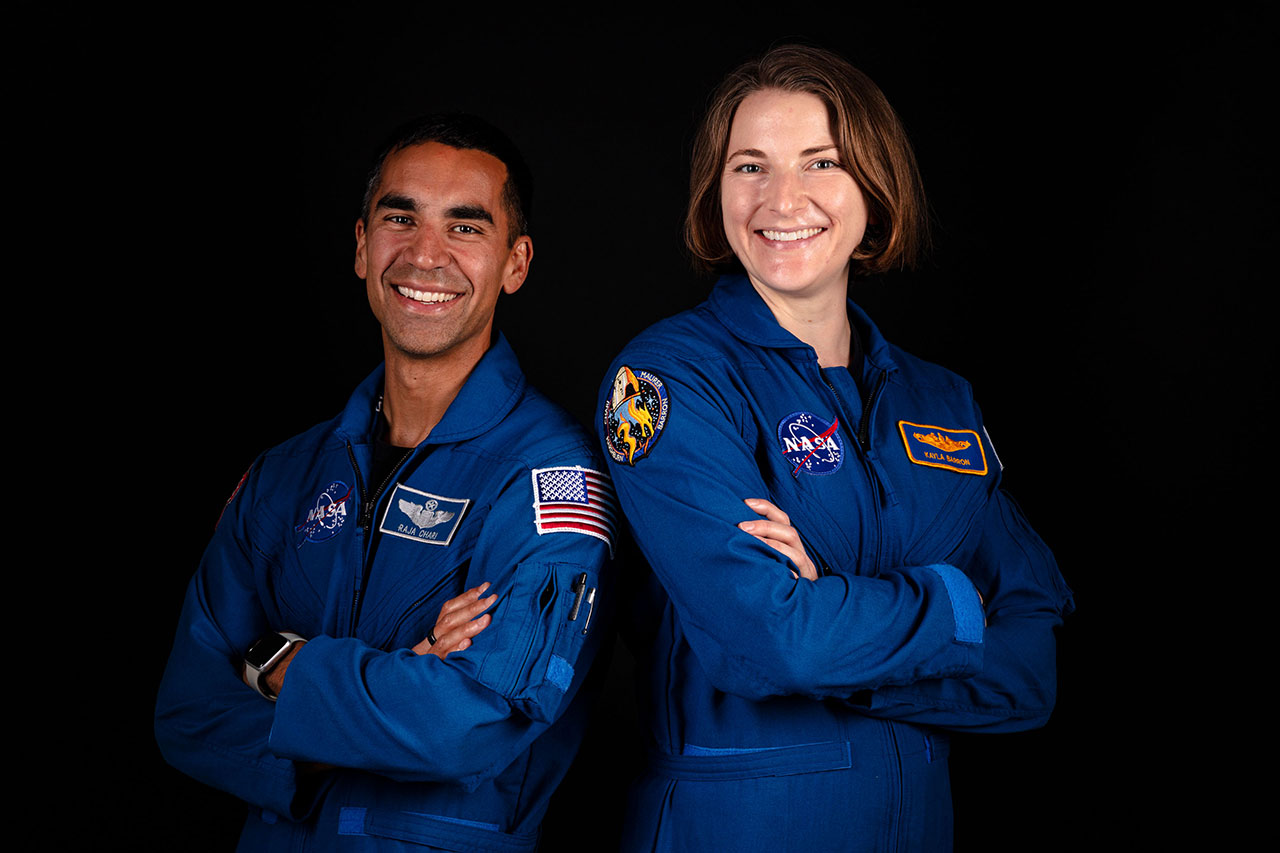
Two NASA astronauts will spend hours working outside the International Space Station today to upgrade the orbiting lab’s systems.
Astronauts Kayla Barron and Raja Chari are scheduled to step outside the orbiting lab Tuesday at 8:05 a.m. EDT (1205 GMT), kicking off a planned 6.5-hour spacewalk aimed at preparing for upcoming solar array upgrades.
You can watch the spacewalk live in the video at the top of this page, courtesy of NASA TV. The live webcast began at 6:30 a.m. EDT (1030 GMT).
Spacecraft Separation for ISS cargo ship
Spacecraft separation! Northrop Grumman’s Cygnus NG-17 cargo ship is officially in orbit and chasing the International Space Station on a 2-day rendezvous track.
LIFTOFF for Antares rocket carrying Cygnus NG-17 to ISS
Liftoff! Northrop Grumman has launched its Antares rocket carrying the Cygnus NG-17 cargo ship toward the International Space Station.
All systems are working nominally after the on-time liftoff.
Go for launch
Northrop Grumman is go for launch today after a final mission poll. Weather and the Antares rocket carrying the Cygnus NG-17 spacecraft have no issues for flight.
Northrop Grumman launching cargo ship today

A Northrop Grumman Antares rocket will launch the commercial cargo ship Cygnus NG-17 today at 12:40 p.m. EST (1740 GMT) and you’ll be able to watch it live here and on our mission overview page, courtesy of NASA TV. The live webcast will begin at 12:15 p.m. EST (1715 GMT).
The Cygnus NG-17 cargo ship, named the S.S. Piers Sellers in honor of the late astronaut who died in December 2016, will launch from Pad 0A of NASA’s Wallops Flight Facility on Wallops Island, Virginia. It is carrying more than 8,300 pounds of supplies and other gear for the Expedition 66 crew on the International Space station.
“The launch range forecast remains 75% favorable, with ground winds being the primary concern,” NASA officials wrote in an update today (opens in new tab).
Here’s a look at the science aboard:
Progress cargo ship docks early Thursday
Russia’s Progress 80 cargo resupply ship, which launched on Monday (Feb. 14), will arrive at the International Space Station early Thursday (Feb. 17).
The uncrewed cargo freighter is scheduled to dock with the orbiting laboratory at 2:06 a.m. EST (0706 GMT). You can watch the docking live in the window above, courtesy of NASA TV, or directly via NASA’s website (opens in new tab).
Undocking!
SpaceX’s Dragon CRS-24 cargo ship has successfully undocked itself from the International Space Station’s Harmony module and is backing away from the orbiting lab.
Undocking occurred on time at 10:40 a.m. EST (1540 GMT) as both spacecraft sailed high over the South Pacific Ocean. At the time of undocking, NASA and SpaceX did not have live video coverage from the International Space Station, but did capture views of it backing away after its departure.
You can read our full story about today’s Dragon undocking here.
Dragon undocking webcast underway
NASA’s live webcast for today’s SpaceX Dragon CRS-24 undocking at the International Space Station is underway.
Dragon is on track to undock from the station’s zenith port on its Harmony module at 10:40 a.m. EST (1540 GMT). The command to undock will be sent by SpaceX at 10:35 a.m. EST, NASA says.
If all goes well, Dragon will perform two short departure burns and ultimately return to Earth on Monday afternoon at 4:05 p.m. EST (2105 GMT) off the coast of Panama City, Florida.
Undocking day for SpaceX Dragon CRS-24
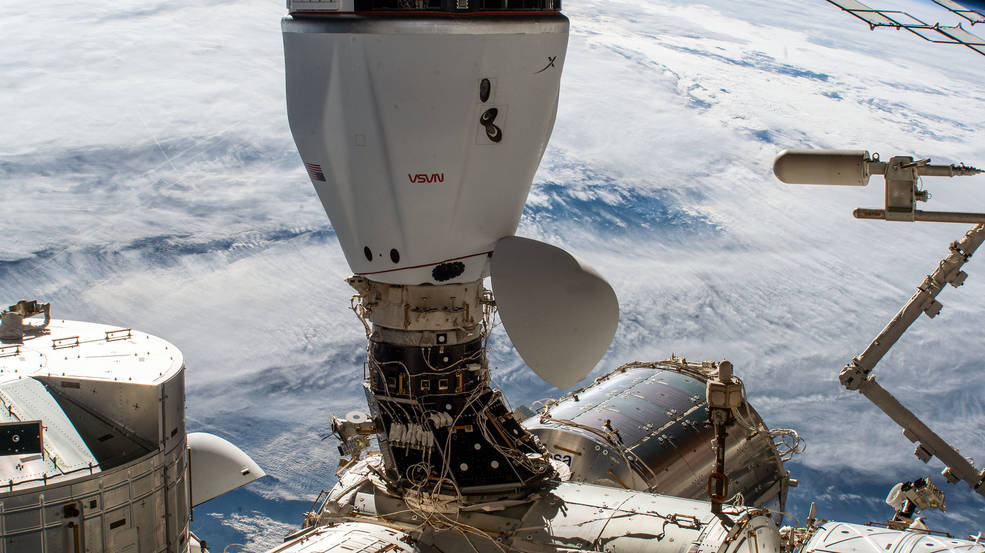
It’s undocking day (again) for SpaceX’s Dragon CRS-24 cargo ship at the International Space Station.
After a 24-hour delay due to unfavorable weather at its splashdown site in the Gulf of Mexico, the Dragon cargo ship is once again expected to cast off from the space station’s space-facing docking port atop NASA’s Harmony module and begin its trip back to Earth. Undocking is scheduled for 10:40 a.m. EST (1540 GMT) and you can watch it live on this page beginning at 10:15 a.m. EST (1515 GMT), courtesy of NASA TV.
The Dragon cargo ship launched to the station on Dec. 21 and has spent just over a month at the orbiting lab. For its return trip, it will be carrying nearly 5,000 pounds (2,267 kilograms) of science experiment results and other gear back to Earth.
SpaceX’s Dragon is currently the only cargo ship capable of returning cargo, equipment and other items back to Earth.
Dragon undocking delayed by bad weather
NASA and SpaceX have delayed the undocking of of the Dragon CRS-24 cargo ship by another 24 hours due to high winds at its splashdown site in the Atlantic Ocean. The spacecraft will now undock Sunday, Jan. 23, at 10:40 a.m. EST (1540 GMT).
“Due to unfavorable weather in the splashdown locations off the coast of Florida, now targeting Sunday, January 23 at 10:40 a.m. EST for Dragon’s departure from the space station,” SpaceX wrote in a Twitter update (opens in new tab) this morning.
This is the second undocking delay for the Dragon CRS-24 spacecraft, which was originally scheduled to depart from the space station on Friday, Jan. 21. That undocking was also delayed by bad weather at the splashdown sites.
SpaceX now aims to undock the Dragon CRS-24 capsule from the space station’s space-facing Harmony module on Sunday at 10:40 a.m. EST (1540 GMT). NASA’s live webcast will begin at 10:15 a.m. EST (1515 GMT).
SpaceX Dragon CRS-24 undocking today
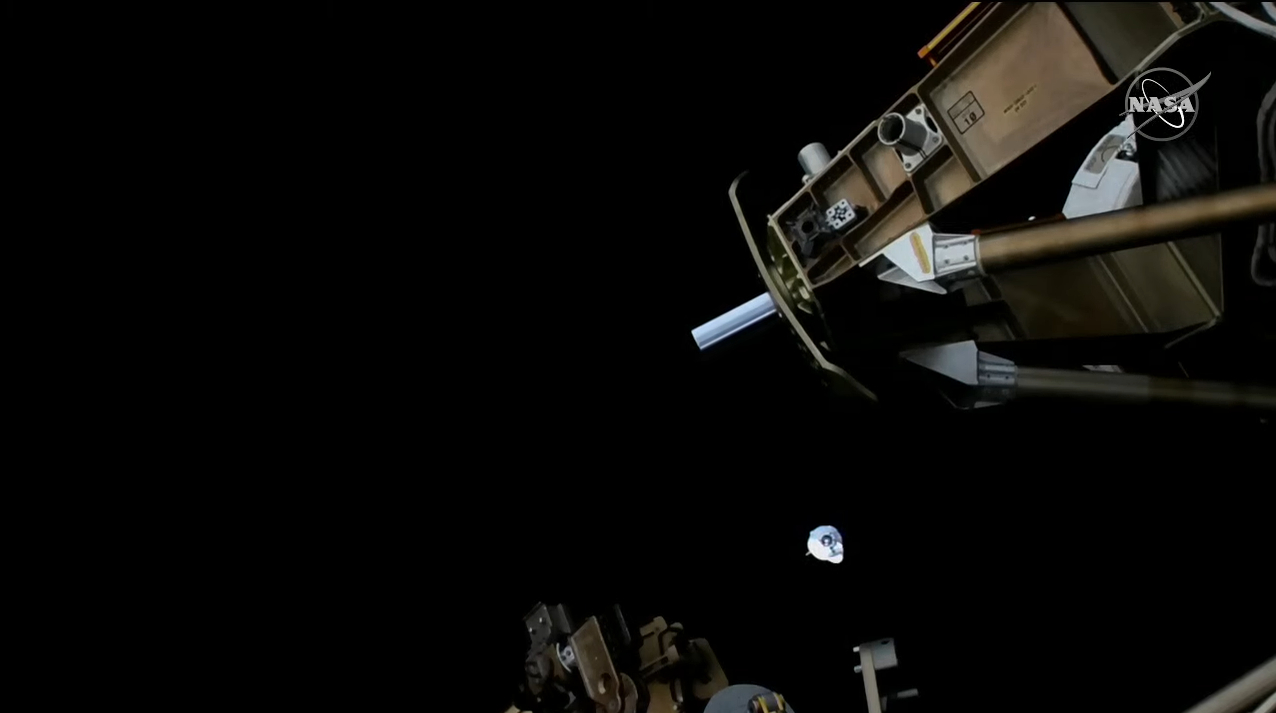
A SpaceX Dragon cargo ship will undock from the International Space Station today and you’ll be able to watch it live online. Undocking is set for 10:40 a.m. EST (1540 GMT). Read our full undocking preview here.
NASA’s webcast of the Dragon CRS-24 departure will begin at 10:15 a.m. EST (1515 GMT). You can watch it live in the NASA TV video feed at the top of this page.
SpaceX launched the Dragon CRS-24 cargo ship to the space station in December to deliver 6,500 pounds (2,900 kilograms) of science gear and supplies to astronauts on the orbiting lab. For its return to Earth, the spacecraft is carrying nearly 5,000 pounds (2,267 kilograms) of science experiments and other gear aboard.
The Dragon CRS-24 cargo ship will return to Earth on Monday, Jan. 24, at 12:44 a.m. EST (0544 GMT) with a splashdown in the Atlantic Ocean off the Florida coast. SpaceX and NASA will not provide a live webcast of the splashdown, but updates are expected to be shared on Twitter by SpaceX and on NASA’s space station blog (opens in new tab).
Cosmonauts to take spacewalk outside ISS today
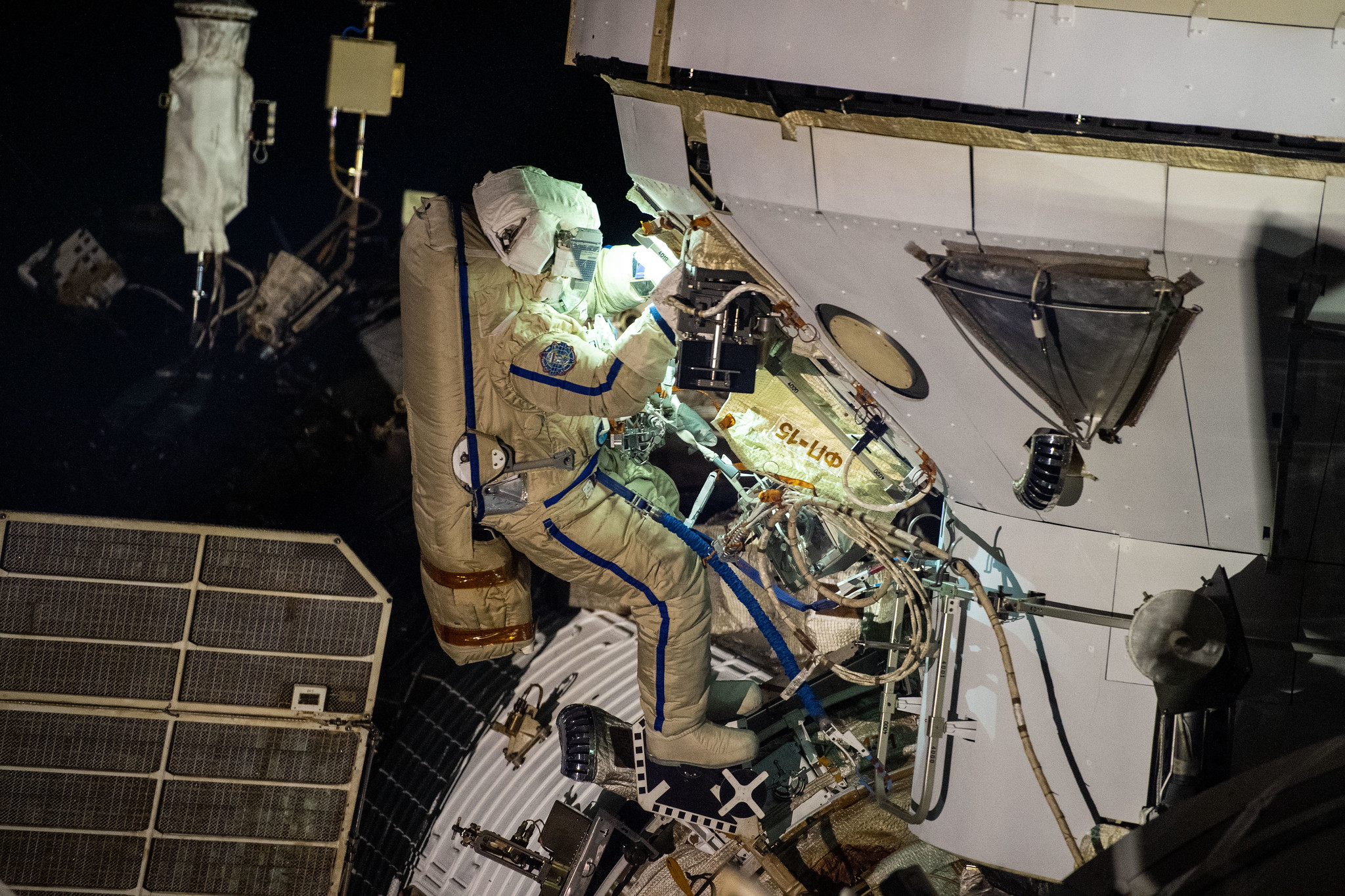
Two Russian cosmonauts will take a spacewalk outside the International Space Station today to outfit the orbiting lab’s new Prichal module. You can watch the spacewalk live in the video feed at the top of this page. Read our preview story on the spacewalk here.
Expedition 66 commander Anton Shkaplerov and flight engineer Pyotr Dubrov, both of the Russian space agency Roscosmos, will spend the day working to add new handrails, antennas, a television camera and docking targets to Prichal, allowing the docking module to accept its first visiting spacecraft in March.
During the spacewalk, you can spot Shkaplerov in a Russian Orlan spacesuit with red stripes, distinguishing him as the lead spacewalker. Dubrov’s spacesuit will have blue stripes.
Docking! SpaceX Dragon CRS-24 cargo ship reaches ISS
SpaceX’s Dragon CRS-24 cargo ship successfully docked with the International Space Station at 3:41 a.m. EST (0841 GMT), linking up with the orbiting lab nearly an hour earlier than planned as both spacecraft sailed 265 miles above the South Pacific Ocean.
A series of hooks and hatches will secure the Dragon to the station ahead of leak checks to create a secure seal between the two spacecraft. The station’s crew will then open the hatches between the two craft to begin unpacking the spacecraft.
SpaceX Dragon CRS-24 cargo ship arriving at ISS
It’s docking day for SpaceX’s Dragon CRS-24 cargo ship.
After a day’s flight in orbit, SpaceX’s Dragon cargo ship is closing in on the International Space Station and is scheduled to link up with the orbiting lab at 3:41 a.m. EST (0841 GMT). You can watch its approach and docking live in the NASA TV video feed at the top of this page.
The Dragon CRS-24 resupply ship is carrying 6,500 pounds of supplies and experiment gear to the International Space Station. The spacecraft was originally scheduled to dock at 4:30 a.m. EST but is running ahead of schedule.
Dragon CRS-24 successfully in orbit
SpaceX’s Dragon CRS-24 cargo ship has successfully opened its nose cone to uncover its docking port, the final step in today’s launch toward the International Space Station. Read our recap of the predawn liftoff.
The spacecraft, which has visited the space station before, is scheduled to dock at the orbiting laboratory on Wednesday, Dec. 22, at 4:30 a.m. EST (0930 GMT).
NASA will provide live coverage of the Dragon spacecraft’s autonomous docking, beginning at 3 a.m. EST (0800 GMT). You can watch that docking live on this page via the NASA TV feed at the top of this page.
Touchdown! SpaceX rocket lands as Dragon reaches orbit
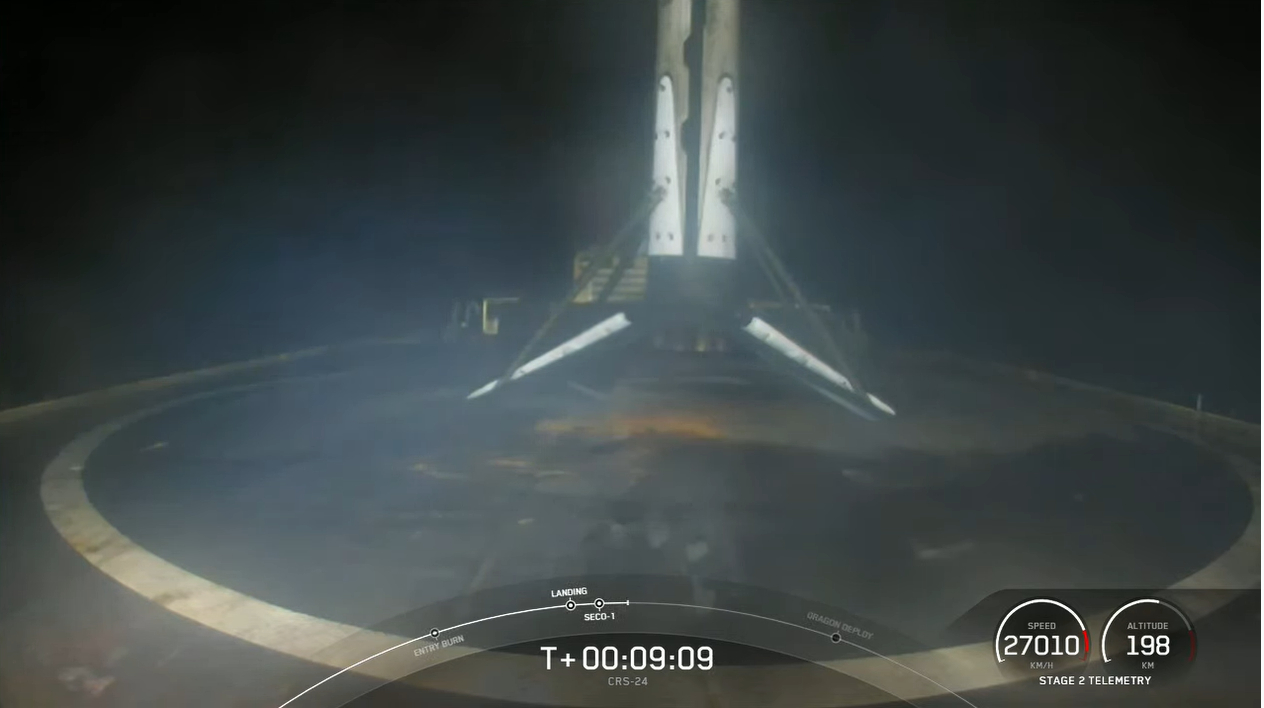
SpaceX’s Falcon 9 1st stage has landed successfully after launching Dragon CRS-24 cargo mission for NASA. That’s landing no. 100 for SpaceX.
Meanwhile, the Dragon CRS-24 cargo ship has reached orbit and separated from its Falcon 9 upper stage. Nose cone deployment is expected soon.
Stage Separation for Falcon 9 rocket
SpaceX’s Falcon 9 rocket first stage has separated from its upper stage and is beginning its return to Earth for a landing on the drone ship Just Read The Instructions in the Atlantic Ocean.
The upper stage carrying the Dragon CRS-24 cargo ship is continuing its ascent to orbit.
LIFTOFF! SpaceX launches Dragon CRS-24
LIFTOFF! SpaceX launches a new Falcon 9 rocket carrying the Dragon CRS-24 cargo ship for NASA. Next stop, International Space Station.
T-5 minutes to launch
SpaceX’s CRS-24 Dragon cargo mission is 5 minutes from launch and the weather looks like it may clear in time for today’s launch, SpaceX reports.
Fueling is underway for the Falcon 9 rocket and should be completed about 2 minutes before liftoff.
SpaceX CRS-24 launch webcast begins
SpaceX’s launch webcast for today’s CRS-24 Dragon cargo resupply mission has begun. You can watch it live in the window above or directly from NASA here (opens in new tab) and from SpaceX (opens in new tab). Liftoff is now targeted for 5:07 a.m. EST (1007 GMT), a minute later than earlier announced.
The weather forecast is dismal for today’s launch attempt, with just a 30% of good weather at NASA’s Pad 39A for today’s launch.
SpaceX to launch NASA CRS-24 cargo mission
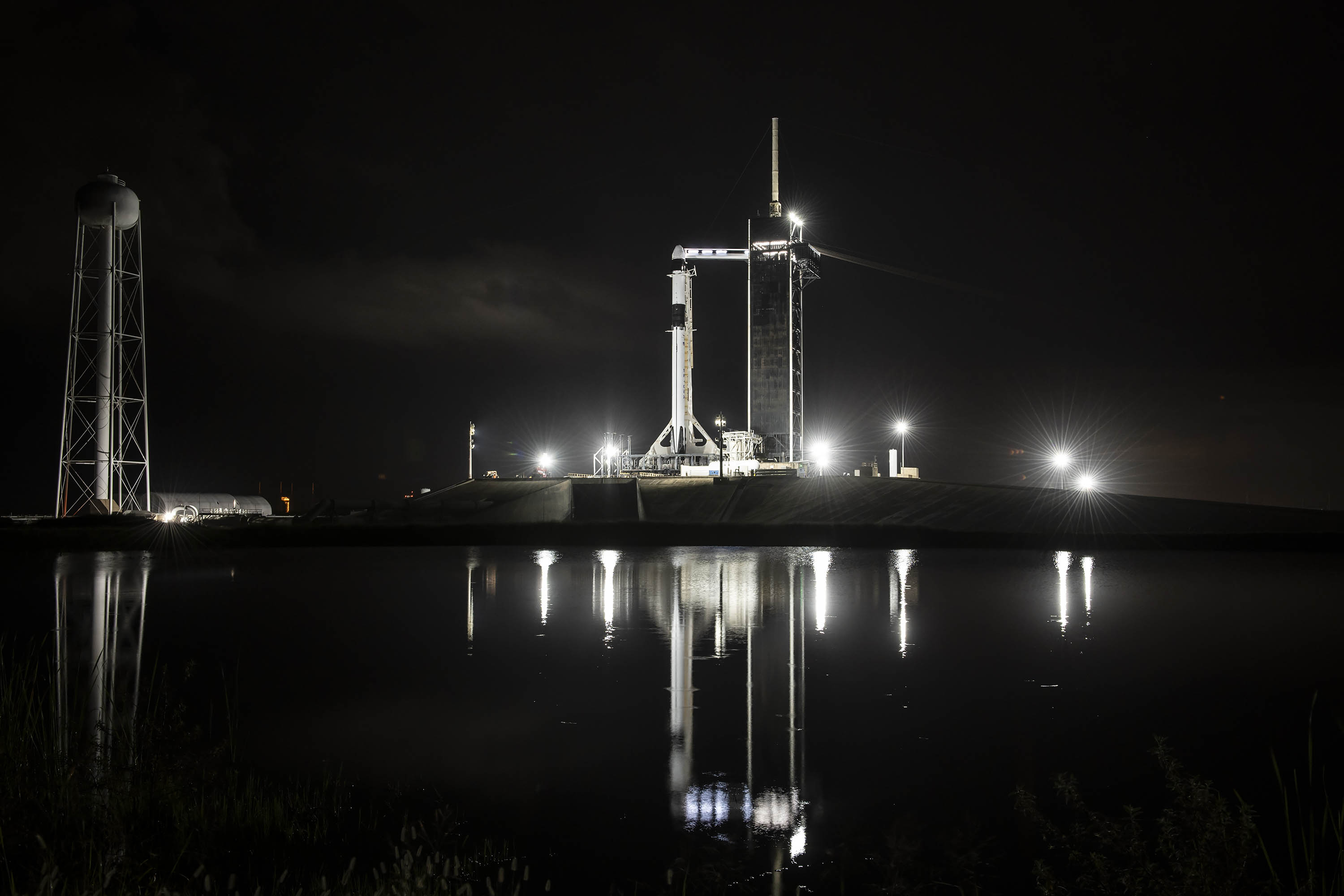
SpaceX is counting down to launch a new Falcon 9 rocket carrying the CRS-24 cargo mission to the International Space Station for NASA today (Dec. 21) and you can watch it live at the top of this page. Liftoff is at 5:06 a.m. EST (1006 GMT).
NASA and SpaceX will begin webcasting today’s launch at 4:45 a.m. EST (0945 GMT).
SpaceX is using a rare new Falcon 9 rocket for today’s launch. Its Cargo Dragon spacecraft previously flew to the space station. The mission will deliver about 6,500 pounds of supplies and experiment gear to the International Space Station for its Expedition 66 crew.
NASA, SpaceX press briefing today on CRS-24 cargo aunch
NASA and SpaceX are counting down to launch a new cargo ship to the International Space Station on Tuesday, Dec. 21, and will hold a prelaunch press conference today at 12 p.m. EST (1700 GMT). You can watch the prelaunch briefing live on this page, courtesy of NASA, in the window above.
The weather forecast is currently dismal, with only a 30% chance of good launch conditions.
Soyuz MS-20 crew is safe on Earth
Japanese billionaire Yusaku Maezawa, his videographer Yozo Hirano and Russian cosmonaut Alexander Misurkin have exited the Soyuz capsule and are headed to the Karaganda airport to begin their journeys home.
After a 12-day spaceflight, the trio touched down at about 10:13 p.m. EST (0313 GMT or 9:13 a.m. local time on Dec. 20) on the steppe of Kazakhstan, southeast of the town of Dzhezkazgan.
You can see video of the crew emerging from the Soyuz capsule above, and read our full story about today’s Soyuz landing here.
1st view of the Soyuz!
NASA TV finally has live video footage from the landing site. Here is the first view of the charred Soyuz MS-20 spacecraft that landed today!
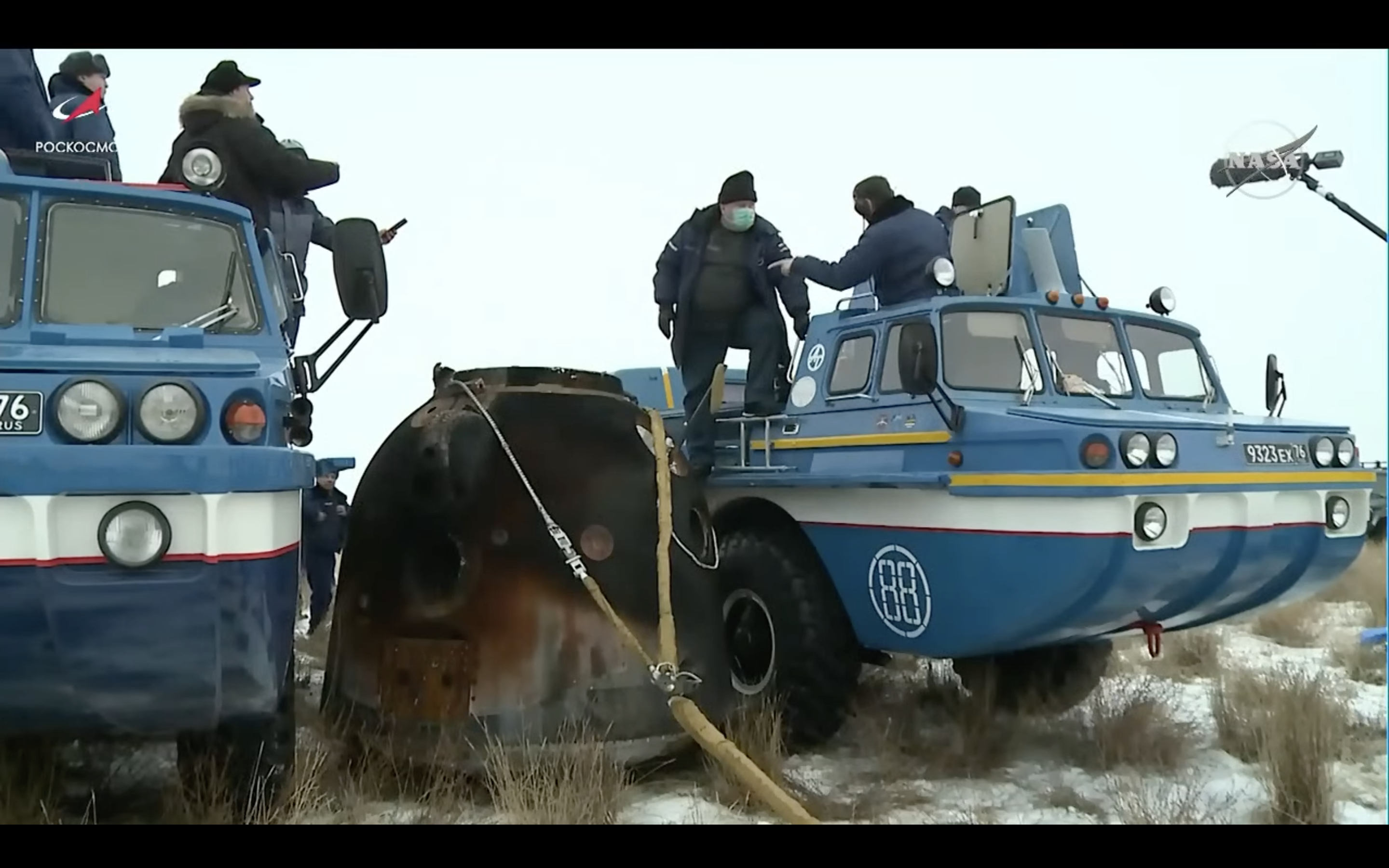
Recovery crew is on site
The crew is reportedly safe and in good health as search and recovery teams are helping them out of the capsule.
The Soyuz landed upright and did not tip over after the impact, which could help speed up the recovery process.
Roscosmos confirms Soyuz landing
The Soyuz MS-20 has successfully touched down, Dmitry Rogozin, director general of Russia’s space agency Roscosmos, announced on Twitter (opens in new tab).
NASA TV commentator Brandi Dean said that bad weather in Kazakhstan has somewhat hindered the recovery effort, but there is “no reason to suspect that anything is wrong.”
Recovery teams “had visuals of the Soyuz descending under parachutes, but because of the visibility issues with the weather there at the landing site [they] did not see the actual touchdown,” Dean said. “So they’re working on getting to the Soyuz at this point and we are standing by for confirmation that they are there with the crew.”
Touchdown?
The Soyuz MS-20 spacecraft should have touched down on time at 10:13 p.m. EST (0313 GMT), but NASA and Roscosmos have not yet confirmed the landing, and we’re still waiting on the first video footage from the landing site. There are no indications that anything went wrong with the landing, according to NASA TV commentator Brandi Dean.
Deorbit burn complete
The Soyuz MS-20 has successfully completed a deorbit burn after firing its engines for 4 minutes and 39 seconds. The spacecraft is on track for an on-time landing in Kazakhstan at 10:13 p.m. EST (0313 GMT).
The Soyuz is on its way to Earth
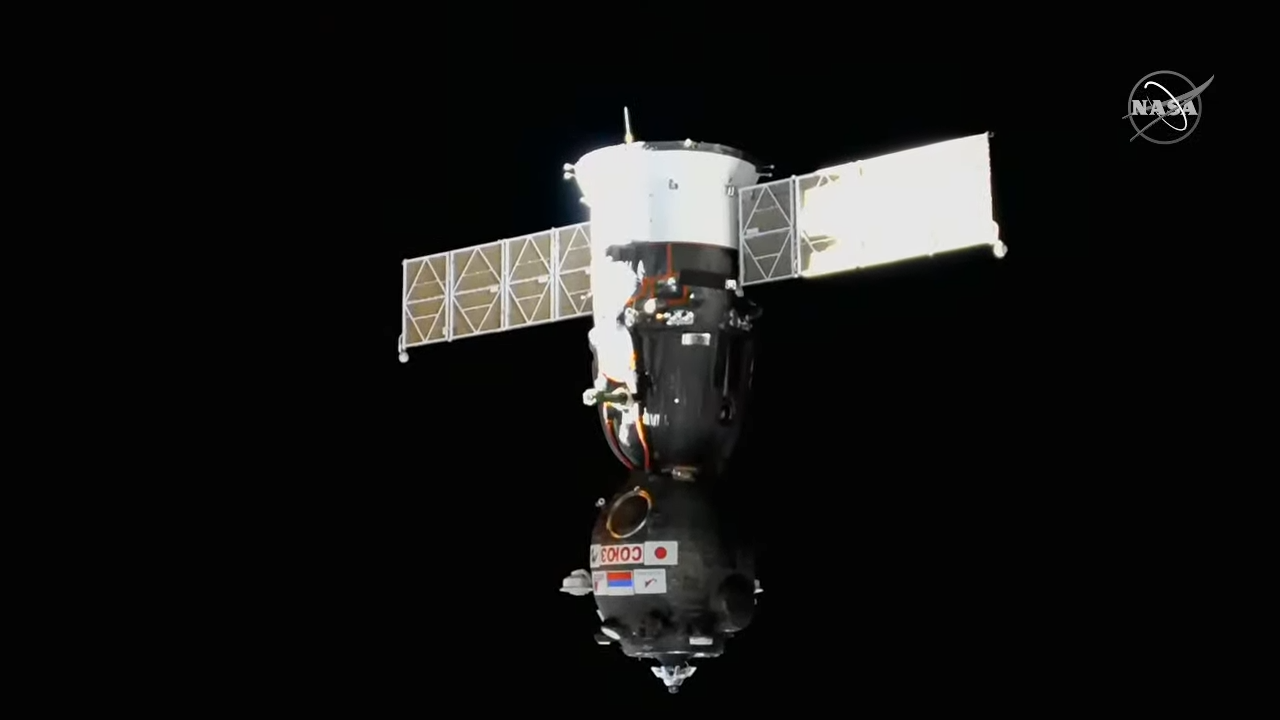
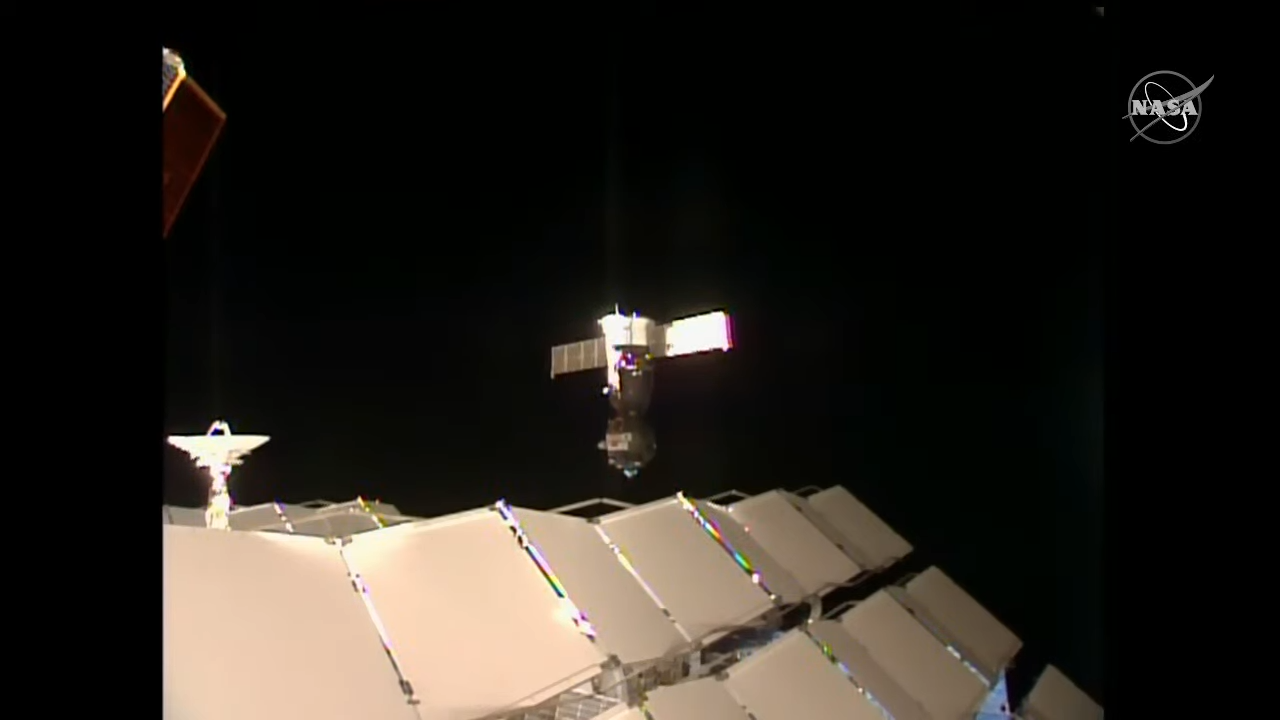
The Soyuz MS-20 spacecraft successfully separated from the International Space Station at 6:50 p.m. EST (2350 GMT) and is now on its way to Earth with Maezawa, Hirano and Misurkin on board. The space station was orbiting 263 miles (423) kilometers above Mongolia at the time of undocking.
NASA TV’s live coverage of their return to Earth will resume at 9 p.m. EST (0200 GMT), 18 minutes before the planned deorbit burn. After the deorbit burn, the Soyuz spacecraft will spend just under an hour descending to Earth. The crew is expected to touch down in Kazakhstan at 10:13 p.m. EST (0313 GMT).
NASA TV’s undocking coverage has begun
Alexander Misurkin, Yusaku Maezawa and Yozo Hirano are inside the Soyuz MS-20 spacecraft and preparing for an on-time departure from the International Space Station. The Soyuz MS-20 spacecraft is scheduled to undock at 6:50 p.m. EST (2350 GMT) and land in Kazakhstan at 10:13 p.m. EST (0313 Dec. 20 GMT). You can watch it live now in the window above. Read more
Landing day for Japanese space tourists
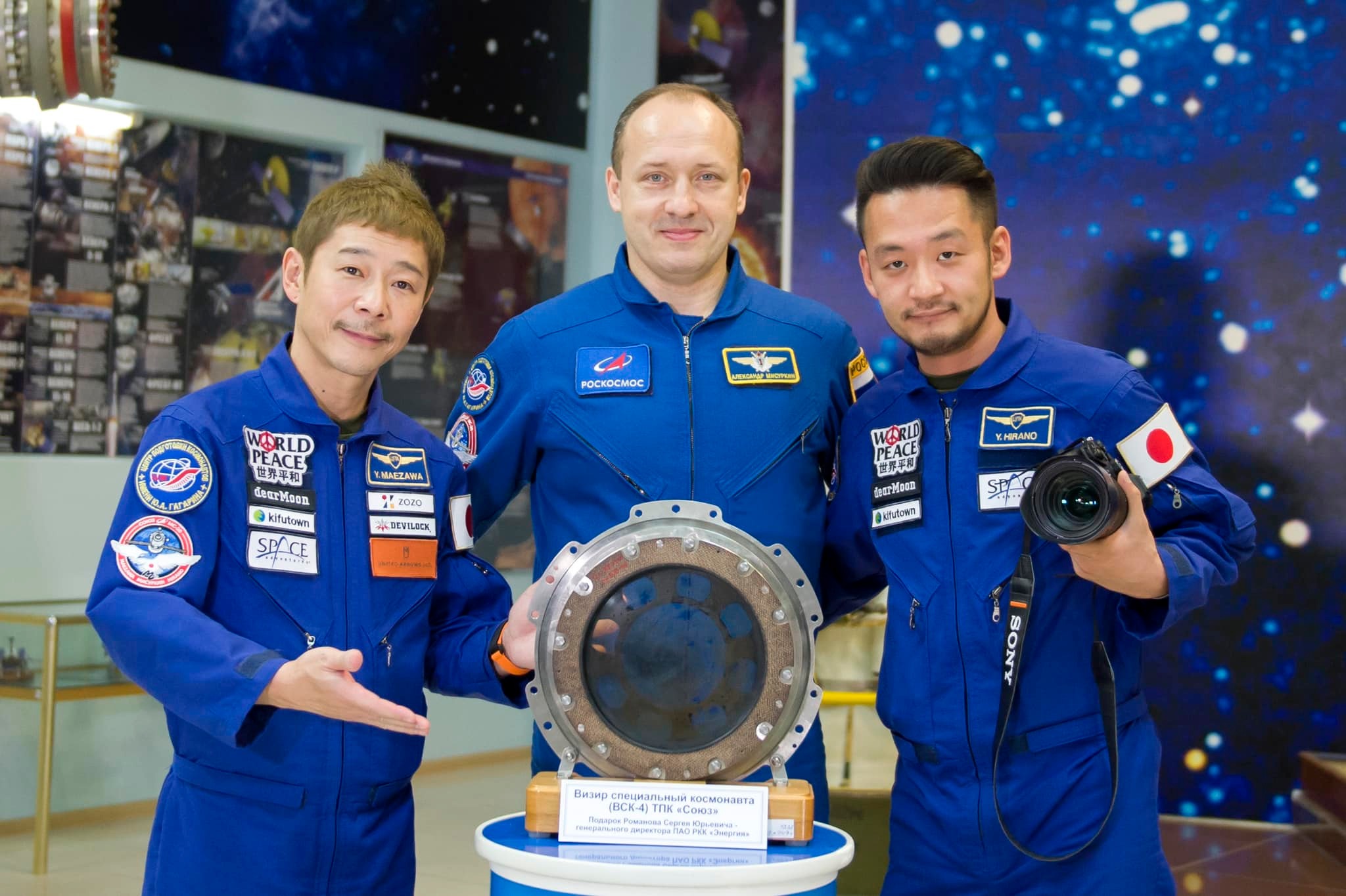
It’s landing day for Japanese billionaire space tourist Yusaku Maezawa, his video producer Yozo Hirano and Russian cosmonaut Alexander Misurkin.
The trio will return to Earth tonight, Dec. 19, in their Soyuz spacecraft with a landing on the steppes of Kazakhstan scheduled for 10:18 p.m. EST (0318 GMT on Dec. 20). You can watch it live on this page in the NASA TV video feed at the top.
NASA will broadcast several events today leading up to tonight’s landing. Here’s a schedule to plan your afternoon and evening:
- 3 p.m. EST / 2000 GMT — NASA TV coverage begins for hatch closing at 3:32 p.m. EST (2032 GMT)
- 6:30 p.m. EST / 2300 GMT — NASA TV coverage begins for undocking at 6:54 p.m. EST (2354 GMT)
- 9 p.m. EST / 0200 GMT Dec. 20 — NASA TV coverage begins for deorbit and landing. Landing is targeted for 10:18 p.m. EST / 0318 GMT Dec. 20.
Maezawa, Hirano and Misurkin launched to the space station on Dec. 8 on a mission brokered for Maezawa by the U.S. space tourism company Space Adventures. Maezawa is financing the entire trip for an undisclosed sum, though past tourist flights to the station have cost more up to $35 million for one person based on reports from Cirque du Soliel founder Guy Laliberte’s flight in 2009. Maezawa has paid for two people, suggesting an even higher fee.
Maezawa and Hirano have spent their time in space recording videos of Maezawa showcasing the spaceflight experience. They also delivered the first Uber Eats meal in space and Hirano is participating in some medical experiments to study the effects of spaceflight on the human body.
Watch NASA TV tonight to see the trio return to Earth.
Postcard from the space station
Japanese billionaire Yusaku Maezawa has figured out how to float. Two days into his stay aboard the International Space Station, Maezawa on Twitter (opens in new tab) shared an image of him seated cross-legged and waving at the camera with the caption, “Hi from space.”
Japanese billionaire
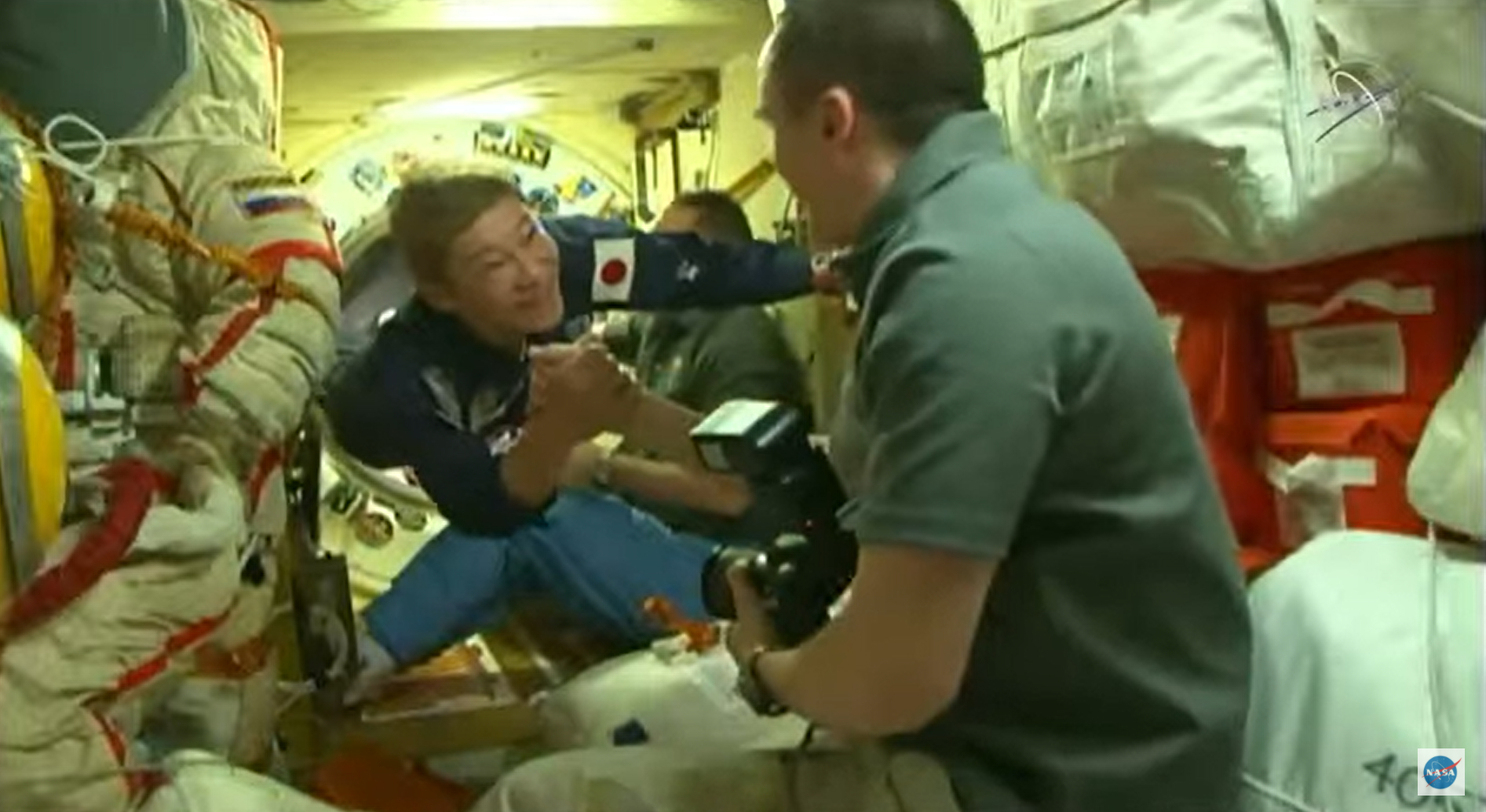
Japanese space tourists Yusakuy Maezawa and Yozo Hirano have begun their 12-day stay aboard the International Space Station after entering the orbiting laboratory at 11:11 a.m. EST (1611 GMT) with veteran Russian cosmonaut Alexander Misurkin.
The two space tourists, whose flight was arranged by the Virginia-based company Space Adventures with Russia’s space agency Roscosmos, are due to return to Earth on Dec. 19 at 9 p.m. EST (0200 GMT Dec. 20) on the remote steppes of Kazakhstan.
Japanese space tourists, cosmonaut to enter ISS

Japanese billionaire Yusaku Maezawa, video producer Yozo Hirano and Russian cosmonaut Alexander Misurkin have climbed out of their Sokol launch pressure suits and are preparing to enter the International Space Station after their successful docking earlier today. The Soyuz MS-20 crew are conducting final leak checks between their Soyuz and the space station before opening the hatches between their two spacecraft.
NASA is broadcasting live views of today’s hatch opening ceremony, which you can watch in the video feed at the top of this page.
Docking complete!
The Soyuz capsule carrying Japanese billionaire Yusaku Maezawa, his video producer Yozo Hirano and Russian cosmonaut Alexander Misurkin docked to the International Space Station at 8:40 a.m. EST (1340 GMT) after four orbits around Earth and about six hours after launch. Read the full story (opens in new tab).
The trio are scheduled to enter the space station at about 10:35 a.m. EST (1535 GMT), with a live webcast beginning about 20 minutes prior.
Watch Japanese space tourists dock at space station
Japanese billionaire Yusaku Maezawa and his video producer Yozo Hirano will dock at the International Space Station today at 8:41 a.m. EST (1341 GMT) with Russian cosmonaut Alexander Misurkin and you can watch it live here. The live webcast will begin at 8 a.m. EST (1300 GMT) from NASA.
Maezawa and his crewmates launched to the space station early Wednesday and will spend 12 days on the space station. Maezawa bought the flight with Space Adventures, which has arranged several space tourism flights to the International Space Station with Russia’s Roscosmos space agency.
Maezawa, Hirano and Misurkin are scheduled to enter the space station at 10:35 a.m. EST (1535 GMT). A hatch opening ceremony webcast will begin at 10:15 a.m. EST (1515 GMT).
Billionaire Yusaku Maezawa, two others launch toward space station
Billionaire Japanese entrepreneur Yusaku Maezawa and his two crewmates are on their way to the International Space Station.
A Russian Soyuz spacecraft carrying Maezawa, fellow space tourist Yozo Hirano and cosmonaut Alexander Misurkin launched atop a Soyuz rocket from Baikonur Cosmodrome in Kazakhstan Wednesday (Dec. 8) at 2:38 a.m. EST (0738 GMT). [Full story.]
The trio is expected to arrive at the space station around 8:41 a.m. EST (1341 GMT) on Wednesday. The spaceflyers will remain in orbit for nearly 12 days, returning to Earth on Dec. 19.
Japanese billionaire Yusaku Maezawa launching to space station early Wednesday
Japanese billionaire Yusaku Maezawa and two crewmates will launch toward the International Space Station early Wednesday morning (Dec. 8), and you can watch the action live.
A Russian Soyuz spacecraft carrying Maezawa, video producer Yozo Hirano and cosmonaut Alexander Misurkin is scheduled to lift off from Baikonur Cosmodrome in Kazakhstan Wednesday at 2:38 a.m. EST (0738 GMT). Watch it live at Space.com’s homepage courtesy of NASA, or directly via the space agency (opens in new tab).
Maezawa paid for his seat and that of Hirano, who will document the mission. Their flight was organized by Virginia company Space Adventures, which has sent eight other people on seven trips to the orbiting lab over the years.
Get ready for tomorrow’s spacewalk!
At 2 p.m. EDT (1900 GMT) today (Nov. 29), NASA will be hosting a news conference detailing what they expect to happen during tomorrow’s upcoming spacewalk.
The news conference will include three experts who will discuss the spacewalk and answer questions with a Q&A. Those experts include Dana Weigel, NASA’s deputy manager of the International Space Station Program, Vincent LaCourt, NASA’s spacewalk flight director and Art Thomason, NASA’s spacewalk officer.
Check out the NASA TV live video above to catch the press conference.
The spacewalk being discussed will see NASA astronauts Thomas Marshburn and Kayla Barron, who recently arrived at the orbiting lab aboard SpaceX’s Crew-3 mission. They will exit the station’s Quest airlock around 7:10 a.m. EDT (1210 GMT) tomorrow (Nov. 30) to replace a faulty antenna system. Live coverage for the spacewalk itself is set to begin at 5:30 a.m. EDT (1030 GMT).
DOCKING! Progress 79 at space station

Progress 79 has successfully docked at the International Space Station, linking up with the orbiting lab’s Russian-built Zvezda service module at 9:31 p.m. EDT (0131 GMT) as the two ships sailed 258 miles over Argentina, just south of Buenos Aires.
“It doesn’t get much smoother than that,” NASA spokesperson Rob Navias said of the docking during live commentary. “A flawless ride from the launch pad at Baikonur to docking at the International Space Station.”
That will wrap our coverage of Roscosmos’ Progress 79 cargo ship docking at the International Space Station. Stay tuned for more updates from the station as they come up!
Progress 79 on final approach to ISS
The Progress 79 cargo ship is now on final approach to its docking port at the Zvezda service module of the International Space Station.
The berth is at the aft end of the station’s Russian segment.
Progress 79 flyaround underway
Progress 79 is now flying around the International Space Station to reach a point about 150 meters from the station’s Russian-built Zvezda service module, its destination for today’s cargo delivery.
Docking still set for 9:34 pm EDT (0134 GMT).
Progress 79 in sight of space station
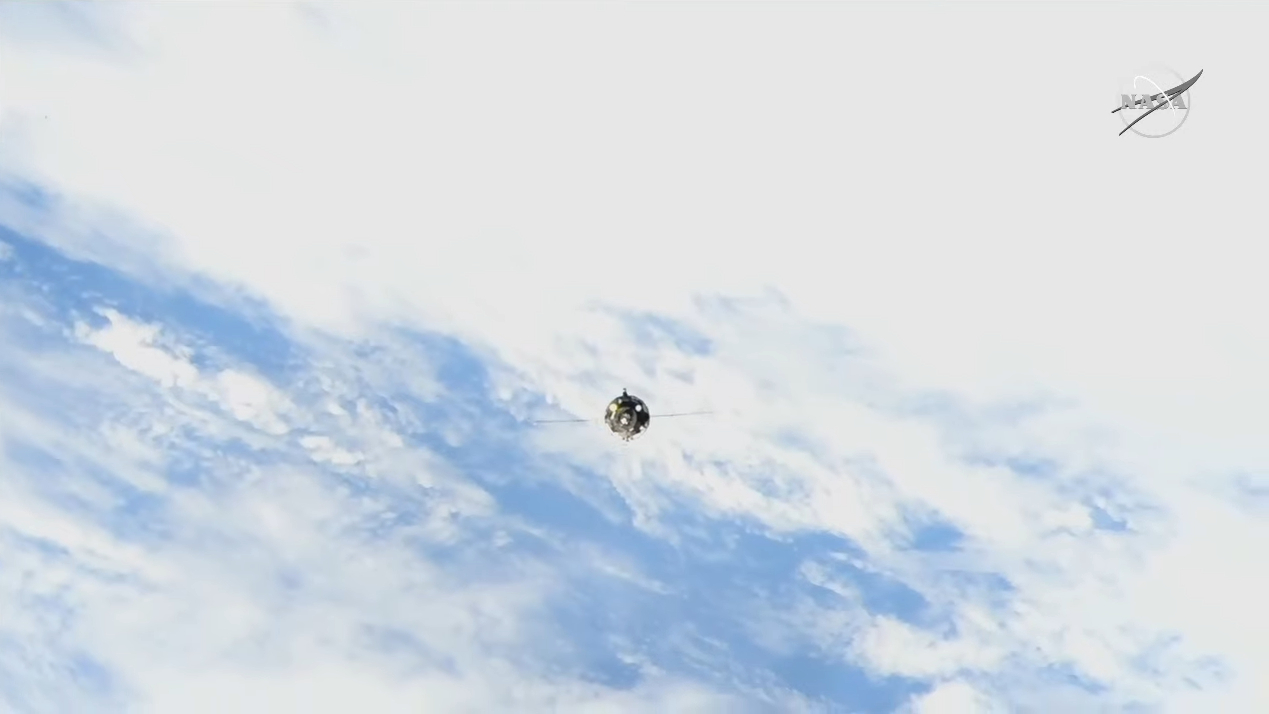
Progress 79 is now less than 1 kilometers from the International Space Station as it nears the space station. Cameras on the station are showing stunning views of the approaching spacecraft.
Today’s docking approach is on track with no issues.
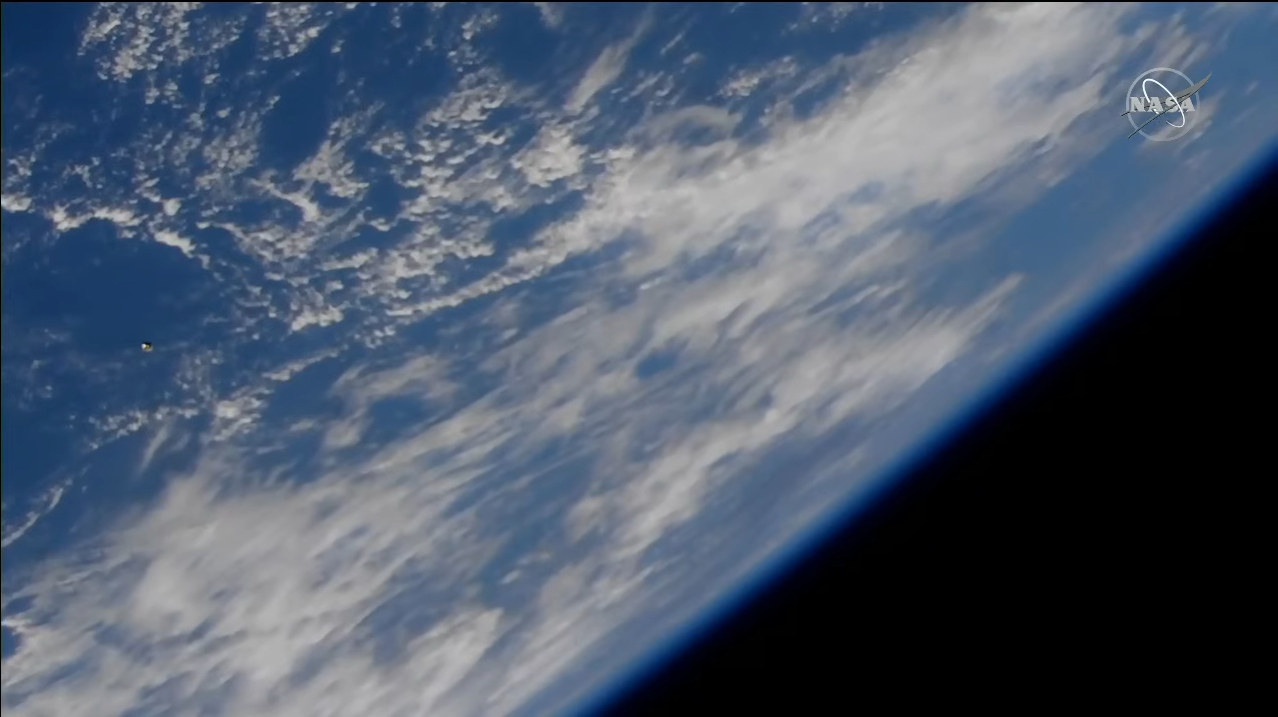
NASA livestream underway for Progress 79 docking
NASA’s webcast for tonight’s Progress 79 cargo ship docking at the International Space Station has begin.
The Russian built Progress 79 cargo ship will dock at the Zvezda service module on the space station at 9:34 p.m. EDT (0134 GMT). The spacecraft is carrying more than 5,600 pounds of supplies and gear — 2.8 tons in all — for the station’s seven-astronaut crew.
You can watch the docking live above at the top of this page.
Progress 79 is currently about 7 kilometers away from the space station as it approaches a flyaround point to reach its docking port.
Progress 79 cargo ship to dock tonight
The uncrewed Russian cargo ship Progress 79, which launched into orbit late Wednesday (Oct. 27), is due to dock at the International Space Station tonight and you can watch it live here.
Progress 79, which is hauling nearly 3 tons of food, clothing, propellant and other supplies, will link up to the station’s Russian-built Zvezda service module at 9:34 p.m. EDT (0134 GMT). NASA’s live webcast of the rendezvous will begin at 8:45 p.m. EDT (0045 GMT).
You can watch the events live in the window at the top of this page. At 10 p.m. EDT (0200 GMT), NASA and SpaceX will also conduct a launch readiness review press conference for the Crew-3 SpaceX astronaut mission, due to launch on Oct. 31.
Progress 79 launches to space station
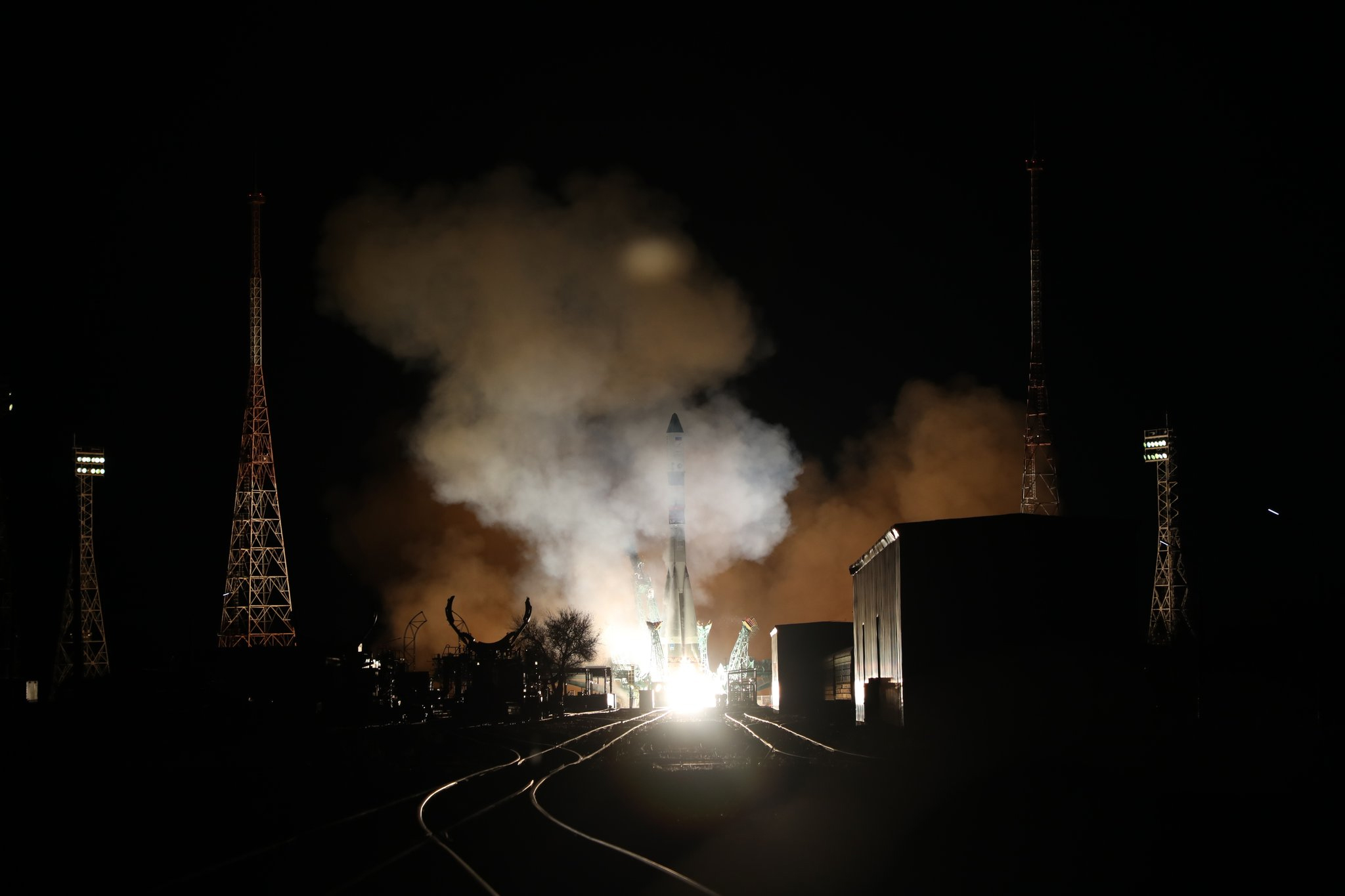
Russia’s space agency Roscosmos successfully launched the Progress 79 cargo ship to the International Space Station tonight at 8 p.m. EDT (0000 GMT) from Pad 6 of Site 31 at Baikonur Cosmodrome in Kazakhstan. It was 5 a.m. local time at the launch site.
NASA spokesman Rob Navias said during live commentary that the Soyuz 2.1a rocket’s liftoff was a “perfect launch.”
The Progress 79 cargo ship is now making its uncrewed flight to the station, where it will dock late Friday night at the aft end of the station’s Russian-built Zvezda service module.
Docking is set for 9:34 p.m. EDT, Friday, Oct. 29 (0134 GMT Saturday, Oct. 30).
Russian Progress 79 cargo ship ready to launch
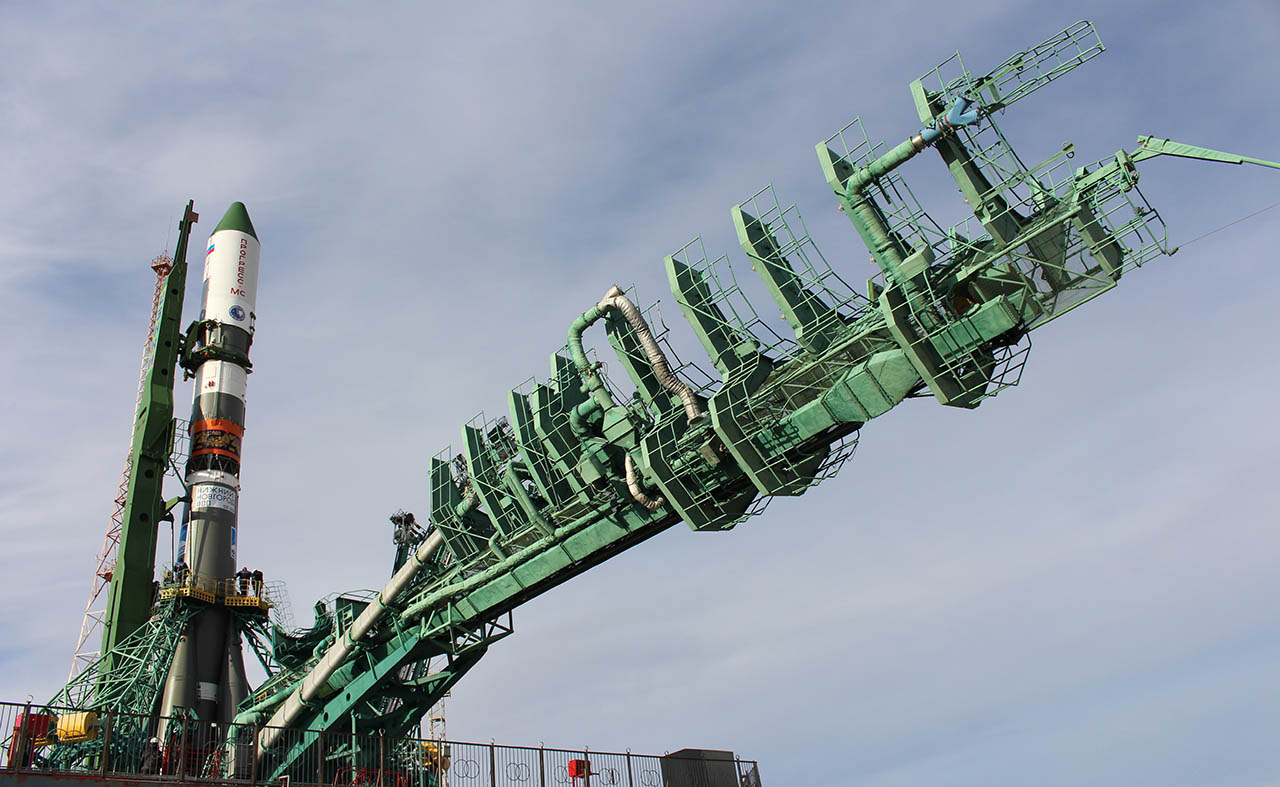
A Russian Soyuz rocket is poised to launch a new Progress cargo ship to the International Space Station tonight and you can watch it live here at the top of this page.
The Progress 79 cargo ship will launch about 3 tons of supplies to the space station from the Baikonur Cosmodrome in Kazakhstan. The ship will dock at the station on Friday, Oct. 29.
You can watch the launch live above, or from our launch preview page here.
Progress 78 successfully docks at Nauka
The uncrewed Progress 78 cargo resupply ship has successfully docked with the Russian Multipurpose Laboratory module, or Nauka, nearly 29 hours after undocking from Russia’s Poisk module. The time of capture was 12:21 a.m. EDT (0421 GMT).
Contact and capture confirmed! The @roscosmos Progress 78 cargo craft redocked to station at 12:21am ET as Progress and the station flew 258 miles over the south Pacific. https://t.co/cBNqC5JGaz pic.twitter.com/XoQLUVRftxOctober 22, 2021
Watch Progress 78 dock with the space station
Russia’s Progress 78 cargo resupply spacecraft successfully undocked from the space station’s Poisk module late Wednesday (Oct. 20) and is currently scheduled to dock at the Nauka module at 12:24 a.m. EDT (0424 GMT) on Friday (Oct. 22). You can watch a live webcast of the docking in the window above.
Read the full story: Russian cargo ship moves to new parking spot at space station
That’s a wrap!
Russian actress Yulia Peresild and producer Klim Shipenko landed with cosmonaut Oleg Novitskiy Sunday (Oct. 17) at 12:35 a.m. EDT (0435 GMT or 10:35 a.m. local time) on the steppe of Kazakhstan. Read the full story
Soyuz undocking complete
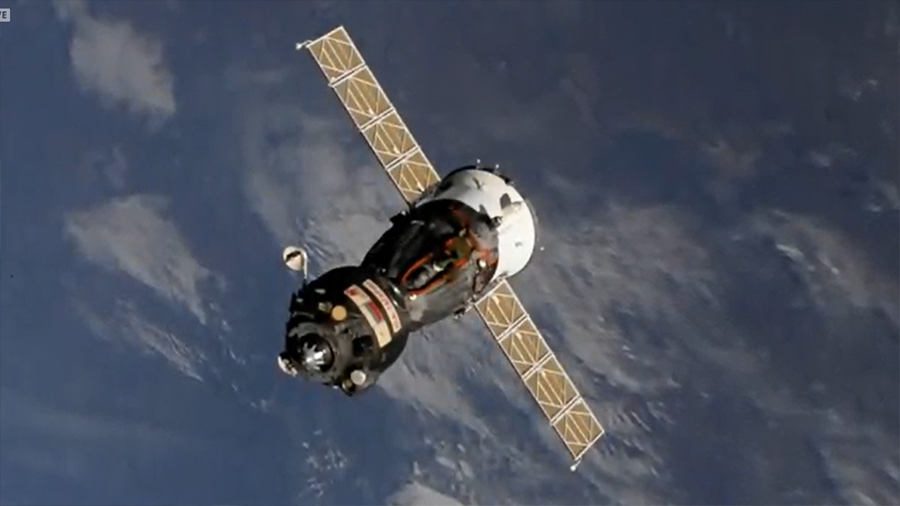
Cosmonaut Oleg Novitsky, actor Yulia Peresild and director Klim Shipenko are on their way back to Earth after undocking from the International Space Station in their Soyuz spacecraft.
NASA TV’s live coverage of the deorbit burn and landing will resume tonight (Oct. 16) at 11:15 p.m. EDT (0315 GMT); the landing in Kazakhstan is scheduled for approximately 12:36 a.m. (0436 GMT; 10:36 a.m. Kazakhstan time) on Sunday, Oct. 17.
It’s landing day!
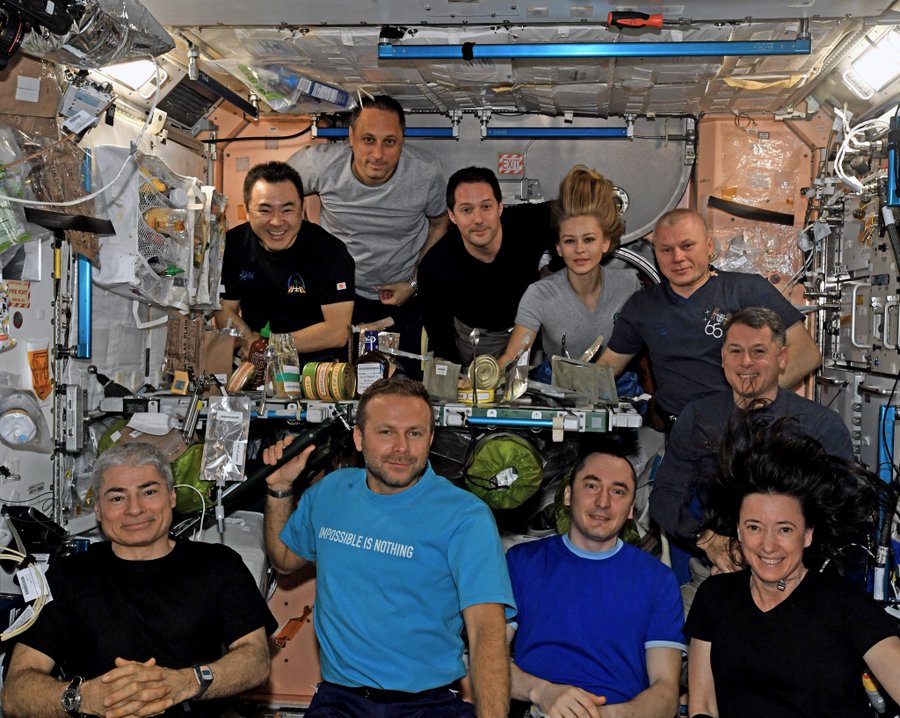
It’s landing day! Cosmonaut Oleg Novitsky, who is wrapping up a six-month stay in space, and a Russian actor Yulia Peresild and director Klim Shipenko, who have spent less than two weeks in orbit, are headed back to Earth.
If you’re thinking of tuning in, check out our full guide to today’s landing webcasts.
The trio will say their goodbyes at about 4:15 p.m. EDT (2015 GMT) before climbing into the Soyuz MS-18 capsule, which will undock from Russia’s Nauka module of the International Space Station on Saturday (Oct. 16) at 9:14 p.m. EDT (0114 GMT on Oct. 17) for the trip home.
The capsule, slowed by parachutes, will land in Kazakhstan on Sunday (Oct. 17) at 12:36 a.m. EDT (0436 GMT; 10:36 a.m. local time).
NASA TV and Space.com will offer live coverage of all three milestones, so stay tuned!
Megan McArthur shares stunning Earth timelapse
Lightning storms, auroras and city lights glow across planet Earth in this gorgeous new timelapse video captured by NASA astronaut Megan McArther at the International Space Station.
“Friday Night Lightning!” McArthur tweeted (opens in new tab). “Checkout this time lapse taken over Africa from our cupola. In addition to thunderstorms, you can see city lights, the Milky Way, satellites, and even a bit of aurora at the end.”
Russian film crew boards space station
Russian actress Yulia Peresild and producer-director Klim Shipenko have entered the International Space Station with their cosmonaut guide Anton Shkaplerov to begin their 12-day movie shoot in orbit.
The trio entered the station’s Rassvet module at about 11 a.m. EDT (1500 GMT), jus about 6 hours after launching into orbit on their Soyuz rocket. They joined seven other crewmembers already aboard the station, including Expedition 65 cosmonaut Oleg Novitskiy, who will appear in the film Peresild and Shipenko are shooting. It’s called “The Challenge,” with Peresild portraying a surgeon sent into orbit to help a cosmonaut (Novitskiy) in medical distress.
“I still feel that it’s all a dream and I’m still asleep,” Peresild, 37, told Russia’s Channel One during a welcome ceremony on the station.
Shipenko agreed.
“Yes, it’s almost impossible to think that this all came to reality,” the 38-year-old director said.
During the welcome ceremony, Peresild received a congratulatory call from Valentina Tereshkova, who became the first woman in space in 1963 on the Vostok 6 mission.
“It was extremely emotional for everyone, from sadness to happiness,” Tereshkova said of the launch in Russian, which was translated on NASA TV. “We’re very proud of you,” she added, saying she had only one wish for the crew.
“Everything should go nominal, that’s our best wish,” Tereshkova said. “We want all your dreams to come true and we’ll be waiting for you back here on Earth.”
Hatch Opening Underway
Astronauts on the International Space Station are now working to open the hatches between the station and the Soyuz MS-19 spacecraft, allowing the Russian film crew to enter the orbiting lab.
Space station hatch opening delayed
Russian mission control officials have told the station and Soyuz crews that hatch opening will occur in about an hour, a bit later than planned.
We’re awaiting a new hatch opening target time from NASA.
Russian film crew to enter space station
The Russian film crew that launched to the International Space Station today on a Soyuz spacecraft is preparing to enter the orbiting laboratory for the first time. Hatches between the space station and their Soyuz MS-19 are due to be opened at 10:05 a.m. EDT (1405 GMT).
You can watch the hatch opening and a welcome ceremony live in the NASA TV video feed at the top of this page.
Amazing views of Soyuz docking with Russian film crew
Today’s successful docking of a Russian film crew at the International Space Station had some star quality of its own. As the Soyuz MS-19 spacecraft carrying Russian actress Yulia Peresild, director Klim Shipenko and cosmonaut Anton Shklaperov neared the station, a camera on the orbiting lab captured spectacular views of the approaching spacecraft.
Check out the views in the video above!
Docking! Soyuz delivers Russian film crew to space station
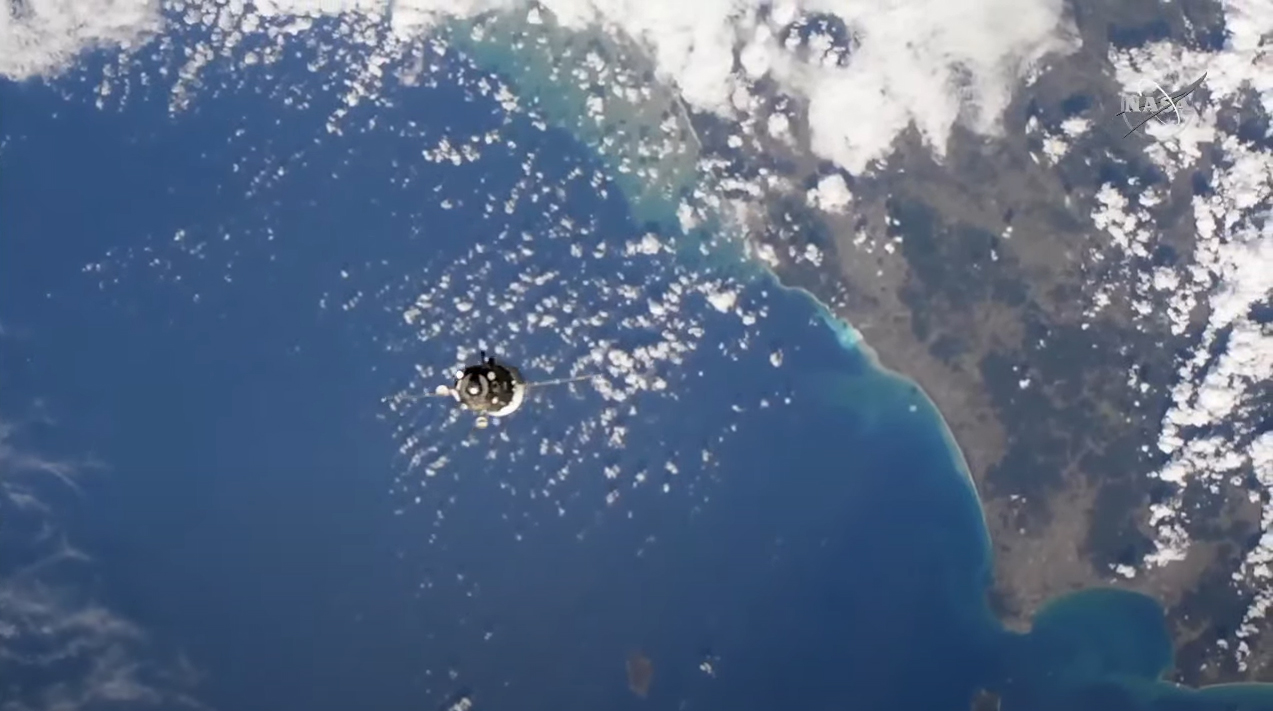

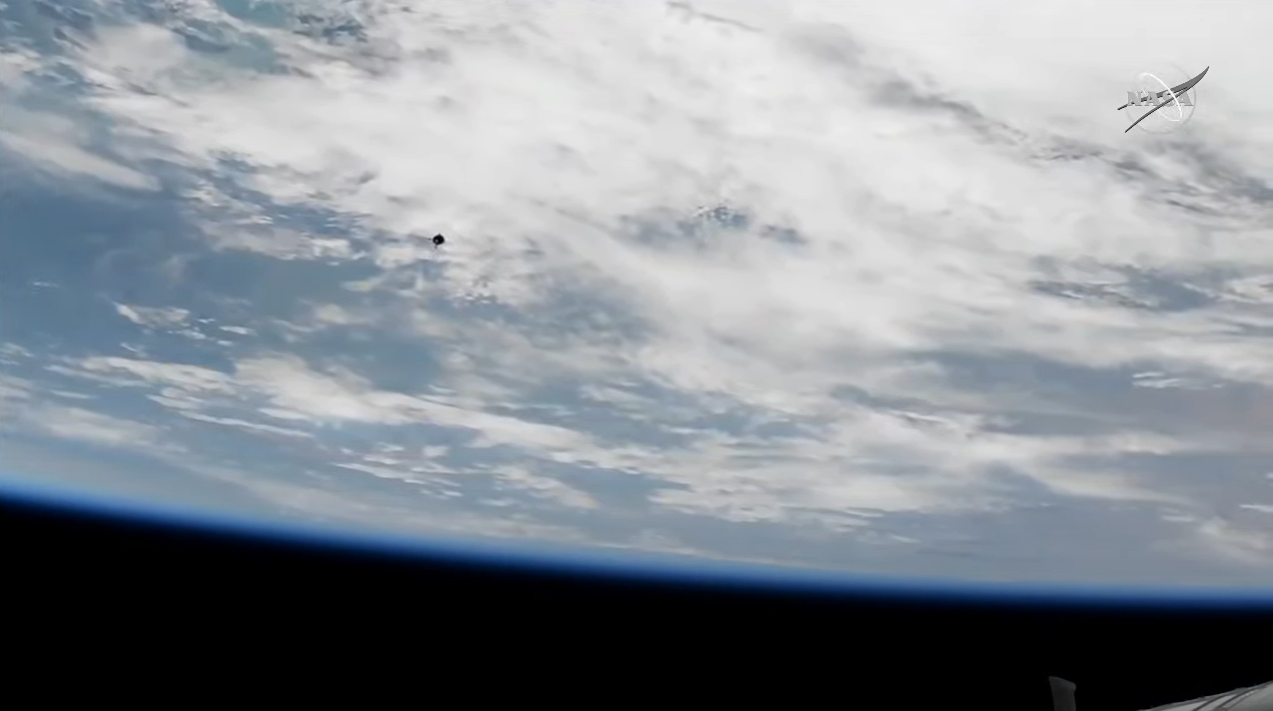
The Soyuz MS-19 spacecraft carrying a Russian actress and her producer/director has successfully docked at the International Space Station. It linked up with a port on the station’s Rassvet module at 8:22 a.m. EDT (1222 GMT), about 10 minutes later than planned after communications issues forced cosmonaut Anton Shklaperov to take manual control of the Soyuz for the docking.
Despite the communications issue, Shklaperov docked the Soyuz at its port to deliver Russian actress Yulia Peresild and producer-director Klim Shipenko to the station. The duo will film scenes for an upcoming space film called “The Challenge,” with Peresild portraying a surgeon launched into space to help an ailing cosmonaut, to be portrayed by cosmonaut Oleg Novitskiy, who is already aboard the space station.
“So the Soyuz MS-19’s safely at port, and a Russian actress and her producer-director are on set at the International Space Station for 12 days of movie making,” NASA spokesperson Rob Navias said during live commentary.
Peresild, Shipenko and Shklaperov will enter the space station at 10:05 a.m. EDT (1405 GMT) when the hatches are due to open between the Soyuz and station. NASA’s live coverage will resume at 9:30 a.m. EDT (1330 GMT).
Live docking coverage has begun
NASA’s webcast for today’s Soyuz docking at the International Space Station has begun. The Soyuz MS-19 spacecraft will dock its Russian film crew and cosmonaut commander at the station at 8:12 a.m. EDT (1212 GMT).
Soyuz reaches orbit with Russian film crew
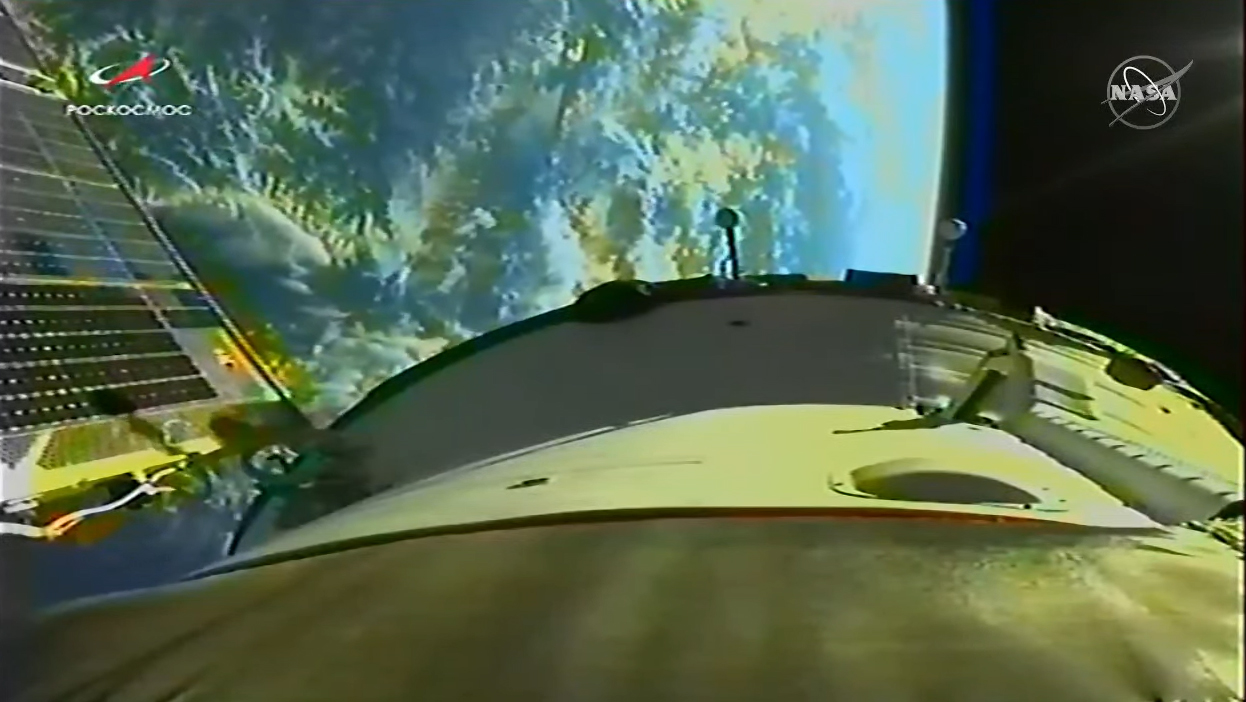
Spacecraft separation! The Soyuz spacecraft carrying cosmonaut Anton Shklaperov, actress Yulia Peresild and director Klim Shipenko has successfully reached orbit after separating from its third stage and deploying solar arrays.
‘We’re feeling great, everything’s working nominally’ Soyuz commander Shklaperov reports.
The three space travelers are on a two-orbit trip to the International Space Station and will arrive at 8:12 a.m. EDT (1212 GMT). NASA’s docking coverage will begin at 7:30 a.m. EDT (1130 GMT). You can watch that in the window at the top of this page at start time.
LIFTOFF! Russian film crew launches to space station

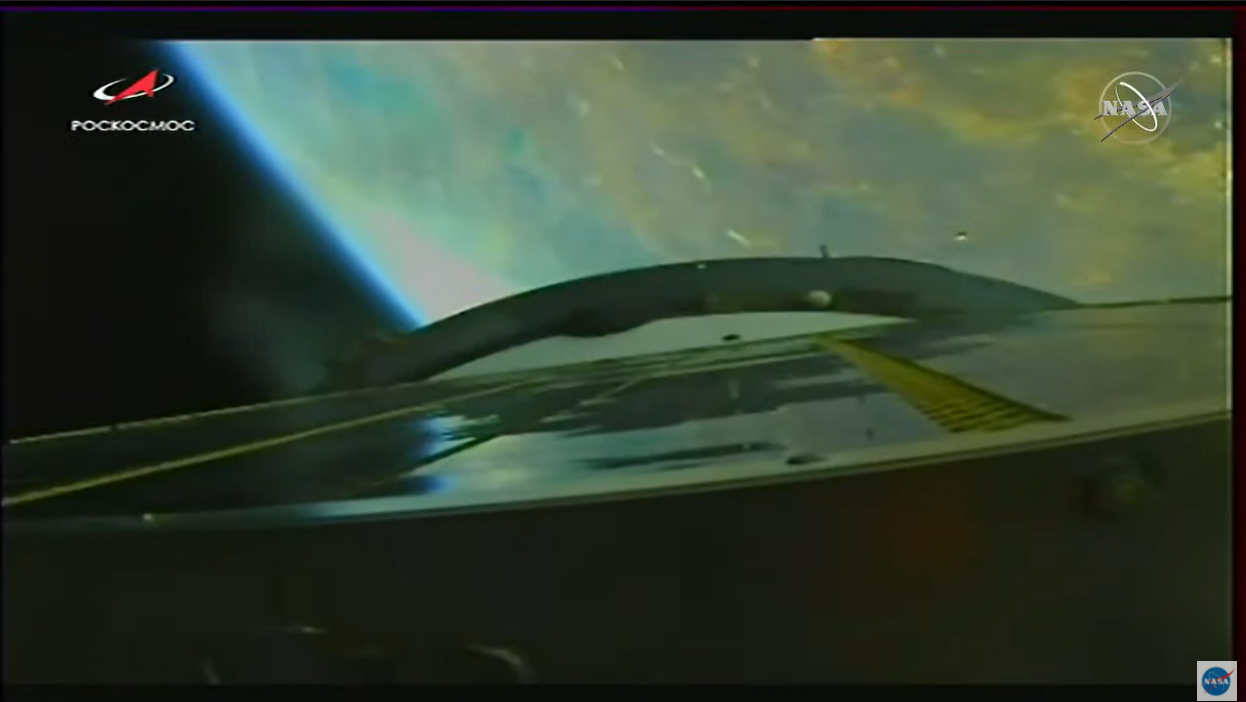
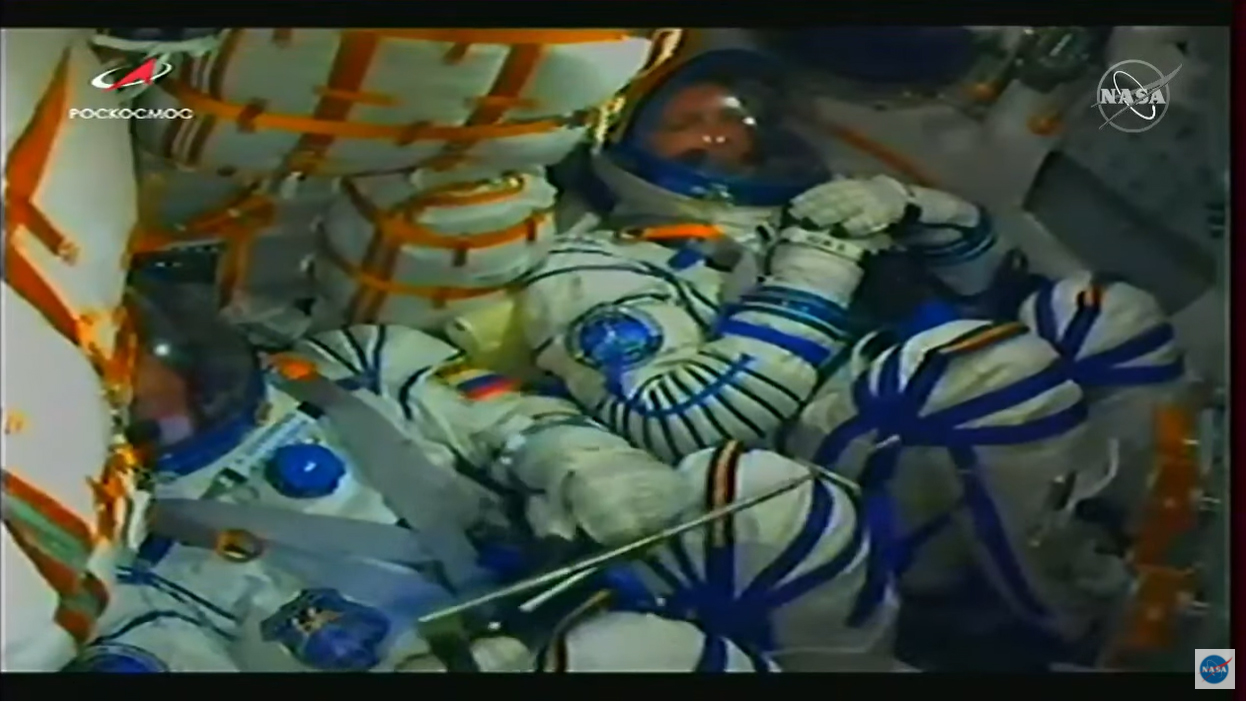
Liftoff! The Soyuz rocket carrying a Russian film crew to the International Space Station lifted off on time at 4:55 a.m. EDT (0855 GMT).
Russian film crew before launch
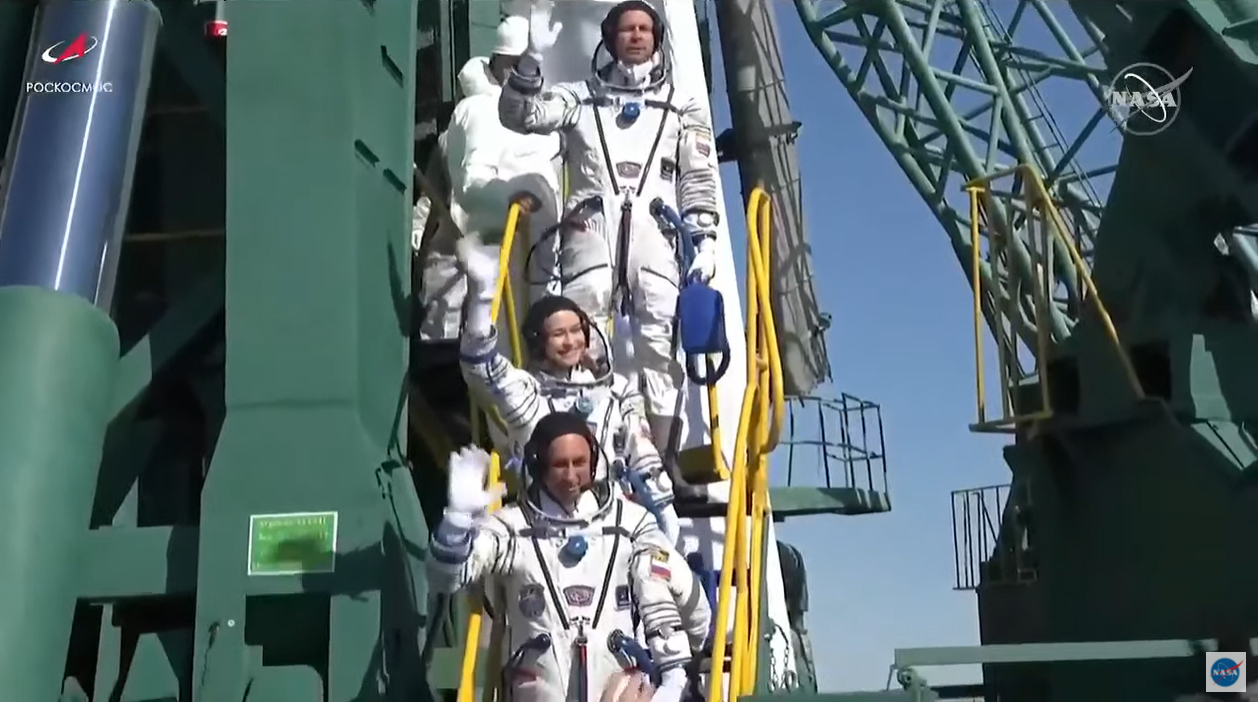
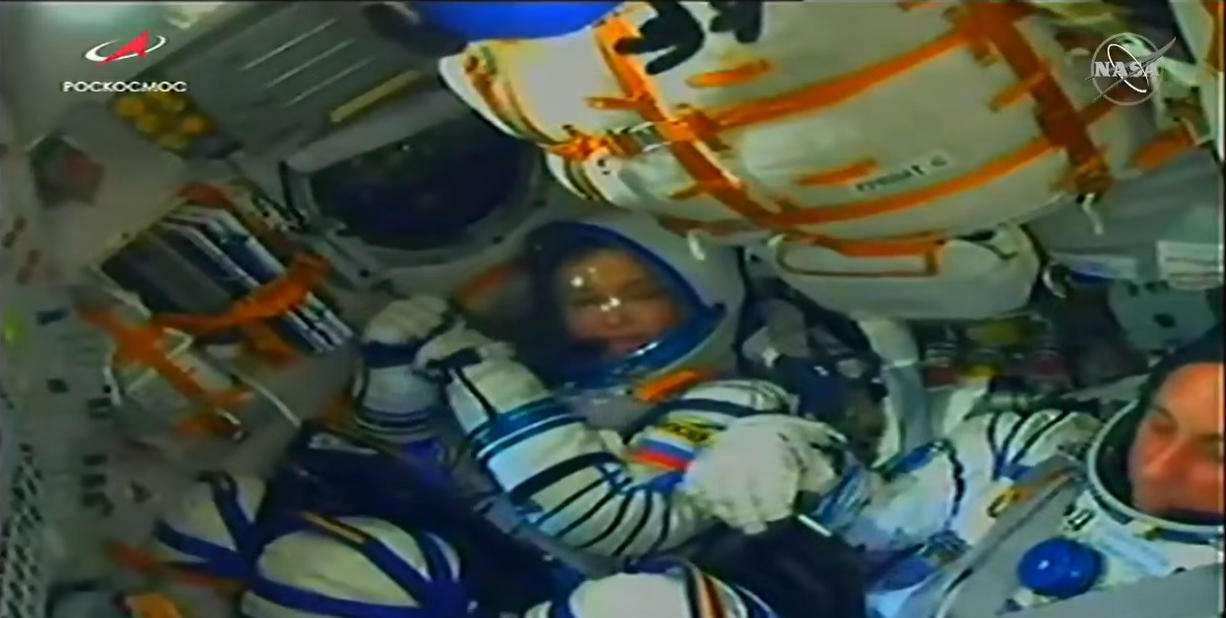
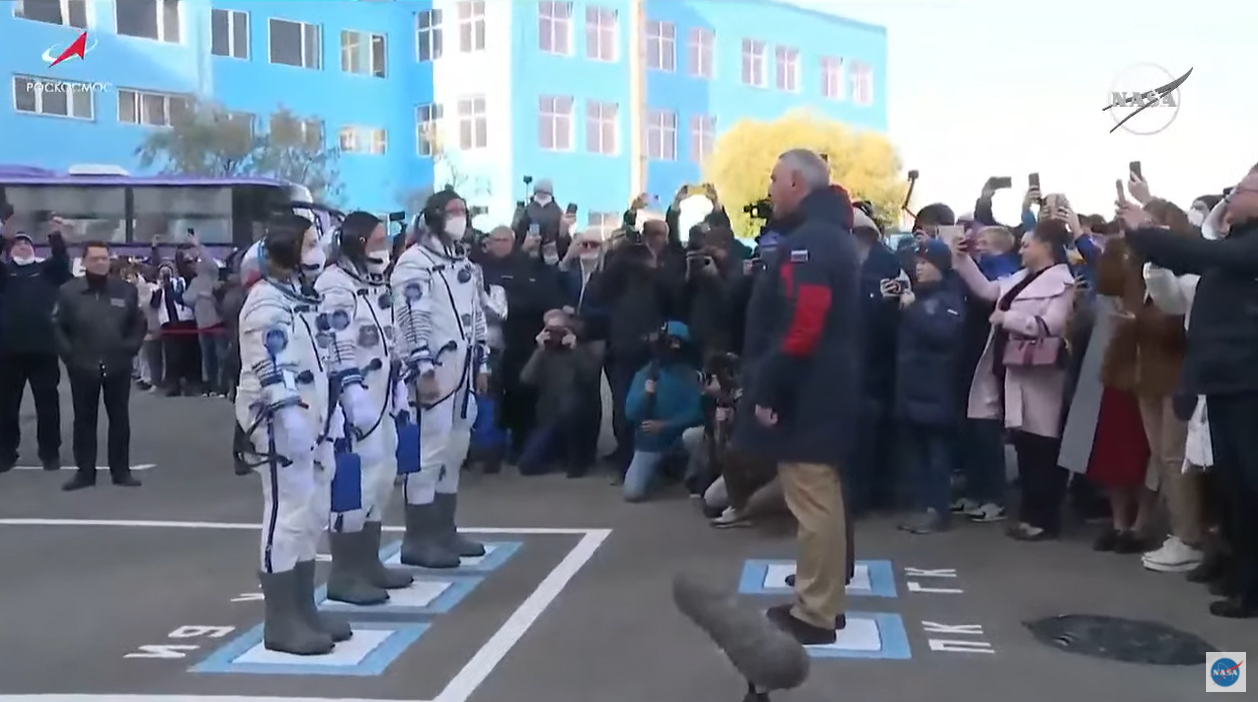
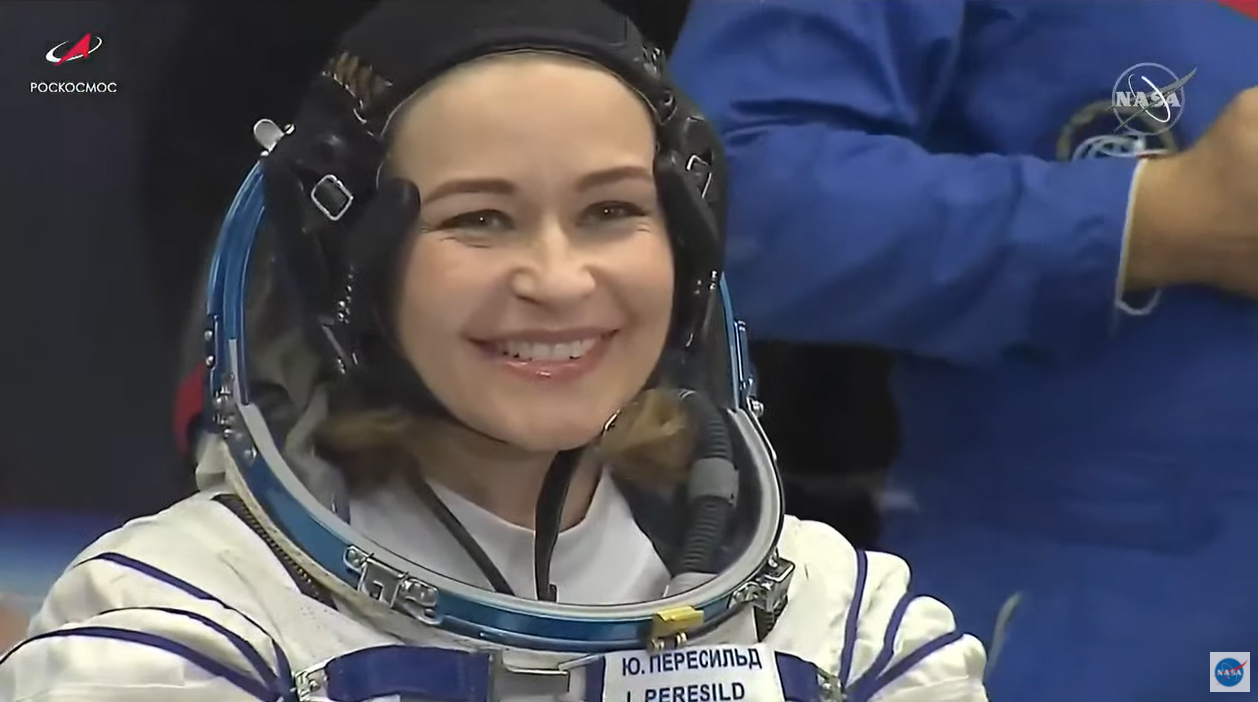
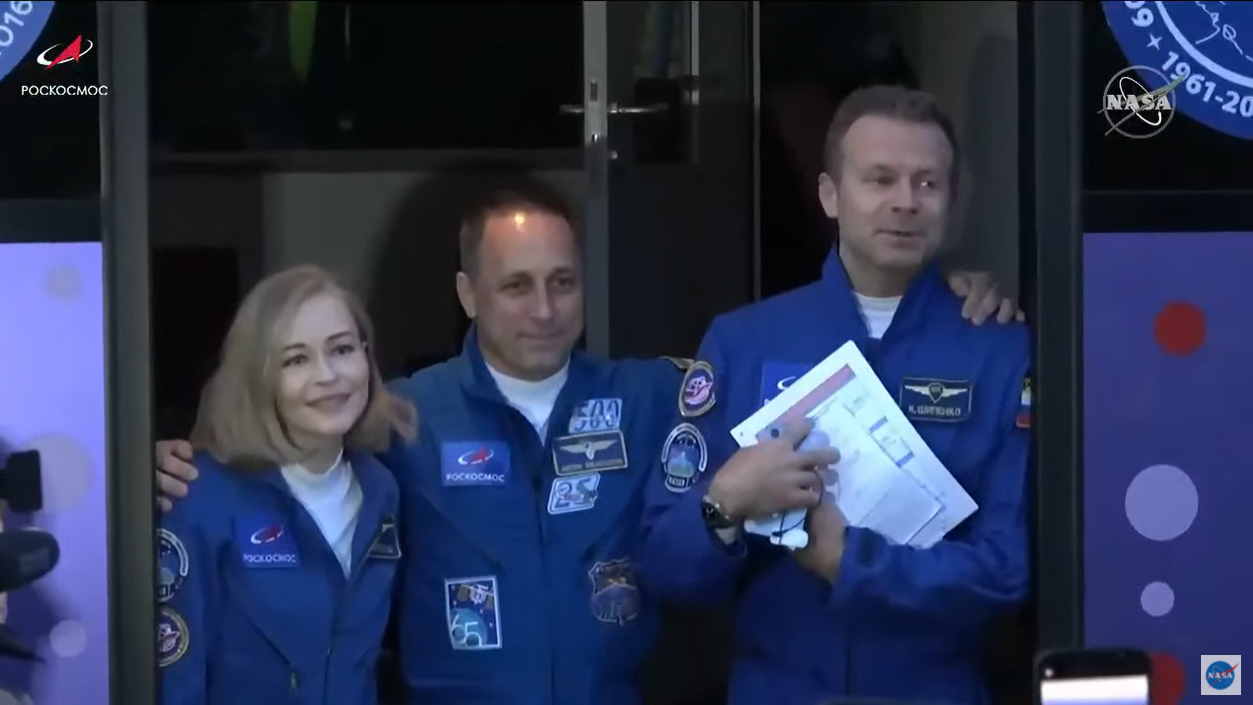
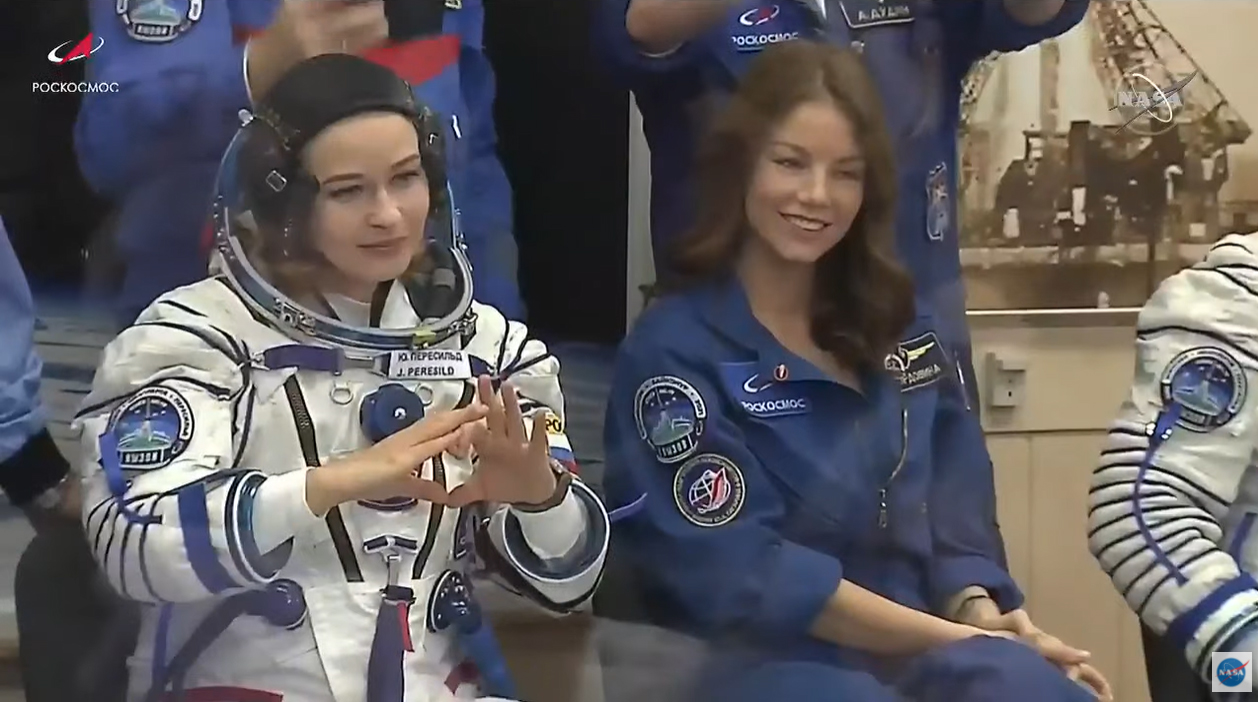

Here are a few views of the Soyuz MS-18 crew taken in the hours before launch. NASA TV is showcasing their pre-flight activities with a series of video clips as we near the T-10 minute mark for launch.
Russia launching film crew to International Space Station
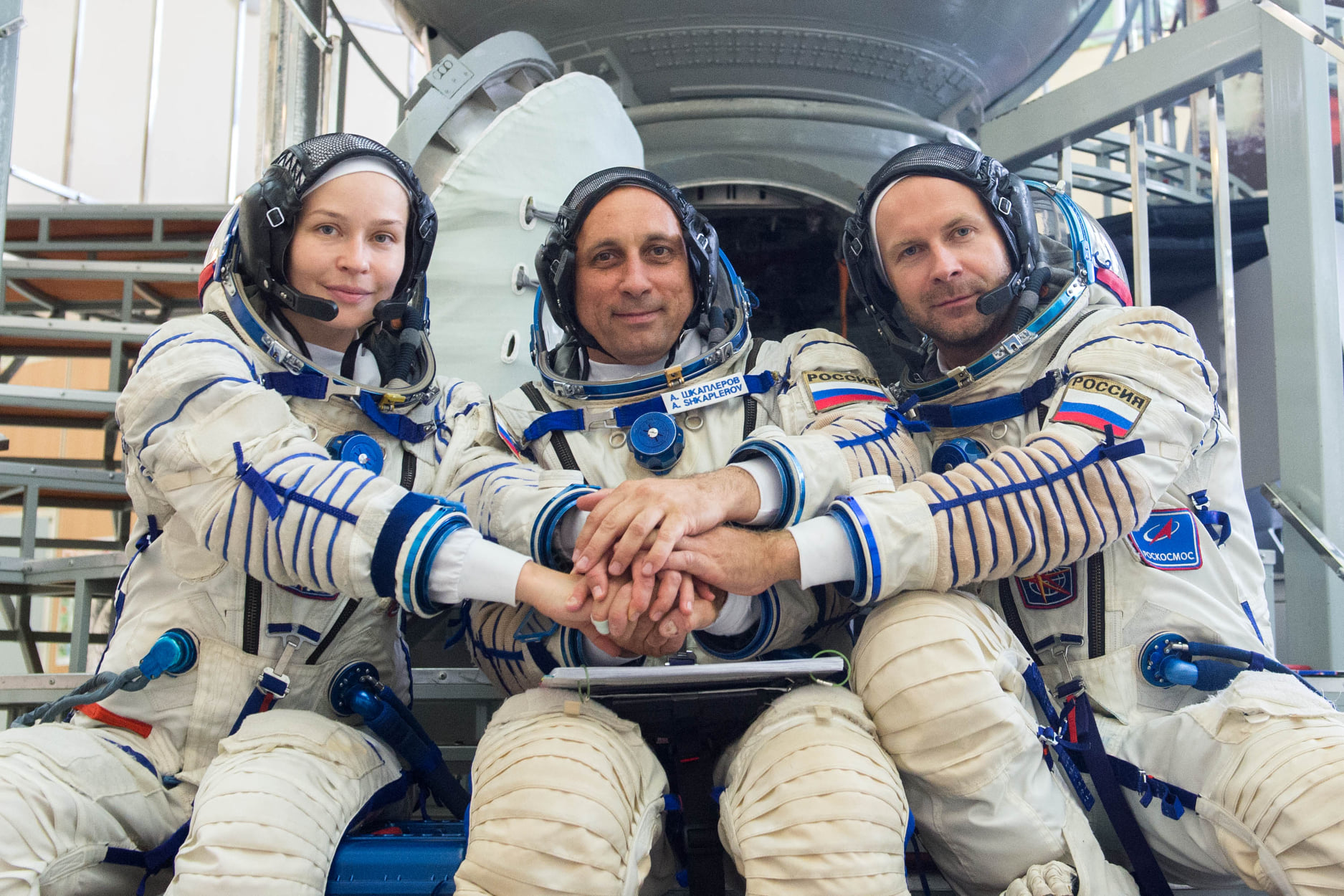
Russia is counting down to launching the world’s first film crew to the International Space Station on a Soyuz spacecraft. Liftoff is set for 4:55 a.m. EDT (0855 GMT) from Launch Site 31 at Baikonur Cosmodrome, Kazakhstan.
The Soyuz is carrying Russian actress Yulia Perselid and director Klim Shipenko alongside veteran cosmonaut Anton Shklaperov. Perselid and Shipenko will spend 12 days in space filming scenes for a feature film called “The Challenge” while Shklaperov will begin a months-long stay on the space station.
The trio are currently tucked inside their Soyuz spacecraft and rocket as they await launch.
[ad_2]